George Washington
George Washington, a Founding Father of the United States, led the Continental Army to victory in the Revolutionary War and was America’s first president.
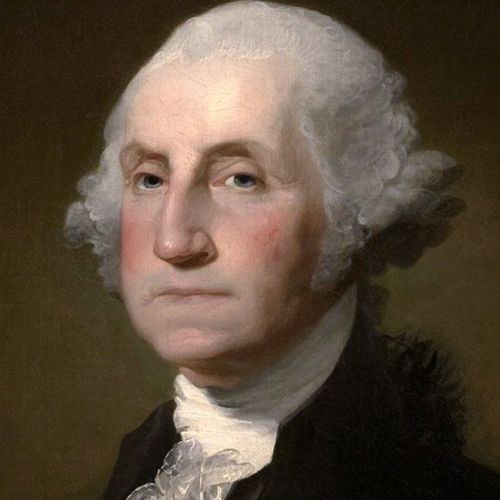
(1732-1799)

Who Was George Washington?
George Washington was a Virginia plantation owner who served as a general and commander-in-chief of the colonial armies during the American Revolutionary War, and later became the first president of the United States, serving from 1789 to 1797.
Early Life and Family
Washington was born on February 22, 1732, in Westmoreland County, Virginia. He was the eldest of Augustine and Mary’s six children, all of whom survived into adulthood.
The family lived on Pope's Creek in Westmoreland County, Virginia. They were moderately prosperous members of Virginia's "middling class."
But much of the family’s wealth in England was lost under the Puritan government of Oliver Cromwell . In 1657 Washington’s grandfather, Lawrence Washington, migrated to Virginia. Little information is available about the family in North America until Washington’s father, Augustine, was born in 1694.
Augustine Washington was an ambitious man who acquired land and enslaved people, built mills, and grew tobacco. For a time, he had an interest in opening iron mines. He married his first wife, Jane Butler, and they had three children. Jane died in 1729 and Augustine married Mary Ball in 1731.
Mount Vernon
In 1735, Augustine moved the family up the Potomac River to another Washington family home, Little Hunting Creek Plantation — later renamed Mount Vernon .
They moved again in 1738 to Ferry Farm on the Rappahannock River, opposite Fredericksburg, Virginia, where Washington spent much of his youth.
Childhood and Education
Little is known about Washington's childhood, which fostered many of the fables later biographers manufactured to fill in the gap. Among these are the stories that Washington threw a silver dollar across the Potomac and after chopping down his father's prize cherry tree, he openly confessed to the crime.
It is known that from age seven to 15, Washington was home-schooled and studied with the local church sexton and later a schoolmaster in practical math, geography, Latin and the English classics.
But much of the knowledge he would use the rest of his life was through his acquaintance with woodsmen and the plantation foreman. By his early teens, he had mastered growing tobacco, stock raising and surveying.
Washington’s father died when he was 11 and he became the ward of his half-brother, Lawrence, who gave him a good upbringing. Lawrence had inherited the family's Little Hunting Creek Plantation and married Anne Fairfax, the daughter of Colonel William Fairfax, patriarch of the well-to-do Fairfax family. Under her tutelage, Washington was schooled in the finer aspects of colonial culture.
In 1748, when he was 16, Washington traveled with a surveying party plotting land in Virginia’s western territory. The following year, aided by Lord Fairfax, Washington received an appointment as the official surveyor of Culpeper County.
For two years he was very busy surveying the land in Culpeper, Frederick and Augusta counties. The experience made him resourceful and toughened his body and mind. It also piqued his interest in western land holdings, an interest that endured throughout his life with speculative land purchases and a belief that the future of the nation lay in colonizing the West.
In July 1752, Washington's brother, Lawrence, died of tuberculosis, making him the heir apparent of the Washington lands. Lawrence’s only child, Sarah, died two months later and Washington became the head of one of Virginia's most prominent estates, Mount Vernon. He was 20 years old.
Throughout his life, he would hold farming as one of the most honorable professions and he was most proud of Mount Vernon. Washington would gradually increase his landholdings there to about 8,000 acres
Pre-Revolutionary Military Career
In the early 1750s, France and Britain were at peace. However, the French military had begun occupying much of the Ohio Valley, protecting the King's land interests, particularly fur trappers and French settlers. But the borderlands of this area were unclear and prone to dispute between the two countries.
Washington showed early signs of natural leadership and shortly after Lawrence's death, Virginia's Lieutenant Governor, Robert Dinwiddie, appointed Washington adjutant with a rank of major in the Virginia militia.
French and Indian War
On October 31, 1753, Dinwiddie sent Washington to Fort LeBoeuf, at what is now Waterford, Pennsylvania, to warn the French to remove themselves from land claimed by Britain. The French politely refused and Washington made a hasty ride back to Williamsburg, Virginia's colonial capital.
Dinwiddie sent Washington back with troops and they set up a post at Great Meadows. Washington's small force attacked a French post at Fort Duquesne, killing the commander, Coulon de Jumonville, and nine others and taking the rest prisoners. The French and Indian War had begun.
The French counterattacked and drove Washington and his men back to his post at Great Meadows (later named "Fort Necessity.") After a full day siege, Washington surrendered and was soon released and returned to Williamsburg, promising not to build another fort on the Ohio River.
Though a little embarrassed at being captured, he was grateful to receive the thanks from the House of Burgesses and see his name mentioned in the London gazettes.
Washington was given the honorary rank of colonel and joined British General Edward Braddock's army in Virginia in 1755. The British had devised a plan for a three-prong assault on French forces attacking Fort Duquesne, Fort Niagara and Crown Point.
During the encounter, the French and their Indian allies ambushed Braddock, who was mortally wounded. Washington escaped injury with four bullet holes in his cloak and two horses shot out from under him. Though he fought bravely, he could do little to turn back the rout and led the defeated army back to safety.
Commander of Virginia Troops
In August 1755, Washington was made commander of all Virginia troops at age 23. He was sent to the frontier to patrol and protect nearly 400 miles of border with some 700 ill-disciplined colonial troops and a Virginia colonial legislature unwilling to support him.
It was a frustrating assignment. His health failed in the closing months of 1757 and he was sent home with dysentery.
In 1758, Washington returned to duty on another expedition to capture Fort Duquesne. A friendly-fire incident took place, killing 14 and wounding 26 of Washington's men. However, the British were able to score a major victory, capturing Fort Duquesne and control of the Ohio Valley.
Washington retired from his Virginia regiment in December 1758. His experience during the war was generally frustrating, with key decisions made slowly, poor support from the colonial legislature and poorly trained recruits.
Washington applied for a commission with the British army but was turned down. In 1758, he resigned his commission and returned to Mount Vernon disillusioned. The same year, he entered politics and was elected to Virginia's House of Burgesses.
Martha Washington
A month after leaving the army, Washington married Martha Dandridge Custis, a widow, who was only a few months older than he. Martha brought to the marriage a considerable fortune: an 18,000-acre estate, from which Washington personally acquired 6,000 acres.
With this and land he was granted for his military service, Washington became one of the more wealthy landowners in Virginia. The marriage also brought Martha's two young children, John (Jacky) and Martha (Patsy), ages six and four, respectively.
Washington lavished great affection on both of them, and was heartbroken when Patsy died just before the Revolution. Jacky died during the Revolution, and Washington adopted two of his children.
Enslaved People
During his retirement from the Virginia militia until the start of the Revolution, Washington devoted himself to the care and development of his land holdings, attending the rotation of crops, managing livestock and keeping up with the latest scientific advances.
By the 1790s, Washington kept over 300 enslaved people at Mount Vernon. He was said to dislike the institution of slavery , but accepted the fact that it was legal.
Washington, in his will, made his displeasure with slavery known, as he ordered that all his enslaved people be granted their freedom upon the death of his wife Martha. (This act of generosity, however, applied to fewer than half of Mount Vernon's enslaved people: Those enslaved people owned by the Custis family were given to Martha’s grandchildren after her death.)
Washington loved the landed gentry's life of horseback riding, fox hunts, fishing and cotillions. He worked six days a week, often taking off his coat and performing manual labor with his workers. He was an innovative and responsible landowner, breeding cattle and horses and tending to his fruit orchards.
Much has been made of the fact that Washington used false teeth or dentures for most of his adult life. Indeed, Washington's correspondence to friends and family makes frequent references to aching teeth, inflamed gums and various dental woes.
Washington had one tooth pulled when he was just 24 years old, and by the time of his inauguration in 1789 he had just one natural tooth left. But his false teeth weren't made of wood, as some legends suggest.
Instead, Washington's false teeth were fashioned from human teeth — including teeth from enslaved people and his own pulled teeth — ivory, animal teeth and assorted metals.
Washington's dental problems, according to some historians, probably impacted the shape of his face and may have contributed to his quiet, somber demeanor: During the Constitutional Convention, Washington addressed the gathered dignitaries only once.
American Revolution
Though the British Proclamation Act of 1763 — prohibiting settlement beyond the Alleghenies — irritated Washington and he opposed the Stamp Act of 1765, he did not take a leading role in the growing colonial resistance against the British until the widespread protest of the Townshend Acts in 1767.
His letters of this period indicate he was totally opposed to the colonies declaring independence. However, by 1767, he wasn't opposed to resisting what he believed were fundamental violations by the Crown of the rights of Englishmen.
In 1769, Washington introduced a resolution to the House of Burgesses calling for Virginia to boycott British goods until the Acts were repealed.
After the passage of the Coercive Acts in 1774, Washington chaired a meeting in which the Fairfax Resolves were adopted, calling for the convening of the Continental Congress and the use of armed resistance as a last resort. He was selected as a delegate to the First Continental Congress in March 1775.
Commander-in-Chief of the Continental Army
After the battles of Lexington and Concord in April 1775, the political dispute between Great Britain and her North American colonies escalated into an armed conflict. In May, Washington traveled to the Second Continental Congress in Philadelphia dressed in a military uniform, indicating that he was prepared for war.
On June 15th, he was appointed Major General and Commander-in-Chief of the colonial forces against Great Britain. As was his custom, he did not seek out the office of commander, but he faced no serious competition.
Washington was the best choice for a number of reasons: he had the prestige, military experience and charisma for the job and he had been advising Congress for months.
Another factor was political: The Revolution had started in New England and at the time, they were the only colonies that had directly felt the brunt of British tyranny. Virginia was the largest British colony and New England needed Southern colonial support.
Political considerations and force of personality aside, Washington was not necessarily qualified to wage war on the world's most powerful nation. Washington's training and experience were primarily in frontier warfare involving small numbers of soldiers. He wasn't trained in the open-field style of battle practiced by the commanding British generals.
He also had no practical experience maneuvering large formations of infantry, commanding cavalry or artillery, or maintaining the flow of supplies for thousands of men in the field. But he was courageous and determined and smart enough to keep one step ahead of the enemy.
Washington and his small army did taste victory early in March 1776 by placing artillery above Boston, on Dorchester Heights, forcing the British to withdraw. Washington then moved his troops into New York City. But in June, a new British commander, Sir William Howe , arrived in the Colonies with the largest expeditionary force Britain had ever deployed to date.
Crossing the Delaware
In August 1776, the British army launched an attack and quickly took New York City in the largest battle of the war. Washington's army was routed and suffered the surrender of 2,800 men.
He ordered the remains of his army to retreat into Pennsylvania across the Delaware River. Confident the war would be over in a few months, General Howe wintered his troops at Trenton and Princeton, leaving Washington free to attack at the time and place of his choosing.
On Christmas night, 1776, Washington and his men returned across the Delaware River and attacked unsuspecting Hessian mercenaries at Trenton, forcing their surrender. A few days later, evading a force that had been sent to destroy his army, Washington attacked the British again, this time at Princeton, dealing them a humiliating loss.
Victories and Losses
General Howe's strategy was to capture colonial cities and stop the rebellion at key economic and political centers. He never abandoned the belief that once the Americans were deprived of their major cities, the rebellion would wither.
In the summer of 1777, he mounted an offensive against Philadelphia. Washington moved in his army to defend the city but was defeated at the Battle of Brandywine . Philadelphia fell two weeks later.
In the late summer of 1777, the British army sent a major force, under the command of John Burgoyne, south from Quebec to Saratoga, New York, to split the rebellion between New England and the southern colonies. But the strategy backfired, as Burgoyne became trapped by the American armies led by Horatio Gates and Benedict Arnold at the Battle of Saratoga .
Without support from Howe, who couldn't reach him in time, Burgoyne was forced to surrender his entire 6,200 man army. The victory was a major turning point in the war as it encouraged France to openly ally itself with the American cause for independence.
Through all of this, Washington discovered an important lesson: The political nature of war was just as important as the military one. Washington began to understand that military victories were as important as keeping the resistance alive.
Americans began to believe that they could meet their objective of independence without defeating the British army. Meanwhile, British General Howe clung to the strategy of capturing colonial cities in hopes of smothering the rebellion.
Howe didn't realize that capturing cities like Philadelphia and New York would not unseat colonial power. The Congress would just pack up and meet elsewhere.
Valley Forge
The darkest time for Washington and the Continental Army was during the winter of 1777 at Valley Forge, Pennsylvania. The 11,000-man force went into winter quarters and over the next six months suffered thousands of deaths, mostly from disease. But the army emerged from the winter still intact and in relatively good order.
Realizing their strategy of capturing colonial cities had failed, the British command replaced General Howe with Sir Henry Clinton. The British army evacuated Philadelphia to return to New York City. Washington and his men delivered several quick blows to the moving army, attacking the British flank near Monmouth Courthouse. Though a tactical standoff, the encounter proved Washington's army capable of open field battle.
For the remainder of the war, Washington was content to keep the British confined to New York, although he never totally abandoned the idea of retaking the city. The alliance with France had brought a large French army and a navy fleet.
Washington and his French counterparts decided to let Clinton be and attack British General Charles Cornwallis at Yorktown, Virginia. Facing the combined French and Colonial armies and the French fleet of 29 warships at his back, Cornwallis held out as long as he could, but on October 19, 1781, he surrendered his forces.
Revolutionary War Victory
Washington had no way of knowing the Yorktown victory would bring the war to a close.
The British still had 26,000 troops occupying New York City, Charleston and Savannah, plus a large fleet of warships in the Colonies. By 1782, the French army and navy had departed, the Continental treasury was depleted, and most of his soldiers hadn’t been paid for several years.
A near-mutiny was avoided when Washington convinced Congress to grant a five-year bonus for soldiers in March 1783. By November of that year, the British had evacuated New York City and other cities and the war was essentially over.
The Americans had won their independence. Washington formally bade his troops farewell and on December 23, 1783, he resigned his commission as commander-in-chief of the army and returned to Mount Vernon.
For four years, Washington attempted to fulfill his dream of resuming life as a gentleman farmer and to give his much-neglected Mount Vernon plantation the care and attention it deserved.
The war had been costly to the Washington family with lands neglected, no exports of goods, and the depreciation of paper money. But Washington was able to repair his fortunes with a generous land grant from Congress for his military service and become profitable once again.
Constitutional Convention
In 1787, Washington was again called to the duty of his country. Since independence, the young republic had been struggling under the Articles of Confederation , a structure of government that centered power with the states.
But the states were not unified. They fought among themselves over boundaries and navigation rights and refused to contribute to paying off the nation's war debt. In some instances, state legislatures imposed tyrannical tax policies on their own citizens.
Washington was intensely dismayed at the state of affairs, but only slowly came to the realization that something should be done about it. Perhaps he wasn't sure the time was right so soon after the Revolution to be making major adjustments to the democratic experiment. Or perhaps because he hoped he would not be called upon to serve, he remained noncommittal.
But when Shays' Rebellion erupted in Massachusetts, Washington knew something needed to be done to improve the nation’s government. In 1786, Congress approved a convention to be held in Philadelphia to amend the Articles of Confederation.
At the Constitutional Convention , Washington was unanimously chosen as president. Washington, James Madison and Alexander Hamilton had come to the conclusion that it wasn't amendments that were needed, but a new constitution that would give the national government more authority.
In the end, the Convention produced a plan for government that not only would address the country's current problems, but would endure through time. After the convention adjourned, Washington's reputation and support for the new government were indispensable to the ratification of the new U.S. Constitution .
The opposition was strident, if not organized, with many of America's leading political figures — including Patrick Henry and Sam Adams — condemning the proposed government as a grab for power. Even in Washington's native Virginia, the Constitution was ratified by only one vote.
DOWNLOAD BIOGRAPHY'S GEORGE WASHINGTON FACT CARD

George Washington: Presidency
Still hoping to retire to his beloved Mount Vernon, Washington was once again called upon to serve this country.
During the presidential election of 1789, he received a vote from every elector to the Electoral College, the only president in American history to be elected by unanimous approval. He took the oath of office at Federal Hall in New York City, the capital of the United States at the time.
As the first president, Washington was astutely aware that his presidency would set a precedent for all that would follow. He carefully attended to the responsibilities and duties of his office, remaining vigilant to not emulate any European royal court. To that end, he preferred the title "Mr. President," instead of more imposing names that were suggested.
At first he declined the $25,000 salary Congress offered the office of the presidency, for he was already wealthy and wanted to protect his image as a selfless public servant. However, Congress persuaded him to accept the compensation to avoid giving the impression that only wealthy men could serve as president.
Washington proved to be an able administrator. He surrounded himself with some of the most capable people in the country, appointing Hamilton as Secretary of the Treasury and Thomas Jefferson as Secretary of State. He delegated authority wisely and consulted regularly with his cabinet listening to their advice before making a decision.
Washington established broad-ranging presidential authority, but always with the highest integrity, exercising power with restraint and honesty. In doing so, he set a standard rarely met by his successors, but one that established an ideal by which all are judged.
READ MORE: How George Washington’s Personal and Physical Characteristics Helped Him Win the Presidency
Accomplishments
During his first term, Washington adopted a series of measures proposed by Treasury Secretary Hamilton to reduce the nation's debt and place its finances on sound footing.
His administration also established several peace treaties with Native American tribes and approved a bill establishing the nation's capital in a permanent district along the Potomac River.
Whiskey Rebellion
Then, in 1791, Washington signed a bill authorizing Congress to place a tax on distilled spirits, which stirred protests in rural areas of Pennsylvania.
Quickly, the protests turned into a full-scale defiance of federal law known as the Whiskey Rebellion . Washington invoked the Militia Act of 1792, summoning local militias from several states to put down the rebellion.
Washington personally took command, marching the troops into the areas of rebellion and demonstrating that the federal government would use force, when necessary, to enforce the law. This was also the only time a sitting U.S. president has led troops into battle.
In foreign affairs, Washington took a cautious approach, realizing that the weak young nation could not succumb to Europe's political intrigues. In 1793, France and Great Britain were once again at war.
At the urging of Hamilton, Washington disregarded the U.S. alliance with France and pursued a course of neutrality. In 1794, he sent John Jay to Britain to negotiate a treaty (known as the "Jay Treaty") to secure a peace with Britain and clear up some issues held over from the Revolutionary War.
The action infuriated Jefferson, who supported the French and felt that the U.S. needed to honor its treaty obligations. Washington was able to mobilize public support for the treaty, which proved decisive in securing ratification in the Senate.
Though controversial, the treaty proved beneficial to the United States by removing British forts along the western frontier, establishing a clear boundary between Canada and the United States, and most importantly, delaying a war with Britain and providing over a decade of prosperous trade and development the fledgling country so desperately needed.
Political Parties
All through his two terms as president, Washington was dismayed at the growing partisanship within the government and the nation. The power bestowed on the federal government by the Constitution made for important decisions, and people joined together to influence those decisions. The formation of political parties at first were influenced more by personality than by issues.
As Treasury secretary, Hamilton pushed for a strong national government and an economy built in industry. Secretary of State Jefferson desired to keep government small and center power more at the local level, where citizens' freedom could be better protected. He envisioned an economy based on farming.
Those who followed Hamilton's vision took the name Federalists and people who opposed those ideas and tended to lean toward Jefferson’s view began calling themselves Democratic-Republicans. Washington despised political partisanship, believing that ideological differences should never become institutionalized. He strongly felt that political leaders should be free to debate important issues without being bound by party loyalty.
However, Washington could do little to slow the development of political parties. The ideals promoted by Hamilton and Jefferson produced a two-party system that proved remarkably durable. These opposing viewpoints represented a continuation of the debate over the proper role of government, a debate that began with the conception of the Constitution and continues today.
Washington's administration was not without its critics who questioned what they saw as extravagant conventions in the office of the president. During his two terms, Washington rented the best houses available and was driven in a coach drawn by four horses, with outriders and lackeys in rich uniforms.
After being overwhelmed by callers, he announced that except for the scheduled weekly reception open to all, he would only see people by appointment. Washington entertained lavishly, but in private dinners and receptions at invitation only. He was, by some, accused of conducting himself like a king.
However, ever mindful his presidency would set the precedent for those to follow, he was careful to avoid the trappings of a monarchy. At public ceremonies, he did not appear in a military uniform or the monarchical robes. Instead, he dressed in a black velvet suit with gold buckles and powdered hair, as was the common custom. His reserved manner was more due to inherent reticence than any excessive sense of dignity.
Desiring to return to Mount Vernon and his farming, and feeling the decline of his physical powers with age, Washington refused to yield to the pressures to serve a third term, even though he would probably not have faced any opposition.
By doing this, he was again mindful of the precedent of being the "first president," and chose to establish a peaceful transition of government.
Farewell Address
In the last months of his presidency, Washington felt he needed to give his country one last measure of himself. With the help of Hamilton, he composed his Farewell Address to the American people, which urged his fellow citizens to cherish the Union and avoid partisanship and permanent foreign alliances.
In March 1797, he turned over the government to John Adams and returned to Mount Vernon, determined to live his last years as a simple gentleman farmer. His last official act was to pardon the participants in the Whiskey Rebellion.
Upon returning to Mount Vernon in the spring of 1797, Washington felt a reflective sense of relief and accomplishment. He had left the government in capable hands, at peace, its debts well-managed, and set on a course of prosperity.
He devoted much of his time to tending the farm's operations and management. Although he was perceived to be wealthy, his land holdings were only marginally profitable.
On a cold December day in 1799, Washington spent much of it inspecting the farm on horseback in a driving snowstorm. When he returned home, he hastily ate his supper in his wet clothes and then went to bed.
The next morning, on December 13, he awoke with a severe sore throat and became increasingly hoarse. He retired early, but awoke around 3 a.m. and told Martha that he felt very sick. The illness progressed until he died late in the evening of December 14, 1799.
The news of Washington's death at age 67 spread throughout the country, plunging the nation into a deep mourning. Many towns and cities held mock funerals and presented hundreds of eulogies to honor their fallen hero. When the news of this death reached Europe, the British fleet paid tribute to his memory, and Napoleon ordered ten days of mourning.
Washington could have been a king. Instead, he chose to be a citizen. He set many precedents for the national government and the presidency: The two-term limit in office, only broken once by Franklin D. Roosevelt , was later ensconced in the Constitution's 22nd Amendment.
He crystallized the power of the presidency as a part of the government’s three branches of government , able to exercise authority when necessary, but also accept the checks and balances of power inherent in the system.
He was not only considered a military and revolutionary hero, but a man of great personal integrity, with a deep sense of duty, honor and patriotism. For over 200 years, Washington has been acclaimed as indispensable to the success of the Revolution and the birth of the nation.
But his most important legacy may be that he insisted he was dispensable, asserting that the cause of liberty was larger than any single individual.
Watch "George Washington: Founding Father" on HISTORY Vault

QUICK FACTS
- Name: George Washington
- Birth Year: 1732
- Birth date: February 22, 1732
- Birth State: Virginia
- Birth City: Westmoreland County
- Birth Country: United States
- Gender: Male
- Best Known For: George Washington, a Founding Father of the United States, led the Continental Army to victory in the Revolutionary War and was America’s first president.
- U.S. Politics
- Astrological Sign: Pisces
- Death Year: 1799
- Death date: December 14, 1799
- Death State: Virginia
- Death City: Mount Vernon
- Death Country: United States
We strive for accuracy and fairness.If you see something that doesn't look right, contact us !
CITATION INFORMATION
- Article Title: George Washington Biography
- Author: Biography.com Editors
- Website Name: The Biography.com website
- Url: https://www.biography.com/political-figures/george-washington
- Access Date:
- Publisher: A&E; Television Networks
- Last Updated: September 11, 2020
- Original Published Date: April 3, 2014
- Observe good faith and justice towards all nations; cultivate peace and harmony with all.
- When we assumed the soldier, we did not lay aside the citizen.
- Be courteous to all, but intimate with few.
- [T]he preservation of the sacred fire of liberty, and the destiny of the republican model of government, are justly considered as deeply, perhaps as finally staked, on the experiment entrusted to the hands of the American people.
- We should never despair, our situation before has been unpromising and has changed for the better, so I trust, it will again. If new difficulties arise, we must only put forth new exertions and proportion our efforts to the exigency of the times.
- There can be no greater error than to expect or calculate upon real favors from nation to nation.
- [M]y movements to the chair of government will be accompanied by feelings not unlike those of a culprit who is going to the place of his execution.
- True friendship is a plant of slow growth, and must undergo and withstand the shocks of adversity before it is entitled to the appellation.
- Of all the dispositions and habits which lead to political prosperity, religion and morality are indispensable supports.
- I heard the bullets whistle, and, believe me, there is something charming in the sound.
- Discipline is the soul of an army. It makes small numbers formidable; procures success to the weak, and esteem to all.
- The basis of our political Systems is the right of the people to make and to alter their Constitutions of Government. But the Constitution which at any time exists, 'till changed by an explicit and authentic act of the whole People, is sacredly obligatory upon all.
- I hold the maxim no less applicable to public than to private affairs, that honesty is the best policy.
- The bosom of America is open to receive not only the opulent and respectable stranger, but the oppressed and persecuted of all nations and religions.
U.S. Presidents

Oppenheimer and Truman Met Once. It Went Badly.
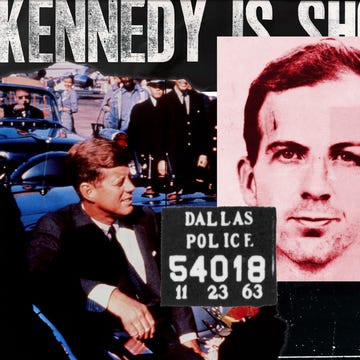
Who Killed JFK? You Won’t Believe Us Anyway

John F. Kennedy

Jimmy Carter
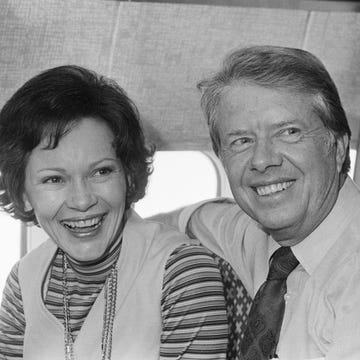
Inside Jimmy and Rosalynn Carter’s 77-Year Love

Abraham Lincoln
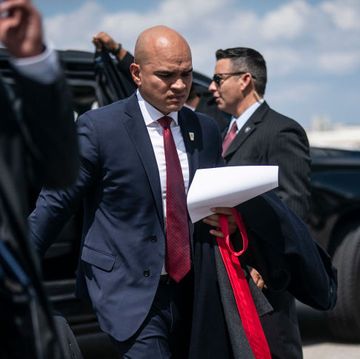
Who Is Walt Nauta, the Man Indicted with Trump?
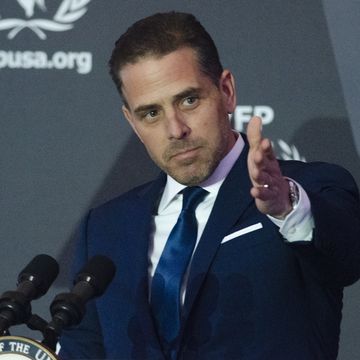
Hunter Biden and Other Presidential Problem Kids
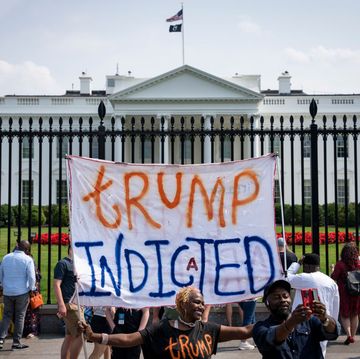
Controversial Judge Aileen Cannon Not Out Just Yet
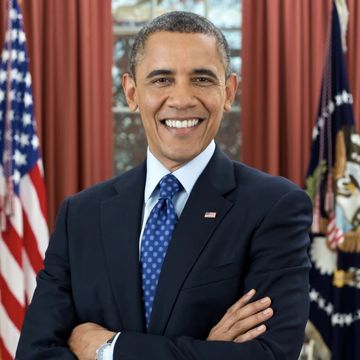
Barack Obama
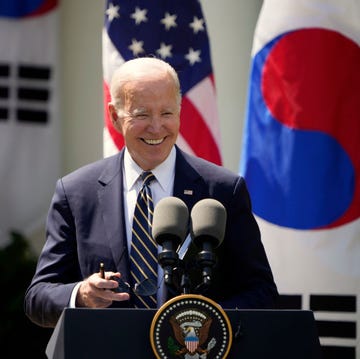
10 Celebrities the Same Age as President Joe Biden
- History Classics
- Your Profile
- Find History on Facebook (Opens in a new window)
- Find History on Twitter (Opens in a new window)
- Find History on YouTube (Opens in a new window)
- Find History on Instagram (Opens in a new window)
- Find History on TikTok (Opens in a new window)
- This Day In History
- History Podcasts
- History Vault
George Washington
By: History.com Editors
Updated: February 7, 2024 | Original: October 29, 2009

George Washington (1732-99) was commander in chief of the Continental Army during the American Revolutionary War (1775-83) and served two terms as the first U.S. president, from 1789 to 1797. The son of a prosperous planter, Washington was raised in colonial Virginia. As a young man, he worked as a surveyor then fought in the French and Indian War (1754-63).
During the American Revolution, he led the colonial forces to victory over the British and became a national hero. In 1787, he was elected president of the convention that wrote the U.S. Constitution. Two years later, Washington became America’s first president. Realizing that the way he handled the job would impact how future presidents approached the position, he handed down a legacy of strength, integrity and national purpose. Less than three years after leaving office, he died at his Virginia plantation, Mount Vernon, at age 67.
George Washington's Early Years
George Washington was born on February 22, 1732 , at his family’s plantation on Pope’s Creek in Westmoreland County, in the British colony of Virginia , to Augustine Washington (1694-1743) and his second wife, Mary Ball Washington (1708-89). George, the eldest of Augustine and Mary Washington’s six children, spent much of his childhood at Ferry Farm, a plantation near Fredericksburg, Virginia. After Washington’s father died when he was 11, it’s likely he helped his mother manage the plantation.
Did you know? At the time of his death in 1799, George Washington owned some 300 enslaved people. However, before his passing, he had become opposed to slavery, and in his will, he ordered that his enslaved workers be freed after his wife's death.
Few details about Washington’s early education are known, although children of prosperous families like his typically were taught at home by private tutors or attended private schools. It’s believed he finished his formal schooling at around age 15.
As a teenager, Washington, who had shown an aptitude for mathematics, became a successful surveyor. His surveying expeditions into the Virginia wilderness earned him enough money to begin acquiring land of his own.
In 1751, Washington made his only trip outside of America, when he traveled to Barbados with his older half-brother Lawrence Washington (1718-52), who was suffering from tuberculosis and hoped the warm climate would help him recuperate. Shortly after their arrival, George contracted smallpox. He survived, although the illness left him with permanent facial scars. In 1752, Lawrence, who had been educated in England and served as Washington’s mentor, died. Washington eventually inherited Lawrence’s estate, Mount Vernon , on the Potomac River near Alexandria, Virginia.
An Officer and Gentleman Farmer
In December 1752, Washington, who had no previous military experience, was made a commander of the Virginia militia. He saw action in the French and Indian War and was eventually put in charge of all of Virginia’s militia forces. By 1759, Washington had resigned his commission, returned to Mount Vernon and was elected to the Virginia House of Burgesses, where he served until 1774. In January 1759, he married Martha Dandridge Custis (1731-1802), a wealthy widow with two children. Washington became a devoted stepfather to her children; he and Martha Washington never had any offspring of their own.
In the ensuing years, Washington expanded Mount Vernon from 2,000 acres into an 8,000-acre property with five farms. He grew a variety of crops, including wheat and corn, bred mules and maintained fruit orchards and a successful fishery. He was deeply interested in farming and continually experimented with new crops and methods of land conservation.
George Washington During the American Revolution
Washington proved to be a better general than military strategist. His strength lay not in his genius on the battlefield but in his ability to keep the struggling colonial army together. His troops were poorly trained and lacked food, ammunition and other supplies (soldiers sometimes even went without shoes in winter). However, Washington was able to give them direction and motivation. His leadership during the winter of 1777-1778 at Valley Forge was a testament to his power to inspire his men to keep going.
By the late 1760s, Washington had experienced firsthand the effects of rising taxes imposed on American colonists by the British and came to believe that it was in the best interests of the colonists to declare independence from England. Washington served as a delegate to the First Continental Congress in 1774 in Philadelphia. By the time the Second Continental Congress convened a year later, the American Revolution had begun in earnest, and Washington was named commander in chief of the Continental Army.
Over the course of the grueling eight-year war, the colonial forces won few battles but consistently held their own against the British. In October 1781, with the aid of the French (who allied themselves with the colonists over their rivals the British), the Continental forces were able to capture British troops under General Charles Cornwallis (1738-1805) in the Battle of Yorktown . This action effectively ended the Revolutionary War and Washington was declared a national hero.
America’s First President
In 1783, with the signing of the Treaty of Paris between Great Britain and the U.S., Washington, believing he had done his duty, gave up his command of the army and returned to Mount Vernon, intent on resuming his life as a gentleman farmer and family man. However, in 1787, he was asked to attend the Constitutional Convention in Philadelphia and head the committee to draft the new constitution . His impressive leadership there convinced the delegates that he was by far the most qualified man to become the nation’s first president.
At first, Washington balked. He wanted to, at last, return to a quiet life at home and leave governing the new nation to others. But public opinion was so strong that eventually he gave in. The first presidential election was held on January 7, 1789, and Washington won handily. John Adams (1735-1826), who received the second-largest number of votes, became the nation’s first vice president. The 57-year-old Washington was inaugurated on April 30, 1789, in New York City. Because Washington, D.C. , America’s future capital city wasn’t yet built, he lived in New York and Philadelphia. While in office, he signed a bill establishing a future, permanent U.S. capital along the Potomac River—the city later named Washington, D.C., in his honor.
George Washington’s Accomplishments
The United States was a small nation when Washington took office, consisting of 11 states and approximately 4 million people, and there was no precedent for how the new president should conduct domestic or foreign business. Mindful that his actions would likely determine how future presidents were expected to govern, Washington worked hard to set an example of fairness, prudence and integrity. In foreign matters, he supported cordial relations with other countries but also favored a position of neutrality in foreign conflicts. Domestically, he nominated the first chief justice of the U.S. Supreme Court , John Jay (1745-1829), signed a bill establishing the first national bank, the Bank of the United States , and set up his own presidential cabinet .
His two most prominent cabinet appointees were Secretary of State Thomas Jefferson (1743-1826) and Secretary of the Treasury Alexander Hamilton (1755-1804), two men who disagreed strongly on the role of the federal government. Hamilton favored a strong central government and was part of the Federalist Party , while Jefferson favored stronger states’ rights as part of the Democratic-Republican Party, the forerunner to the Democratic Party . Washington believed that divergent views were critical for the health of the new government, but he was distressed at what he saw as an emerging partisanship.
George Washington’s presidency was marked by a series of firsts. He signed the first United States copyright law, protecting the copyrights of authors. He also signed the first Thanksgiving proclamation, making November 26 a national day of Thanksgiving for the end of the war for American independence and the successful ratification of the Constitution.
During Washington’s presidency, Congress passed the first federal revenue law, a tax on distilled spirits. In July 1794, farmers in Western Pennsylvania rebelled over the so-called “whiskey tax.” Washington called in over 12,000 militiamen to Pennsylvania to dissolve the Whiskey Rebellion in one of the first major tests of the authority of the national government.
Under Washington’s leadership, the states ratified the Bill of Rights , and five new states entered the union: North Carolina (1789), Rhode Island (1790), Vermont (1791), Kentucky (1792) and Tennessee (1796).
In his second term, Washington issued the proclamation of neutrality to avoid entering the 1793 war between Great Britain and France. But when French minister to the United States Edmond Charles Genet—known to history as “Citizen Genet”—toured the United States, he boldly flaunted the proclamation, attempting to set up American ports as French military bases and gain support for his cause in the Western United States. His meddling caused a stir between Federalists and Democratic-Republicans, widening the rift between parties and making consensus-building more difficult.
In 1795, Washington signed the “Treaty of Amity Commerce and Navigation, between His Britannic Majesty; and The United States of America,” or Jay’s Treaty , so-named for John Jay , who had negotiated it with the government of King George III . It helped the U.S. avoid war with Great Britain, but also rankled certain members of Congress back home and was fiercely opposed by Thomas Jefferson and James Madison . Internationally, it caused a stir among the French, who believed it violated previous treaties between the United States and France.
Washington’s administration signed two other influential international treaties. Pinckney’s Treaty of 1795, also known as the Treaty of San Lorenzo, established friendly relations between the United States and Spain, firming up borders between the U.S. and Spanish territories in North America and opening up the Mississippi to American traders. The Treaty of Tripoli, signed the following year, gave American ships access to Mediterranean shipping lanes in exchange for a yearly tribute to the Pasha of Tripoli.
George Washington’s Retirement to Mount Vernon and Death
In 1796, after two terms as president and declining to serve a third term, Washington finally retired. In Washington’s farewell address , he urged the new nation to maintain the highest standards domestically and to keep involvement with foreign powers to a minimum. The address is still read each February in the U.S. Senate to commemorate Washington’s birthday.
Washington returned to Mount Vernon and devoted his attentions to making the plantation as productive as it had been before he became president. More than four decades of public service had aged him, but he was still a commanding figure. In December 1799, he caught a cold after inspecting his properties in the rain. The cold developed into a throat infection and Washington died on the night of December 14, 1799, at the age of 67. He was entombed at Mount Vernon, which in 1960 was designated a national historic landmark.
Washington left one of the most enduring legacies of any American in history. Known as the “Father of His Country,” his face appears on the U.S. dollar bill and quarter, and dozens of U.S. schools, towns and counties, as well as the state of Washington and the nation’s capital city, are named for him.

HISTORY Vault: Washington
Watch HISTORY's mini-series, 'Washington,' which brings to life the man whose name is known to all, but whose epic story is understood by few.

Sign up for Inside History
Get HISTORY’s most fascinating stories delivered to your inbox three times a week.
By submitting your information, you agree to receive emails from HISTORY and A+E Networks. You can opt out at any time. You must be 16 years or older and a resident of the United States.
More details : Privacy Notice | Terms of Use | Contact Us
What can we help you find?
While we certainly appreciate historical preservation, it looks like your browser is a bit too historic to properly view whitehousehistory.org. — a browser upgrade should do the trick.
Main Content
George Washington

On February 22, 1732, George was born to Augustine and Mary Ball Washington. He spent most of his childhood at Ferry Farm on the Rappahannock River. All of the homes and plantations where Washington lived were maintained by enslaved labor. When George was eleven, his father died and he became a slave owner. As a result, George did not receive a formal education like his older half-brothers. Instead, he helped his mother on the farm and attended a local school in Fredericksburg. For the rest of his life, Washington supplemented his education with reading and self-guided study. At seventeen-years old, George used his family connections to secure appointment as the surveyor for Culpeper County. This position offered adventure, a steady income, and the opportunity to view and purchase unclaimed land. His surveying experience also instilled in George a firm conviction in the importance of westward expansion to the future of the colonies, and later the United States. In 1753, Lieutenant Governor of Virginia Robert Dinwiddie sent twenty-one-year-old Washington, now a Major in the Virginia Regiment, to deliver a message to the French, demanding they abandon the Ohio Valley. Washington later published his account of the trip, giving him an international reputation. A few months later, Washington again marched out west with 150 men to enforce Virginia’s claim. The mission ended in a humiliating surrender at Fort Necessity, followed by Washington’s resignation of his commission. Two years later, Washington again witnessed fighting in the Ohio Country, this time as an aide-de-camp in British General Edward Braddock’s official family. Braddock’s army suffered an overwhelming defeat near the Monongahela River, but Washington was commended for rallying the survivors in the face of chaos. On January 6, 1758, George married Martha Dandridge Custis, a beautiful and charming widow from Virginia. George acquired significant wealth and a partner for the next four decades through the marriage. Between 1759 and 1775, George served many terms in the Virginia House of Burgesses and devoted himself to improving farming practices at his plantation through the labor of the growing enslaved community. After supporting the colonies’ protests against British tax measures in the 1770s, Washington was appointed Commander-in-Chief of the Continental Army by Congress in June 1775. For the next eight years, Washington remained with the army, only leaving camp to attend summons by Congress. Under Washington’s command, the Continental Army lost more battles than it won, constantly struggling to obtain the necessary food, supplies, and ammunition. But the army persisted—and the colonies’ fight for independence could not be extinguished. Washington also served a critical role ensuring that military power remained subordinate to civilian government. He never used his authority to challenge Congress and ended potential military coups within the army’s ranks. When the Treaty of Paris ended the Revolutionary War, Washington resigned his commission to Congress. Washington’s relinquishing of power was nearly unprecedented and made him an international hero. In 1787, Washington was again called to serve when Virginia appointed him as a delegate to the Constitutional Convention. The delegates crafted a Constitution that created a government with significantly more authority and centralized power. They hoped the new government would address the economic, diplomatic, and domestic calamities that had besieged the nation for over a decade under the Articles of Confederation. Unsurprisingly, the delegates trusted Washington with the presidency. To this day, he is the only president to be unanimously elected. On April 16, 1789, George Washington left his home at Mount Vernon to travel to New York City to be inaugurated as the first President of the United States. During Washington’s presidency, at least ten enslaved people worked at the president’s houses in New York City and Philadelphia: Ona, Hercules, Moll, Giles, Austin, Richmond, Paris, Joe, Christopher Sheels, and William Lee. They tended the horses and carriages in the stables, escorted Washington and his family when they left the house, cooked in the kitchen, did laundry, cleaned the home, cared for the Washingtons’ grandchildren, helped the Washingtons dress in the morning, greeted guests, and more. Click here to learn more about the enslaved household of President George Washington. During Washington’s presidency, he established countless precedents that guided his successors, including creating the president’s cabinet, asserting executive privilege, and using the veto for the first time. He also expanded executive authority over diplomatic and domestic issues, crafting foreign policy during the Neutrality Crisis in 1793 and subduing the Whiskey Rebellion in 1794. Perhaps most importantly, Washington again relinquished his power when he retired after two terms in office. This precedent was reinforced by Thomas Jefferson and followed by every successive president until Franklin D. Roosevelt. In 1951, the states ratified the 22 nd Amendment, which limits presidents to two terms in office. After retiring from public office, Washington returned to Mount Vernon for a few short years. On December 14, 1799, Washington died of a throat infection. His will included a provision to immediately free William Lee, his enslaved valet who served with him during the American Revolution. He also stipulated that the other 122 enslaved people owned by him receive their freedom upon Martha’s passing. While Washington was a slave owner for 56 years, he was the only Founding Father president to free all of the enslaved people he held in bondage.
Related Information
- Martha Washington
Portrait Painting
You might also like, the american presidents song.
The origin of the "American Presidents" by Genevieve Ryan Bellaire is somewhat unique. One year, Genevieve's father asked her to memorize the order of the Presidents of the United States for Father's Day. As she did, she began to come up with rhymes to help her remember each President. After sharing this method with her family, they told her that
The Presidents and the Theatre
Read Digital Edition Foreword, William SealeThe Man Who Came to Dinner at the White House: Alexander Woollcott Visits the Roosevelts, Mary Jo Binker The Curse of the Presidential Musical: Mr. President and 1600 Pennsylvania Avenue, Amy HendersonFord's Theatre and the White House, William O'Brien The American Presidents and Shakespeare, Paul F. Boller Jr.Opera for the President: Superstars and Song in
International Presidents’ Day Wreath Laying
Carriages of the presidents.
Before the twentieth century, the presidents' vehicles were not armored-plated or specially built. Their carriages were similar to those of citizens of wealth. Often they were gifts from admirers. George Washington had the most elaborate turn out of the presidents for state occasions, sporting a cream-colored carriage drawn by six matched horses "all brilliantly caparisoned." Coachmen and footmen wore livery
Presidents at the Races
No sport created more excitement, enthusiasm and interest in the colonial period and the early republic than horse racing. Presidents George Washington and Thomas Jefferson took immense pride in their horses and bred them to improve the bloodlines of saddle, work, carriage and racehorses. Early presidents loved horse racing, the most popular sport in America at that time. George Washington,
The Presidents and Sports
Read Digital Version Forward by William SealeThe Presidents and Baseball: Presidential Openers and Other Traditions by Frederic J. FrommerUlysses S. Grant's White House Billiard Saloon by David RamseyTheodore Roosevelt: The President Who Saved Football by Mary Jo BinkerHoover Ball and Wellness in the White House by Matthew SchaeferCapturing A Moment in Time: Remembering My Summer Photographing President Eisenhower by Al

St. John’s, the Church of the Presidents
Featuring Rev. Robert Fisher, Rector at St. John’s Church

The Historic Stephen Decatur House
In 1816, Commodore Stephen Decatur, Jr. and his wife Susan moved to the nascent capital city of Washington, D.C. With the prize money he received from his naval feats, Decatur purchased the entire city block on the northwest corner of today’s Lafayette Square. The Decaturs commissioned Benjamin Henry Latrobe, one of America’s first professional architects, to design and buil

250 Years of American Political Leadership
Featuring Iain Dale, award-winning British author and radio and podcast host

"The President's Own"
On July 11, 1798, Congress passed legislation that created the United States Marine Corps and the Marine Band, America's oldest professional musical organization. The United States Marine Band has been nicknamed "The President's Own" because of its historic connection to the president of the United States. At its origin, the fledgling band consisted of a Drum Major, a Fife Major and 32 drums

Dinner with the President
Featuring Alex Prud’homme, bestselling author and great-nephew of cooking legend Julia Child

Becoming FDR: The Personal Crisis That Made a President
Featuring Jonathan Darman, author of “Becoming FDR: The Personal Crisis That Made a President"

The Official 2024 White House Christmas Ornament

Help inform the discussion
George Washington: Life in Brief
George Washington was born to Mary Ball and Augustine Washington on February 22, 1732. As the third son of a middling planter, George probably should have been relegated to a footnote in a history book. Instead, he became one of the greatest figures in American history.
A series of personal losses changed the course of George’s life. His father, Augustine, died when he was eleven years old, ending any hopes of higher education. Instead, Washington spent many of his formative years under the tutelage of Lawrence, his favorite older brother. He also learned the science of surveying and began a new career with the help of their neighbors, the wealthy and powerful Fairfax family. Lawrence’s death in 1752 again changed George’s plans. He leased Mount Vernon, a plantation in northern Virginia, from Lawrence’s widow and sought a military commission, just as Lawrence had done.
Washington served as the lieutenant colonel of the Virginia regiment and led several missions out west to the Ohio Valley. On his second mission west, he participated in the murder of French forces, including a reported ambassador. In retaliation, the French surrounded Washington’s forces at Fort Necessity and compelled an unequivocal surrender. Washington signed the articles of capitulation, not knowing that he was accepting full blame for an assassination. His mission marked the start of the Seven Years’ War.
Washington then joined General Edward Braddock’s official family as an aide-de-camp. In recognition of Washington’s extraordinary bravery during Braddock’s disastrous defeat at the Battle of the Monongahela in 1755, Lieutenant Governor Robert Dinwiddie appointed him as the commander of the Virginia Regiment. He served with distinction until the end of 1758.
In early 1759, George entered a new chapter in his life when he married Martha Custis, a wealthy widow, and won election to the Virginia House of Burgesses. George and Martha moved to Mount Vernon and embarked on an extensive expansion and renovation of the estate. Their life with her children from her previous marriage, John Parke Custis and Martha Parke Custis, was loving and warm.
Washington’s position in the House of Burgesses took on additional importance as relations between the colonies and Great Britain deteriorated after the end of the Seven Years’ War. The British government had incurred enormous debts fighting across the globe and faced high military costs defending the new territories in North America that it had received in the peace settlement. To defray these expenses, the British Parliament passed a series of new taxation measures on its colonies, which were still much lower than those paid by citizens in England. But many colonists protested that they had already contributed once to the war effort and should not be forced to pay again, especially since they had no input in the legislative process.
Washington supported the protest measures in the House of Burgesses, and in 1774, he accepted appointment as a Virginia delegate to the First Continental Congress, where he voted for non-importation measures, such as abstaining from purchasing British goods. The following year, he returned to the Second Continental Congress after British regulars and local militia forces clashed in Lexington and Concord, Massachusetts. He approved Congress’s decision to create an army in June 1775 and was appointed Commander-in-Chief of the Continental Army.
For the next eight years, Washington led the army, only leaving headquarters to respond to Congress’s summons. He lost more battles than he won and at times had to hold the army together with sheer will, but ultimately emerged victorious in 1783 when the Treaty of Paris ended the Revolutionary War.
Washington’s success as a commander derived from three factors. First, he never challenged civilian authority. The new nation deeply distrusted military power, and his intentional self-subordination kept him in command. Second, the soldiers and officers adored him. The soldiers’ devotion to their commander was so apparent that some congressmen rued that it was not the Continental Army, it was George Washington’s army. Finally, Washington understood that if the army survived, so too would the cause for independence. He did not have to beat the British Army, he just had to avoid complete destruction.
At the end of the war, Washington returned his commission to the Confederation Congress and resumed life as a private citizen in Virginia. In an age of dictators and despots, his voluntarily surrender of power rippled around the globe and solidified his legend. Unsurprisingly, when the state leaders began discussing government reform a few years later, they knew Washington’s participation was essential for success.
In 1786, the Virginia legislature nominated a slate of delegates to represent the state at the Constitutional Convention. Washington’s close friend, Governor Edmund Randolph, ensured that George’s name was included. In May 1787, Washington set out for Philadelphia, where he served as the president of the convention. Once the convention agreed to a draft constitution, he then worked behind the scenes to ensure ratification. Washington believed the new constitution would resolve many of the problems that had plagued the Confederation Congress, but he also knew that if the states ratified the constitution, he would once again be dragged back into public service.
On June 21, 1788, New Hampshire became the ninth and requisite state to ratify the new Constitution of the United States, forcing each state to schedule elections for the new federal offices. Unsurprisingly, Washington was unanimously elected as the first president. He took the oath of office on April 30, 1789.
As the first president, Washington literally crafted the office from scratch, which was an accomplishment that cannot be overstated because every decision was an opportunity for failure. Instead, Washington set a model for restraint, prestige in office, and public service. As president, Washington also oversaw the establishment of the financial system, the restoration of the nation’s credit, the expansion of US territory (often at the expense of Native Americans), the negotiation of economic treaties with European empires, and the defense of executive authority over diplomatic and domestic affairs.
Washington set countless precedents, including the creation of the cabinet, executive privilege, state of the union addresses, and his retirement after two terms. On September 19, 1796, Washington published his Farewell Address announcing his retirement in a Philadelphia newspaper. He warned Americans to come together and reject partisan or foreign attempts to divide them, admonitions that retain their significance into the twenty-first century. He then willingly surrendered power once more.
When Washington left office, his contemporaries referred to him the father of the country. No other person could have held the Continental Army together for eight years, granted legitimacy to the Constitution Convention, or served as the first president. It is impossible to imagine the creation of the United States without him.
Yet, Washington’s life also embodies the complicated founding that shapes our society today. He owned hundreds of enslaved people and benefitted from their forced labor from the moment he was born to the day he died. His wealth, produced by slavery, made possible his decades of public service. Washington’s financial success, and that of the new nation, also depended on the violent seizure of extensive territory from Native American nations along the eastern seaboard to the Mississippi River. Washington’s life and service as the first president represents the irony contained in the nation’s founding. The United States was forged on the idea that “all men are created equal,” yet depended on the subjugation and exploitation of women and people of color.

Lindsay M. Chervinsky
Senior Fellow The Center for Presidential History Southern Methodist University
More Resources
George washington presidency page, george washington essays, life in brief (current essay), life before the presidency, campaigns and elections, domestic affairs, foreign affairs, life after the presidency, family life, impact and legacy.
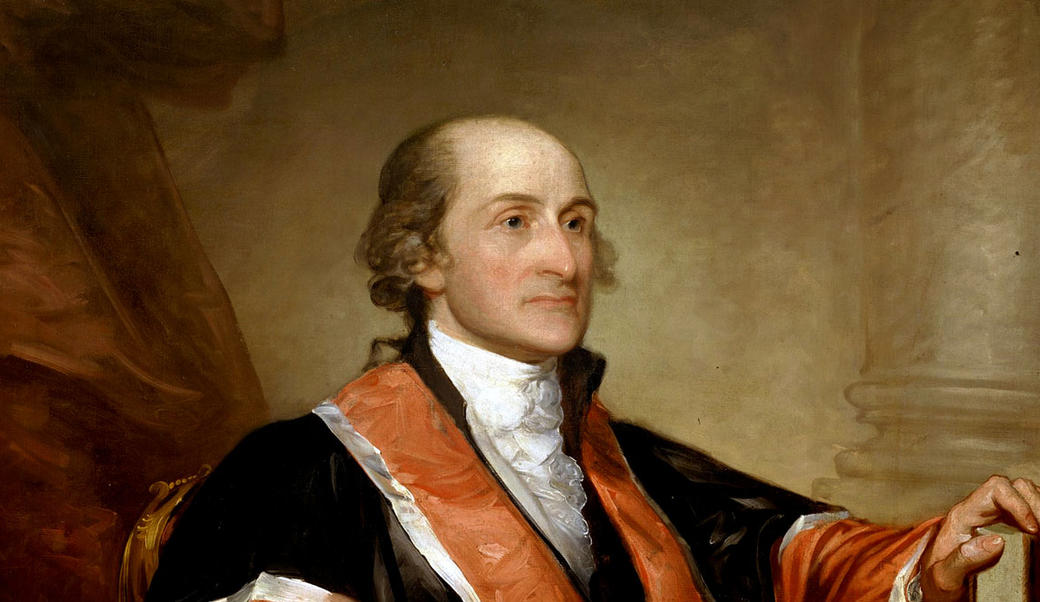
Mobile Menu Overlay
The White House 1600 Pennsylvania Ave NW Washington, DC 20500
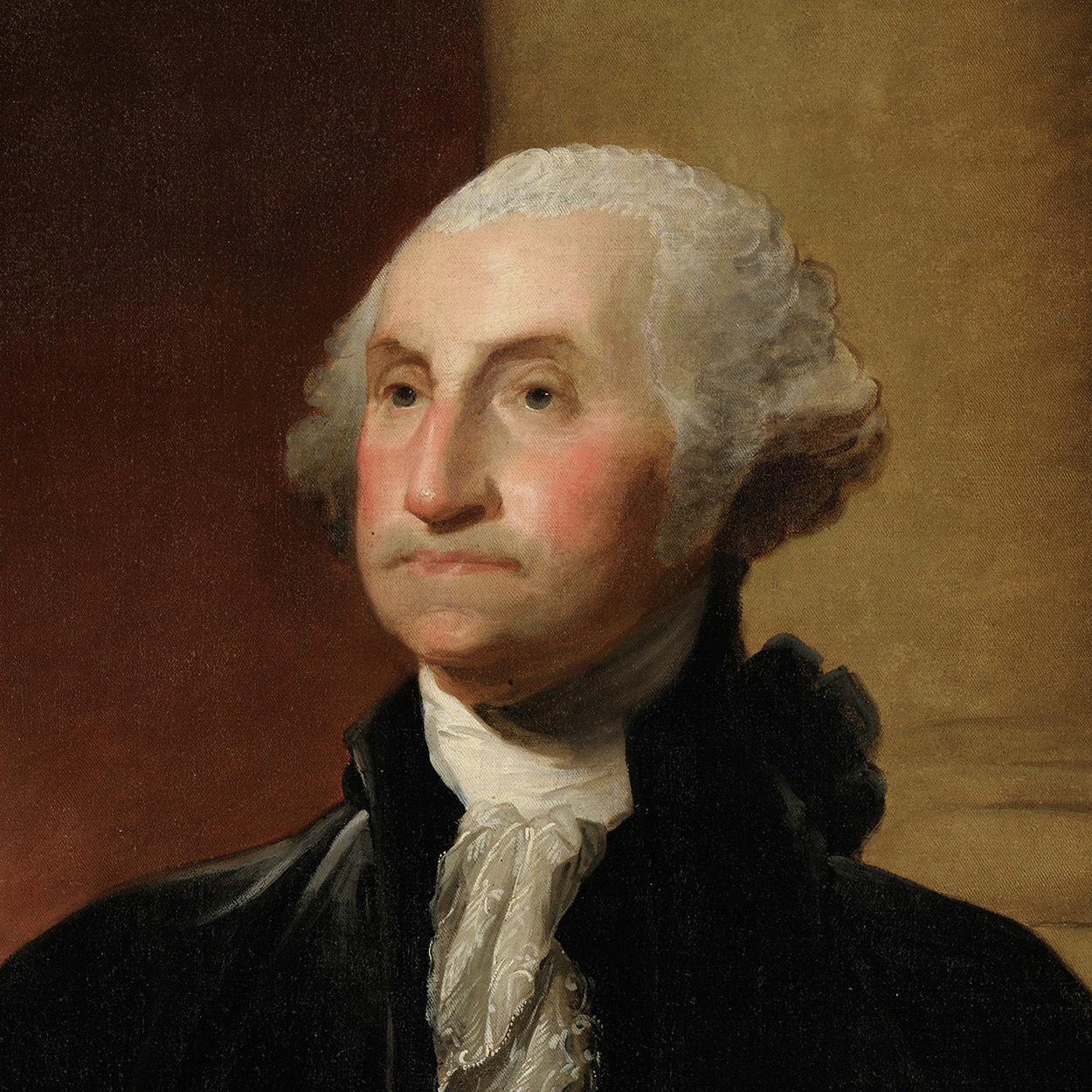
George Washington
The 1st President of the United States
The biography for President Washington and past presidents is courtesy of the White House Historical Association.
On April 30, 1789, George Washington, standing on the balcony of Federal Hall on Wall Street in New York, took his oath of office as the first President of the United States. “As the first of every thing, in our situation will serve to establish a Precedent,” he wrote James Madison, “it is devoutly wished on my part, that these precedents may be fixed on true principles.”
Born in 1732 into a Virginia planter family, he learned the morals, manners, and body of knowledge requisite for an 18th century Virginia gentleman.
He pursued two intertwined interests: military arts and western expansion. At 16 he helped survey Shenandoah lands for Thomas, Lord Fairfax. Commissioned a lieutenant colonel in 1754, he fought the first skirmishes of what grew into the French and Indian War. The next year, as an aide to Gen. Edward Braddock, he escaped injury although four bullets ripped his coat and two horses were shot from under him.
From 1759 to the outbreak of the American Revolution, Washington managed his lands around Mount Vernon and served in the Virginia House of Burgesses. Married to a widow, Martha Dandridge Custis, he devoted himself to a busy and happy life. But like his fellow planters, Washington felt himself exploited by British merchants and hampered by British regulations. As the quarrel with the mother country grew acute, he moderately but firmly voiced his resistance to the restrictions.
When the Second Continental Congress assembled in Philadelphia in May 1775, Washington, one of the Virginia delegates, was elected Commander in Chief of the Continental Army. On July 3, 1775, at Cambridge, Massachusetts, he took command of his ill-trained troops and embarked upon a war that was to last six grueling years.
He realized early that the best strategy was to harass the British. He reported to Congress, “we should on all Occasions avoid a general Action, or put anything to the Risque, unless compelled by a necessity, into which we ought never to be drawn.” Ensuing battles saw him fall back slowly, then strike unexpectedly. Finally in 1781 with the aid of French allies–he forced the surrender of Cornwallis at Yorktown.
Washington longed to retire to his fields at Mount Vernon. But he soon realized that the Nation under its Articles of Confederation was not functioning well, so he became a prime mover in the steps leading to the Constitutional Convention at Philadelphia in 1787. When the new Constitution was ratified, the Electoral College unanimously elected Washington President.
He did not infringe upon the policy making powers that he felt the Constitution gave Congress. But the determination of foreign policy became preponderantly a Presidential concern. When the French Revolution led to a major war between France and England, Washington refused to accept entirely the recommendations of either his Secretary of State Thomas Jefferson, who was pro-French, or his Secretary of the Treasury Alexander Hamilton, who was pro-British. Rather, he insisted upon a neutral course until the United States could grow stronger.
To his disappointment, two parties were developing by the end of his first term. Wearied of politics, feeling old, he retired at the end of his second. In his Farewell Address, he urged his countrymen to forswear excessive party spirit and geographical distinctions. In foreign affairs, he warned against long-term alliances.
Washington enjoyed less than three years of retirement at Mount Vernon, for he died of a throat infection December 14, 1799. For months the Nation mourned him.
Learn more about George Washington’s spouse, Martha Dandridge Custis Washington.
Stay Connected
We'll be in touch with the latest information on how President Biden and his administration are working for the American people, as well as ways you can get involved and help our country build back better.
Opt in to send and receive text messages from President Biden.
Premium Content

- HISTORY MAGAZINE
President George Washington: Calm, Cool, and Collected Commander in Chief
Patient, modest, and deliberate: George Washington gave the United States the steady hand necessary to guide it through a revolutionary birth and its tumultuous early years.
"First in war, first in peace, and first in the hearts of his countrymen.” That famous description of George Washington by his friend and fellow patriot Henry “Light Horse Harry” Lee is probably still the best summation of the man who, over a hard but resolute lifetime, became the savior of a war and the father of a country. Washington’s earliest ambitions, though, aimed more at the prosaic than the glorious. He probably imagined nothing better than following in the footsteps of his father, Augustine, who had been an ambitious Virginia planter and merchant. Augustine was hardly a major player in the hierarchical world of the aristocracy, but he was nonetheless a bona fide member of the gentry. George was the eldest son of Augustine’s second wife, Mary, who was not, and at no point aspired to be gentry.
Washington's War for Independence

When George was just 11, Augustine died, leaving his younger children in the hands of Mary, a domineering, pious, possibly pipe-smoking woman who ran her farm with a firm hand and read daily to her children from Contemplations Moral and Divine . Though George’s two older stepbrothers, then grown, had been sent to the fine schools required of the Virginia gentry, George had no resources for that, and Mary, in any case, had no interest in investing in her eldest son’s education. Indeed the two clashed their entire lives, and some biographers speculate that George modeled himself after everything that his mother was not.
Devoted to the Nation

Feb. 22, 1732 George Washington is born in a modest house at Popes Creek, Westmoreland County, Virginia. His father, Augustine, is a plantation owner who dies when George is 11.
June 15, 1775 Having served with distinction in the French and Indian War, Washington is appointed as commander-in-chief of the Continental Army that was created the day before.
Dec. 23, 1783 Washington resigns his commission as commander-in-chief, having transformed the Continental Army into an effective fighting force and led the troops to victory over the British.
Apr. 30, 1789 Despite not actively seeking the candidacy, Washington is unanimously elected as the first president of the United States under the Constitution. He serves two terms but refuses a third.
Dec. 14, 1799 Washington dies suddenly after contracting an acute infection while touring his estates in the winter. The nation goes into mourning. Foreign governments, including Britain, pay homage.
Apparently determined to better himself from a young age, George found mentors among the gentry and emulated their ways. He also copied by hand the Rules of Civility & Decent Behavior in Company and Conversation . These 110 rules had been conceived by French Jesuits as a teaching tool almost a century and a half before, dealing with everything from table manners to posture to facial expressions to gossip. Despite their stuffy formality, George seems to have internalized them because they echoed through his behavior for the rest of his life. As a young man, George impressed the colonial power-brokers of British Virginia, who made him a surveyor of western lands and an officer with the British during the French and Indian War. He first saw battle in his very early twenties, and he learned that he liked it. As far away as Britain, the young colonel’s calm and courage under fire was appreciated, with a London gazette running a line from one of his letters: “I have heard the bullets whistle; and believe me, there is something charming in the sound.”
Mount Vernon

But Washington had also experienced other aspects of war—the meddling of politicians and the disdain of the British for the American officers. By 1758 he was tired of it all. Resigning his commission, he enthusiastically took up the life of a Virginia planter.
Washington had been renting a family farm in Northern Virginia from the widow of his older half-brother Lawrence, who died in 1752. Following the death of his sister-in-law, Washington officially inherited Mount Vernon in 1761. Situated on the broad Potomac, Mount Vernon was one of the great loves of Washington’s life.

As he began ambitious improvements to the plantation, he became involved with a wealthy young widow, Martha Dandridge Custis. The two were soon married. Washington had been infatuated before, but Martha proved a perfect life partner and comfort to the reserved, driven, and often overburdened Washington.
Along with the wealth and social standing that Martha brought to the marriage, she also came with two young children, who Washington cherished as his own. He settled easily into the life of a respected planter and enjoyed days spent with his family, improving the farm, fishing, hunting (particularly fox hunting), riding, feasting, dancing, and generally reveling in the style of the Virginia aristocracy. He no doubt assumed he would end his days at Mount Vernon as a British citizen.
The Coming Revolution
That, of course, was not to be. Like his fellow Virginians in the House of Burgesses, Washington became increasingly disillusioned with George III and his colonial minions. At this time British America was composed of 13 disparate colonies ruled by 13 legislatures, each committed to its own culture, economy, and often religion.“Fire and water are not more heterogeneous than the different colonies of North America,” one British traveler had pronounced. Together, they were home to a million and a half people, the population doubling roughly every 20 years. They were Britons at heart, but of many varieties: long-established colonial families, recent immigrants, and indentured servants. Enslaved African-Americans lived throughout the colonies with large concentrations in the Chesapeake region and the South, where an aristocracy evolved because of their labor. Washington frankly aspired to become part of the elite and had speculated on wild land to the west. He saw his investment fade with the royal Proclamation of 1763, which banned westward migration in an attempt to fend off more Indian wars and control the cost of America to the Crown.
British War Debt

Washington fought in the French and Indian war which was part of the larger Seven Years’ War that raged across Europe from 1756-1763. Britain emerged from it with an empire greater than any the West had known since Rome. Its holdings in the New World, shown above, had more than doubled, but managing them proved an expensive business. To try and cover the costs, the British began to levy a series of taxes on the colonists that only added to the distress caused by a post-war bust in the economy. As the decade progressed, the loyal Britons of America, Washington among them, began to question their commitment to the motherland.
Yet through the 1760s, as he supported protests against British taxes, Washington also dined with the royal governor and assumed, as did most of his landed countrymen, that the British would be reasonable. By 1774 he had changed his mind.“The measures which [the British] administration hath for sometime been, and now are, most violently pursuing are repugnant to every principle of natural justice,” he wrote to a friend. In the course of a decade, Washington had become a full-throated patriot and one of Virginia’s seven elected delegates to the First Continental Congress. In August 1774, he left Mount Vernon for Philadelphia with fellow delegates Patrick Henry and Edmund Pendleton. Martha saw them off. “I hope you will stand firm,” she told Henry and Pendleton, adding, “I know George will.”
The six-foot-two-inch Washington had a way of affecting other men simply by his bearing, and the other delegates to Congress were duly impressed, seeing in him the reassuring promise of a true military commander. And that was clearly what Washington wanted them to see. He was not a fiery or inspired speaker nor was he an intellect, but he was confident that he could command men.
He got his chance a year later, when the Second Continental Congress appointed him commander-in-chief of the Continental Army. John Adams championed him for the position, and Abigail Adams described him in this way: “Dignity with ease and complacency—the gentleman and soldier look agreeably blended in him. Modesty marks every line and feature of his face.”
Pen Inspires the Sword

Thomas Paine was an admirer of Washington and spent the desperate autumn of 1776 as an aide-de-camp in the field. Though brave, Paine was no soldier. But his brief time with the army and Washington no doubt inspired him as he wrote the opening to his American Crisis—“These are the times that try men’s souls. The summer soldier and the sunshine patriot will, in this crisis, shrink from the service of their country.” In late December 1776, with the revolution on the verge of collapse, enlistments about to expire, and “summer soldiers” waiting to depart, Washington ordered Paine’s essay read to his men. Two days later, their surprise attack on Trenton, New Jersey, revived the American taste for war and the commitment to fight on.
Certainly, Washington exuded modesty when he addressed Congress with what sounded like a protestation at his appointment, “I beg it may be remembered by every gentleman in the room, that I this day declare with the utmost sincerity, I do not think myself equal to the command I am honored with.” He may have been overwhelmed by the appointment, but he had also wanted it. And now, for better or worse, he had it.
You May Also Like

The incredible details 'Masters of the Air' gets right about WWII

What was Leonard Bernstein and JFK's friendship really like?

Two tragedies: Why Jackie Kennedy was already mourning before JFK's fatal visit to Dallas
Washington at war.
In early July he arrived in Cambridge to meet his “army,” finding an obstreperous, disorganized gaggle of New England militiamen, most hardscrabble farmers and small-time merchants, holding the British army at bay in Boston. Washington was determined to impose the discipline of a true army on these “exceedingly dirty and nasty people.” He also sought to protect them from themselves, putting in place hygiene practices to ward against the diseases that plagued military camps. Despite his initial private disdain, he moved tirelessly and confidently among them, understanding, even if they did not, how precarious the American military was.

If that summer tested Washington, it was only a small taste of what was to come. By 1776 he and his men were in a struggle for survival, yielding battle after battle to the British in New York. By year’s end, Washington had lost more than half of what had been, at best, an army cobbled together. Congress had essentially turned its back on him, and his closest confidantes and officers had intrigued against him, complaining of his inability to lead.
In fact, he had been indecisive and overly deferential, and now his army was in danger of collapse, as enlistment periods ended and desertion grew. “No man, I believe, ever had a greater choice of difficulties and less means to extricate himself from them,” he wrote to his brother Jack in late autumn. Yet, in spite of his own despondency, Washington rallied, understanding that if he did not turn the tide somehow, the Revolution would be a short-lived disaster. And so on a bitter cold Christmas night, Washington famously led his broken, barefoot army from their winter camp at Valley Forge, crossing the Delaware River to attack Trenton, New Jersey. The American victory there was small but profound, reinvigorating Washington, his forces, and the patriotic cause—at least for a few months.
For the next four years, Washington battled on, carping at Congress to feed and supply his men, fending off attacks on his own leadership, and all the while keeping an eye firmly on the enemy. Gradually, he learned to fight the British more strategically, using local militia to harass them and avoiding “a general action” that would “put anything at Risque [sic].”

His men came to revere him for his courage, calm, determination, and, above all, for being at their side battle after battle, march after march, year after grueling year. The Philadelphia patriot Benjamin Rush once declared that Washington had “so much martial dignity in his deportment that you would distinguish him to be a general and a soldier from among 10,000 people. There is not a king in Europe that would not look like a valet de chambre by his side.”
Peace at Last
By 1781 Washington’s resolve had triumphed over the British, and two years later America could officially claim her hard-won independence. By then Washington was more icon than man to most of the world. One Dutch merchant who caught sight of him as he rode through Philadelphia with a contingent of light cavalry, wrote to his wife, “I saw the greatest man who has ever appeared on the surface of this earth... I don’t know if, in our delight at seeing the hero, we were more surprised by his simple but grand air or by the kindness of the greatest and best of heroes.”
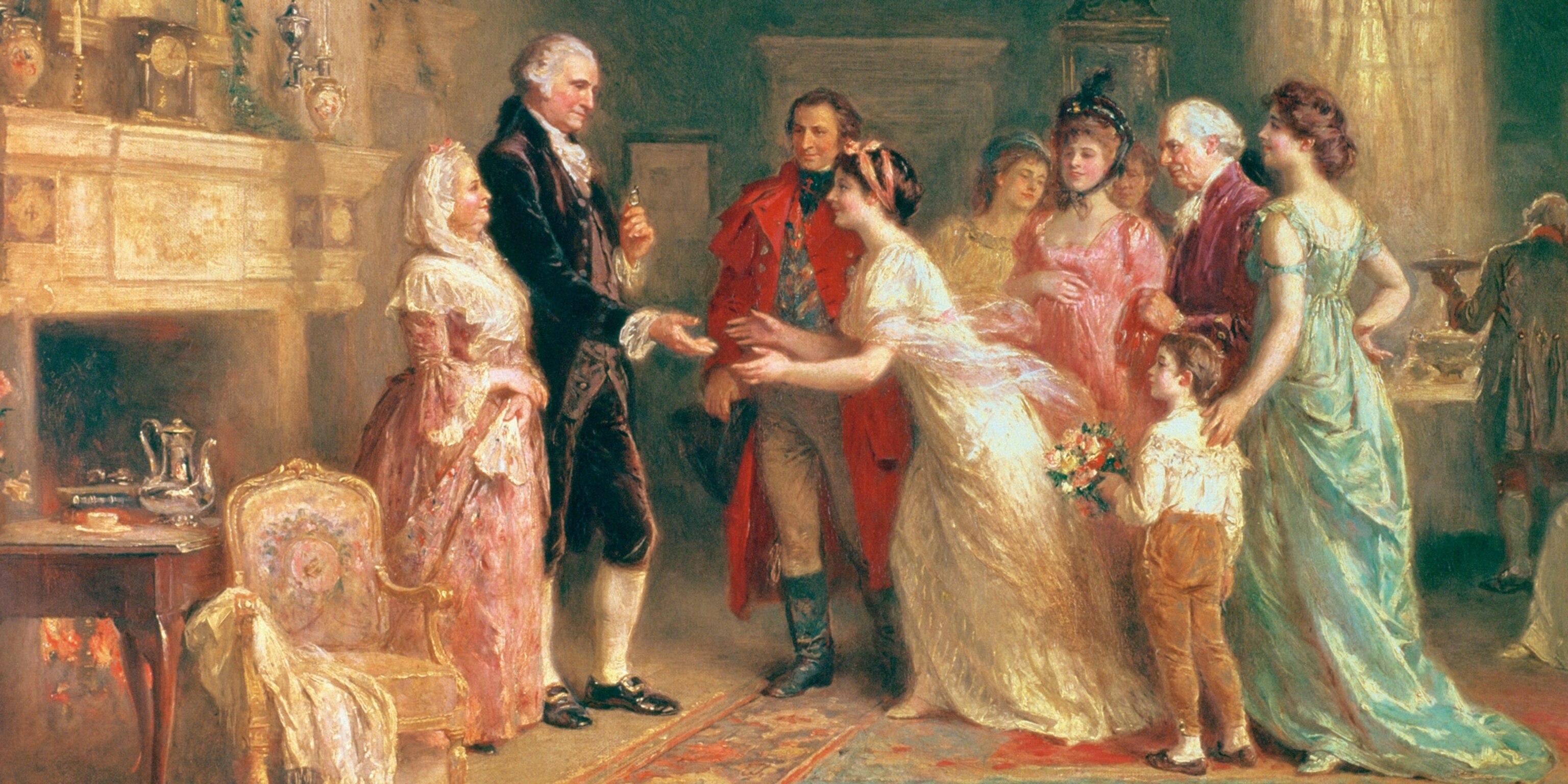
But the war had taken its toll. At 51 Washington was no longer the vigorous athletic man he had been. He wore crude, ill-fitting dentures of human teeth and ivory that hooked onto his one remaining tooth and made his gums ache. His great consolation was that he could at last settle down at Mount Vernon with his family and live out his days with his “mind... unbent,” gliding “down the stream of life till I come to that abyss from whence no traveler is permitted to return.”
And for just a few years Washington was indeed allowed the life of an unbent mind, reveling in his daily routine as a planter, coming up with strategies to improve the operations and production of Mount Vernon and his other nearby farms, neglected over the nine years of his absence. He and Martha also entertained an endless stream of visitors, many of them strangers who came to pay homage to America’s hero.
Washington and the Constitution

Having led the colonies to independence, Washington found himself again on the battlefront as the new nation began to form itself. It became obvious in the post-war years that the Articles of Confederation were no more than a toothless agreement between the states as conflicts erupted over trade, territory, waterways, and mutual protection. Washington tried to resolve one such dispute himself—over navigation rights to the Potomac. His talks, held at Mount Vernon in 1785, were a success and encouraged further cooperation among states. Four years later, Washington became the steadfast anchor around which endless arguments swirled about the nature and need for a new constitution (above). Though a Federalist with an eye to industry and infrastructure for a united country, Washington sat sphinxlike during the Philadelphia talks. These resulted in a constitution and a new role for Washington—not king, but president of the still fractious and embryonic United States.
Return to the Limelight
But Washington’s destiny was entwined with the new nation’s too completely to allow him escape. He watched its growing pains with the cautious eye of a concerned parent and, at the same time, he unobtrusively tended his own image, guarding it for posterity and holding himself in abeyance, in case he should be needed again. By 1787 he was back on the public stage and again on his way to Philadelphia, as he had been 40 years before, this time as a delegate to the Constitutional Convention. He was quickly elected its president and within two years president of the new nation. He expected “that at a convenient and an early period my services might be dispensed with and that I might be permitted once more to retire.” But the “early period” dragged into eight years, as the former patriots argued and debated among themselves over America’s character and future.
Finally, in 1796, Washington refused to continue into a third term. This granted him barely three years of his own happiness at Mount Vernon. In mid-December 1799, after spending a cold, wet day touring his farms on horseback, he began to suffer a sore throat but he kept to his routines. Two days later he was gone. In his farewell address to the nation, he had assured his fellow citizens that “I shall carry... with me to my grave... unceasing vows that heaven may continue to you the choicest tokens of its beneficence; that your union and brotherly affection may be perpetual; that the free Constitution, which is the work of your hands, may be sacredly maintained; that its administration in every department may be stamped with wisdom and virtue; that, in fine, the happiness of the people of these States, under the auspices of liberty, may be made complete.”
Related Topics
- PRESIDENTS OF THE UNITED STATES
- HISTORY AND CIVILIZATION
- MODERN HISTORY
- AMERICAN REVOLUTION

The Devil went down to … New Jersey?

Why the Washington Monument was once a national embarrassment

The story of Turtle, one of the world's first submersibles

General Grant's surprising rise from cadet to commander

MLK and Malcolm X only met once. Here’s the story behind an iconic image.
- History & Culture
- Photography
- Environment
- Paid Content
History & Culture
- Mind, Body, Wonder
- Terms of Use
- Privacy Policy
- Your US State Privacy Rights
- Children's Online Privacy Policy
- Interest-Based Ads
- About Nielsen Measurement
- Do Not Sell or Share My Personal Information
- Nat Geo Home
- Attend a Live Event
- Book a Trip
- Inspire Your Kids
- Shop Nat Geo
- Visit the D.C. Museum
- Learn About Our Impact
- Support Our Mission
- Advertise With Us
- Customer Service
- Renew Subscription
- Manage Your Subscription
- Work at Nat Geo
- Sign Up for Our Newsletters
- Contribute to Protect the Planet
Copyright © 1996-2015 National Geographic Society Copyright © 2015-2024 National Geographic Partners, LLC. All rights reserved
Biography of George Washington, First President of the United States
- U.S. Presidents
- Important Historical Figures
- Native American History
- American Revolution
- America Moves Westward
- The Gilded Age
- Crimes & Disasters
- The Most Important Inventions of the Industrial Revolution
- African American History
- African History
- Ancient History and Culture
- Asian History
- European History
- Latin American History
- Medieval & Renaissance History
- Military History
- The 20th Century
- Women's History
- M.A., History, University of Florida
- B.A., History, University of Florida
George Washington (February 22, 1732–December 14, 1799) was America's first president. He served as commander-in-chief of the Colonial Army during the American Revolution , leading the Patriot forces to victory over the British. In 1787 he presided at the Constitutional Convention , which determined the structure of the new government of the United States, and in 1789 he was elected its president.
Fast Facts: George Washington
- Known For : Revolutionary War hero and America's first president
- Also Known As : The Father of His Country
- Born : February 22, 1732 in Westmoreland County, Virginia
- Parents : Augustine Washington, Mary Ball
- Died : December 14, 1799 in Mount Vernon, Virginia
- Spouse : Martha Dandridge Custis
- Notable Quote : "To be prepared for war is one of the most effective means of preserving peace."
George Washington was born on February 22, 1732, in Westmoreland County, Virginia to Augustine Washington and Mary Ball. The couple had six children—George was the oldest—to go with three from Augustine's first marriage. During George's youth his father, a prosperous planter who owned more than 10,000 acres of land, moved the family among three properties he owned in Virginia. He died when George was 11. His half-brother Lawrence stepped in as a father figure for George and the other children.
Mary Washington was a protective and demanding mother, keeping George from joining the British Navy as Lawrence had wanted. Lawrence owned the Little Hunting Creek plantation—later renamed Mount Vernon—and George lived with him from the age of 16. He was schooled entirely in Colonial Virginia, mostly at home, and didn't go to college. He was good at math, which suited his chosen profession of surveying, and he also studied geography, Latin, and English classics. He learned what he really needed from backwoodsmen and the plantation foreman.
In 1748 when he was 16, Washington traveled with a surveying party plotting land in Virginia’s western territory. The following year, aided by Lord Fairfax—a relative of Lawrence's wife—Washington was appointed official surveyor of Culpeper County, Virginia. Lawrence died of tuberculosis in 1752, leaving Washington with Mount Vernon, one of Virginia's most prominent estates, among other family properties.
Early Career
The same year his half-brother died, Washington joined the Virginia militia. He showed signs of being a natural leader, and Virginia Lt. Gov. Robert Dinwiddie appointed Washington adjutant and made him a major.
On Oct. 31, 1753, Dinwiddie sent Washington to Fort LeBoeuf, later the site of Waterford, Pennsylvania, to warn the French to leave land claimed by Britain. When the French refused, Washington had to retreat hastily. Dinwiddie sent him back with troops and Washington's small force attacked a French post, killing 10 and taking the rest prisoner. The battle marked the start of the French and Indian War, part of the worldwide conflict known as the Seven Years War between Britain and France.
Washington was given the honorary rank of colonel and fought a number of other battles, winning some and losing others, until he was made commander of all Virginia troops. He was only 23. Later, he was sent home briefly with dysentery and finally, after being turned down for a commission with the British Army, he retired from his Virginia command and returned to Mount Vernon. He was frustrated by poor support from the Colonial legislature, poorly trained recruits, and slow decision-making by his superiors.
On January 6, 1759, a month after he had left the army, Washington married Martha Dandridge Custis, a widow with two children. They had no children together. With the land he had inherited, property his wife brought with her to the marriage, and land granted him for his military service, he was one of the wealthiest landowners in Virginia. After his retirement he managed his property, often pitching in alongside the workers. He also entered politics and was elected to Virginia's House of Burgesses in 1758.
Revolutionary Fever
Washington opposed British actions against the Colonies such as the British Proclamation Act of 1763 and the Stamp Act of 1765, but he continued to resist moves to declare independence from Britain. In 1769, Washington introduced a resolution to the House of Burgesses calling for Virginia to boycott British goods until the Acts were repealed. He began to take a leading role in Colonial resistance against the British following of the Townshend Acts in 1767.
in 1774, Washington chaired a meeting that called for convening a Continental Congress, to which he became a delegate, and for using armed resistance as a last resort. After the battles of Lexington and Concord in April 1775, the political dispute became an armed conflict.
Commander-in-Chief
On June 15, Washington was named commander-in-chief of the Continental Army. On paper, Washington and his army were no match for the mighty British forces. But although Washington had little experience in high-level military command, he had prestige, charisma, courage, intelligence, and some battlefield experience. He also represented Virginia, the largest British colony. He led his forces to retake Boston and win huge victories at Trenton and Princeton, but he suffered major defeats, including the loss of New York City.
After the harrowing winter at Valley Forge in 1777, the French recognized American Independence, contributing a large French Army and a navy fleet. More American victories followed, leading to the British surrender at Yorktown in 1781. Washington formally said farewell to his troops and on December 23, 1783, he resigned his commission as commander-in-chief, returning to Mount Vernon.
New Constitution
After four years of living the life of a plantation owner, Washington and other leaders concluded that the Articles of Confederation that had governed the young country left too much power to the states and failed to unify the nation. In 1786, Congress approved the Constitutional Convention in Philadelphia, Pennsylvania to amend the Articles of Confederation. Washington was unanimously chosen as convention president.
He and other leaders, such as James Madison and Alexander Hamilton , concluded that instead of amendments, a new constitution was needed. Though many leading American figures, such as Patrick Henry and Sam Adams , opposed the proposed constitution, calling it a power grab, the document was approved.
Washington was elected unanimously by the Electoral College in 1789 as the nation's first president. Runner-up John Adams became vice president. In 1792 another unanimous vote by the Electoral College gave Washington a second term. In 1794, he stopped the first major challenge to federal authority, the Whiskey Rebellion, in which Pennsylvania farmers refused to pay federal tax on distilled spirits, by sending in troops to ensure compliance.
Washington did not run for a third term and retired to Mount Vernon. He was again asked to be the American commander if the U.S. went to war with France over the XYZ affair , but fighting never broke out. He died on December 14, 1799, possibly from a streptococcal infection of his throat made worse when he was bled four times.
Washington's impact on American history was massive. He led the Continental Army to victory over the British. He served as the nation's first president. He believed in a strong federal government, which was accomplished through the Constitutional Convention that he led. He promoted and worked on the principle of merit. He cautioned against foreign entanglements, a warning that was heeded by future presidents. He declined a third term, setting a precedent for a two-term limit that was codified in the 22nd Amendment.
In foreign affairs, Washington supported neutrality, declaring in the Proclamation of Neutrality in 1793 that the U.S. would be impartial toward belligerent powers in a war. He reiterated his opposition to foreign entanglements in his farewell address in 1796.
George Washington is considered one of the most important and influential U.S. presidents whose legacy has survived for centuries.
- " George Washington Biography ." Biography.com.
- " George Washington: President of the United States ." Encyclopedia Brittanica.
- 10 Facts About George Washington
- General George Washington's Military Profile
- Martha Washington - America's First First Lady
- American History Timeline: 1783-1800
- Patrick Henry
- Biography of James Monroe, Fifth President of the United States
- American Revolution: Major General Charles Lee
- Top 10 Things to Know About James Monroe
- America's Most Influential Founding Fathers
- George Washington's First Cabinet
- George Washington Printables
- American Foreign Policy Under George Washington
- Biography of Thomas Jefferson, Third President of the United States
- President James Madison: Facts and Biography
- Biography of John Adams, 2nd President of the United States
- American Revolution, Major General Nathanael Greene
George Washington
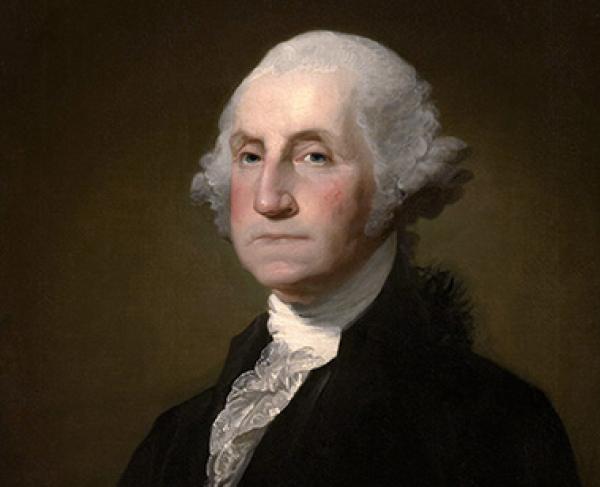
On December 14, 1799, George Washington, the first President of the United States, died at his home in Mount Vernon, Virginia. Congress commissioned Henry “Light-Horse Harry” Lee a fellow Virginian, army veteran, and friend to pen an appropriate eulogy. In 3,500 words, Lee attempted to encapsulate one of the most influential Founding Fathers. He wrote that Washington was the:
“First in war, first in peace, and first in the hearts of his countrymen.”
Before he was this influential leader, Washington was the son of a wealthy Virginian land speculator. He was born on February 22, 1732, and received little formal education in his youth. After his father’s death in 1743, he inherited a large farm, with ten slaves to work the property, and became a land surveyor. In 1750, he resigned his position to devote himself to farming and acquiring new farmland.
Two years later, inspired by his recently deceased brother Lawrence’s military service, Washington joined the Virginian Militia. He was given the rank of major and appointed to command one of the four militia districts in Virginia. His enlistment occurred as tensions between France and England ignited. British officials ordered Washington to force the French army off “British" land and Washington impressed his superiors by making a treacherous winter round-trip 77-day trek to the French Fort Le Boeuf to inform France of these commands. When France refused to comply, Washington was given the honor to force their hand. Unfortunately, he attacked the French during the Battle of Jumonville Glen , also known as the Jumonville affair, and the French commander Joseph Coulon de Jumonville died. A month later, South Carolinian militia joined Washington and the militia again tried to attack French fortifications but were unsuccessful. This incident led to the French and Indian War , also known as the Seven Years’ War. In response, Washington surrendered his troops and resigned his commission with essential military knowledge that proved vital later in his career.
After leaving the militia, Washington married the wealthy widow Martha Dandridge Custis on January 6, 1759. This marriage gave Washington land, wealth, and status as he transitioned into a gentleman farmer in the Virginian countryside. In addition, he became active in local politics during the preceding decades. When the “shot heard round the world” was fired in the Battles of Lexington and Concord on April 19, 1775, Washington set off to join other delegates in Philadelphia to attend the Continental Congress.
Several months later, when the Continental Army was officially formed to combat the British, Washington was unanimously elected as its commander. For the next eight years, Washington fought the British. Throughout this time, he only spent ten days at his Virginia home and suffered along with his men in the chilly New England winters and warm Southern summers. Only after General Charles Cornwallis surrendered after the Siege of Yorktown in October 1781 and the Treaty of Paris was signed in September 1783, did Washington resign his command and return to his home in Mount Vernon. Once there, he hoped to resume his life as a Virginia gentleman farmer.
However, the Articles of Confederation that were established after the Revolutionary War were weak in ruling the newly established United States of America. With a lack of central government, the country struggled to pay veterans, levy taxes, or make any changes in the political landscape. The Continental Congress met again to revise the plans and asked George Washington to be in attendance. When a new constitution was established, the need for a “president” of the United States was evident. George Washington, the former military commander, and public figure, was the perfect candidate and he accepted. For the next eight years, Washington served tirelessly as the first president of the United States. Then, in an unprecedented move at a time when political leaders usually served for life, Washington retired. With this last act, he helped the blooming democracy to move on and form a new nation.
Lee was apt when he described Washington: he was the “first in war,” when he served as Commander-in-Chief of the Continental Army; “first in peace,” when he lead his country through its turbulent first years as President of the United States; and “first in the hearts of his countrymen,” when he helped the country become the democracy it is today.
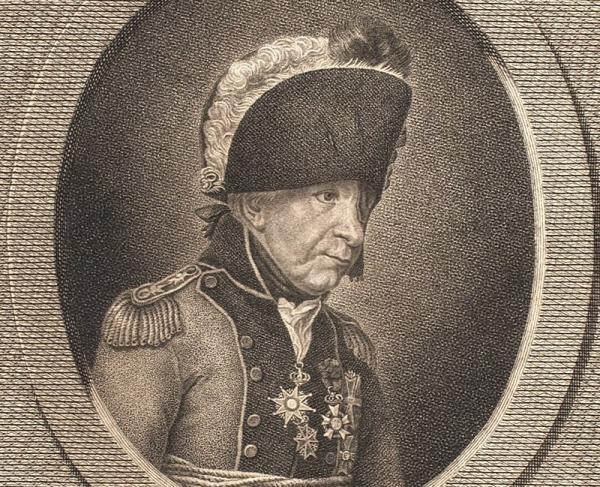
Johann Ewald
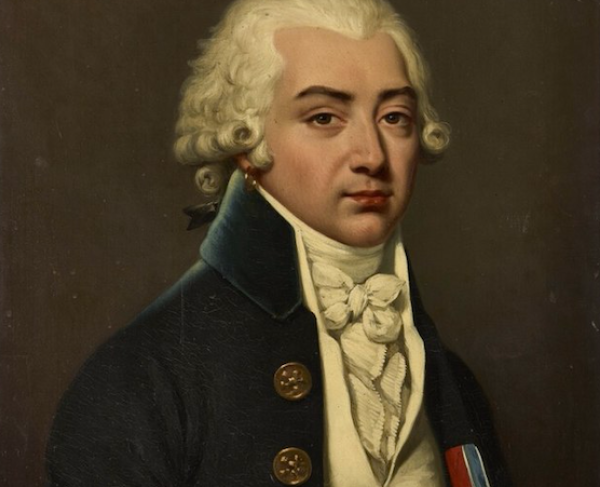
Armand Louis de Gontaut
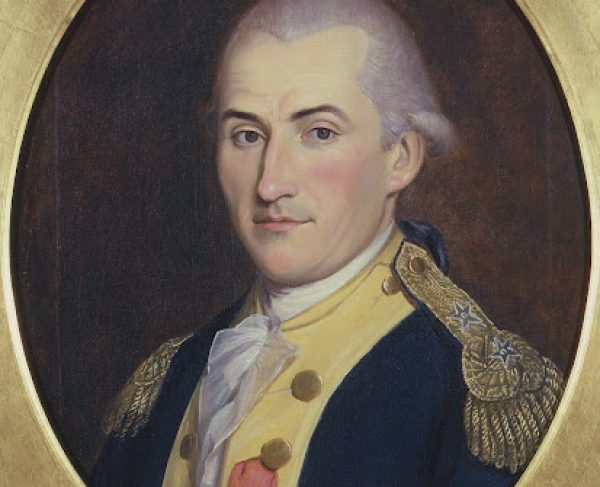
Louis le Begue Duportail
Related battles, you may also like.

Open 365 days a year, Mount Vernon is located just 15 miles south of Washington DC.

From the mansion to lush gardens and grounds, intriguing museum galleries, immersive programs, and the distillery and gristmill. Spend the day with us!

Discover what made Washington "first in war, first in peace and first in the hearts of his countrymen".

The Mount Vernon Ladies Association has been maintaining the Mount Vernon Estate since they acquired it from the Washington family in 1858.

Need primary and secondary sources, videos, or interactives? Explore our Education Pages!

The Washington Library is open to all researchers and scholars, by appointment only.
George Washington
Victorious general of the American Revolution, the first President of the United States, successful planter and entrepreneur. Explore the life and legacies of George Washington.
Biography of George Washington
First American president, Continental Army commander, president of the Constitutional Convention, and more.

Little is known of George Washington's childhood, and it remains the most poorly understood part of his life. His early experiences working as a surveyor and in the Virginia company helped shape the man who would become the first President of the United States.

As a young Virginia planter, Washington accepted slavery without apparent concern. But after the Revolutionary War, he began to feel burdened by his personal entanglement with slavery and uneasy about slavery’s effect on the nation.

French & Indian War
George Washington's forays into the Ohio country shaped his career and sparked a global war. Learn more about Washington and the French & Indian War.

Martha Washington
Martha Washington was the first first lady of the United States and spent about half of the Revolutionary War at the front with General Washington. She helped manage and run her husbands' estates and raised her children, grandchildren, nieces, and nephews.

Revolutionary War
Despite having little practical experience in managing large, conventional armies, George Washington proved to be a capable and resilient leader of the American military forces during the Revolutionary War.

First President
Unanimously elected twice, President Washington established many crucial precedents and confronted many domestic and foreign policy challenges.
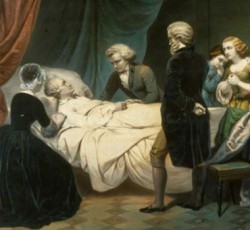
On the evening of December 14, 1799, at Mount Vernon, George Washington passed away of a throat infection after riding through a wet and snowy wintry mix two days earlier.
George Washington's Resume
What would Washington's resume have looked like if he had applied for a job after the presidency?

While a private man when it came to his personal religious beliefs, George Washington worked tirelessly to ensure people of all religions had the right to practice within the United States.

Native Americans
Washington had a complicated relationship with Native Americans. Throughout his life, Washington negotiated with and served alongside native peoples, fought against others, and sought their land for his own prosperity.

Washington the Farmer
Washington studied and implemented improved farming methods throughout his life. In fact, he thought of himself first as a farmer.

Born in the Age of Reason, Washington was a part of a new generation of readers who had access to more information. He built a library that would ultimately consist of more than 1,200 titles.

House of Burgesses
The first time George Washington ran for public office, he lost. Washington is often remembered as an established statesman, leading a new nation. However, his political career began decades early in the Virginia House of Burgesses.

Freemasonry
Freemasonry played a role throughout George Washington's life, joining the Lodge in Fredericksburg, Virginia in 1752, through his death, where brothers of Alexandria Lodge performed Masonic rites at his funeral.
Throughout his life, Washington was concerned he would die young like his father. To prevent this, he tried to live a healthy life but still encountered many illnesses.
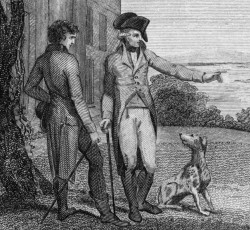
Although Washington isn't particularly known for his sense of humor, the General's correspondence and the stories of those who knew him prove that our Founding Father surely "relished wit and humour."

Food at Mount Vernon
Learn about the food traditions of the Washingtons and the enslaved at Mount Vernon.

Washington Facts
What did his voice sound like? Was he really a good dancer? Separate fact from fiction and learn more about the real George Washington.

Washington as Bookkeeper
George Washington personally kept fastidious financial records throughout his life, an impressive feat considering the size of his business enterprise.

Washington in Art
Explore the many artistic depictions of Washington and the artists who sought to capture his likeness for posterity.
George Washington Facts
Interactive.

Be Washington™
Put yourself in George Washington's boots with Mount Vernon's newest interactive experience!
Video Series

The Winter Patriots
Learn about Washington's crossing of the Delaware and the fateful battles of Trenton and Princeton.

Author Interviews
Read conversations with award-winning authors about the 18th century and George Washington's life and legacy.
The Washington Family
Although George Washington never had any children of his own, he did have a rather large family, comprised of his many siblings, step-children, and step-grandchildren.
George Washington's Immediate Family
George washington quotes.
Did George Washington really say that? Find out in our quotable database.
Key Moments in the Life of George Washington
Previous february 22, 1732 next, george washington is born.

George Washington is born at Popes Creek in Westmoreland County, Virginia
Washington moves to Little Hunting Creek Plantation

George Washington’s father moves his family to Little Hunting Creek Plantation, which will later be called Mount Vernon
Washington moves to Fredericksburg, Virginia
George Washington’s father moves his family to another of his properties, Ferry Farm, near Fredericksburg, Virginia
George Washington's Father Dies
George Washington’s father, Augustine Washington, dies
Washington seeks to join the Royal Navy

George Washington considers entering the British Navy, but his mother will not give permission for him to go
Appointed public surveyor for Culpeper County

George Washington receives an appointment as a public surveyor for Culpeper County, Virginia.
Sails to Barbados

George Washington sails to Barbados with his older half-brother, Lawrence Washington, who is ill with tuberculosis. While there, George Washington contracts smallpox
Washington sent to the Ohio Valley

George Washington is sent into the Ohio Valley to take a message from the governor of Virginia to French military forces, demanding that they leave.
Washington surrenders to the French

George Washington is appointed Lieutenant Colonel of the Virginia militia; defeats the French and their Indian allies at Great Meadows. He is involved in a skirmish, which results in the death of a French diplomat and starts the French and Indian War; surrenders Fort Necessity. Is very sick and surrenders his commission; begins renting Mount Vernon from the widow of his half-brother, Lawrence Washington.
The Battle of the Monongahela

Washington serves as a volunteer aide-de-camp to General Braddock during a disastrous campaign against the French; becomes commander-in-chief of the Virginia forces.
Washington begins serving in the House of Burgesses
Washington begins his service in the Virginia House of Burgesses. He will serve until 1775.
George and Martha Washington are Married

George Washington marries Martha Dandridge Custis, a young widow with two small children

Trip to the Ohio and Kanawha Rivers

George Washington and a friend from the days of the French and Indian War go to see their western lands on the Ohio and Kanawha Rivers
Washington's First Portrait

In 1772, Annapolis artist Charles Willson Peale visited Mount Vernon where he recorded the first known likeness of George Washington. Washington chose to be painted in his Virginia militia uniform from the French and Indian War with marching orders in his pocket, even though he had resigned from the military some 14 years prior.
First Continental Congress

George Washington presides over the meeting, which produces the Fairfax Resolves, promoting a boycott of British goods and the right of self-government; is chosen by and represents Virginia as a delegate to the 1 st Continental Congress in Philadelphia
Washington takes command at Cambridge, MA

George Washington is chosen as a delegate to the 2 nd Continental Congress; while there, he is selected to command the Continental Army; goes immediately to take command of the army at Cambridge, Massachusetts; begins a siege of the city of Boston
The Battle of Long Island

Washington's Continental Army is defeated on the Brooklyn Heights by Lord William Howe's British and Hessian forces. Washington and the remainder of his army escape during the night to Manhattan.
The Battle of Trenton

Washington's ragtag army crosses the icy Delaware River on Christmas night 1776. On the morning of December 26, 1776 the Continental Army attacks the Hessian garrison at Trenton. Washington's fast moving forces capture most of the 1,500 man garrison.
Washington's forces enter winter quarters at Valley Forge

After the lengthy 1777 campaign, Washington led his 11,000 man army to winter quarters in Valley Forge, Pennsylvania. The hard winter and scant supplies greatly depleted his army through disease and cold. During this challenging period Washington faced many serious political threats both inside and outside his army.
Victory at Yorktown

Washington and Gen. Rochambeau's French forces receive the surrender of Lord Charles Cornwallis' army at Yorktown - the last major battle of the American Revolution.
Washington resigns his commission
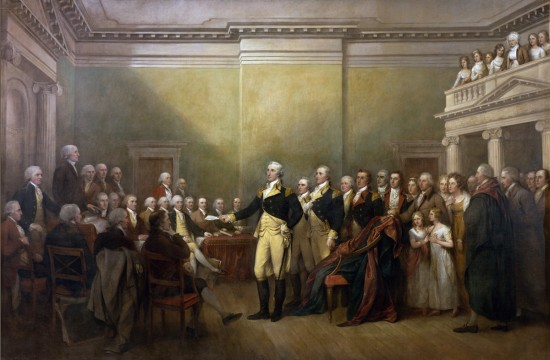
George Washington resigns his military commission in Annapolis, Maryland - affirming his belief in civilian control of the military. He returns home to Mount Vernon on Christmas day.
President of the Potomac Company

George Washington is president of the Potomac Company, seeking to improve transportation on that river
Constitutional Convention

George Washington is chosen to preside over the Constitutional Convention; He signs the new Constitution
Washington elected 1st President

George Washington is unanimously elected 1 st president of the United States; travels to New York for his inauguration on April 30 th
Washington inaugurated as 2nd President
George Washington is again unanimously elected to serve a second term as president of the United States
The Whiskey Rebellion

The Whiskey Rebellion breaks out in western Pennsylvania; Washington leads troops to the area to quell this revolt against paying taxes to the federal government
Washington retires as president

George Washington retires as president; leaves Philadelphia to return to Mount Vernon
Washington Dies

George Washington dies at Mount Vernon of a severe throat infection; body is placed in the old family vault at Mount Vernon
Books on George Washington
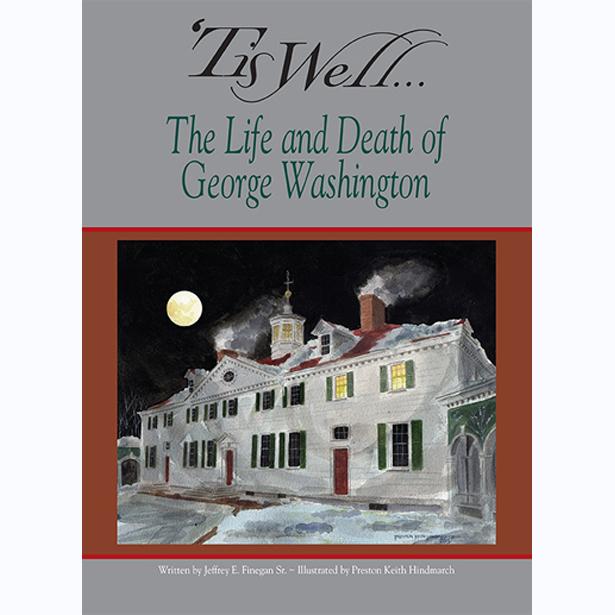
'Tis Well...
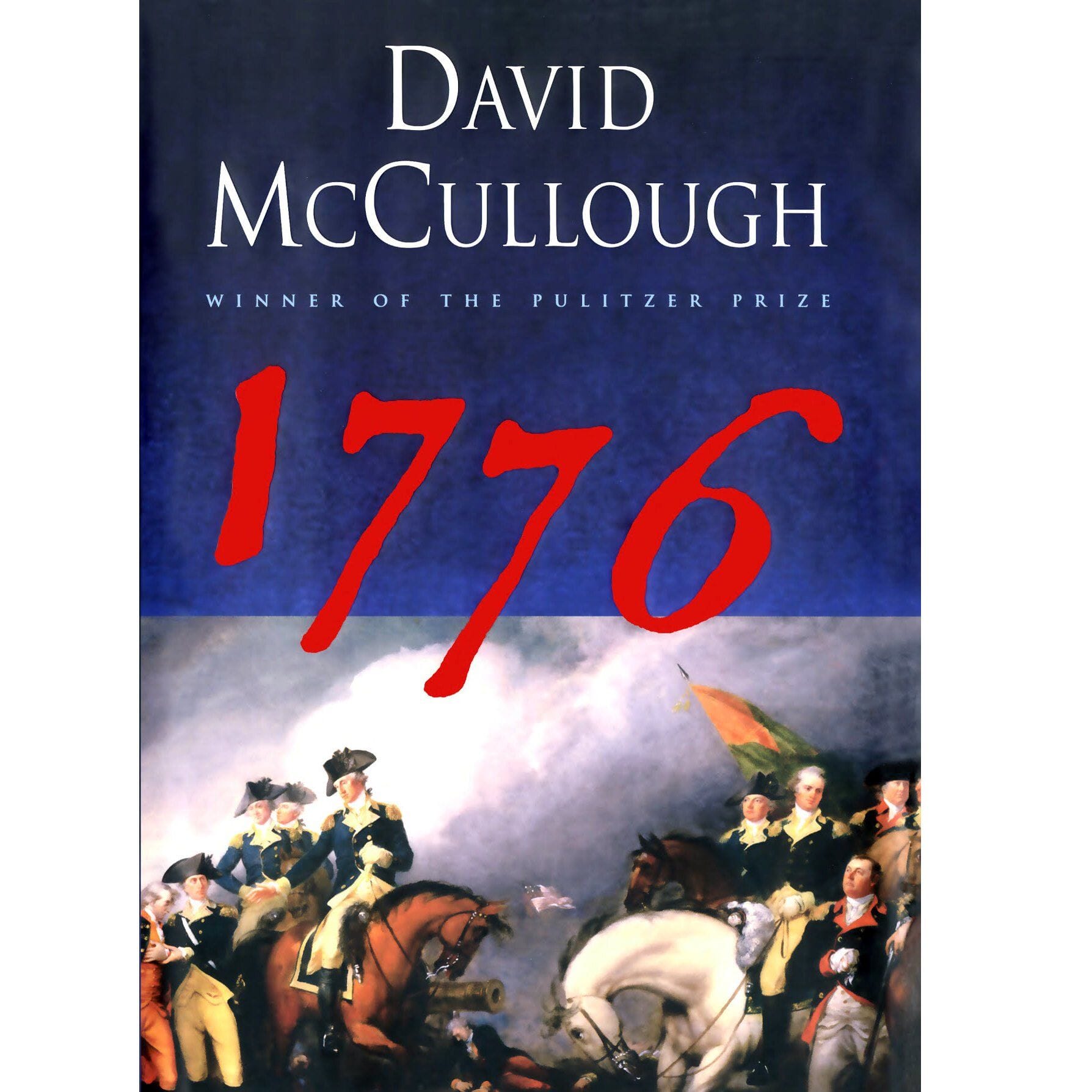
A Bloodless Victory
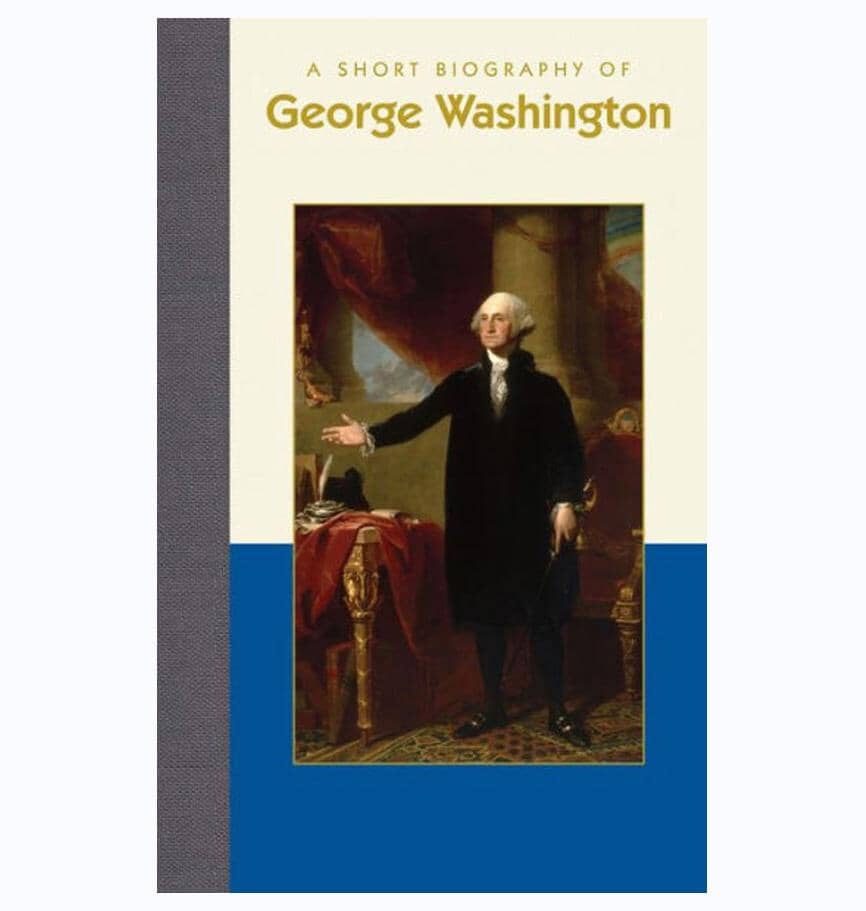
A Short Biography of George Washington

Acts of Congress 1789: Special Edition

Dining with the Washingtons - Signed Copy
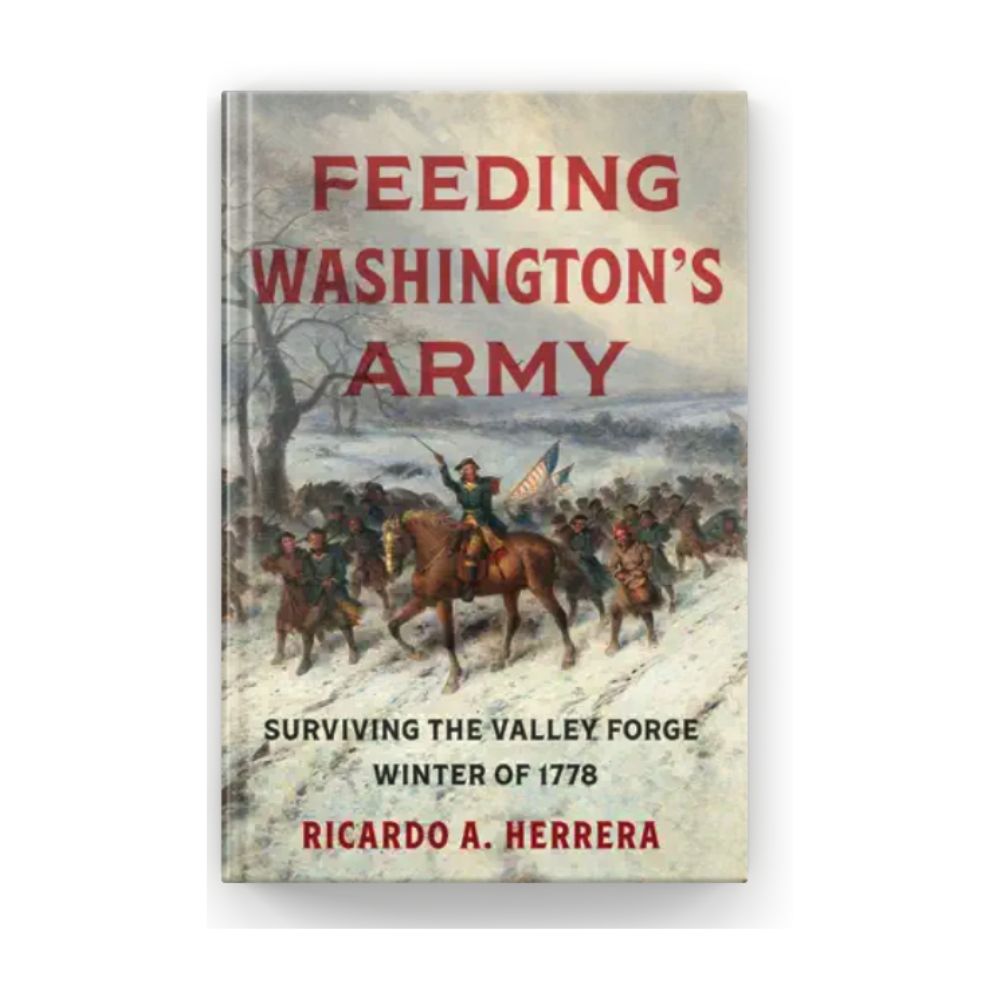
Feeding Washington's Army: Surviving the…
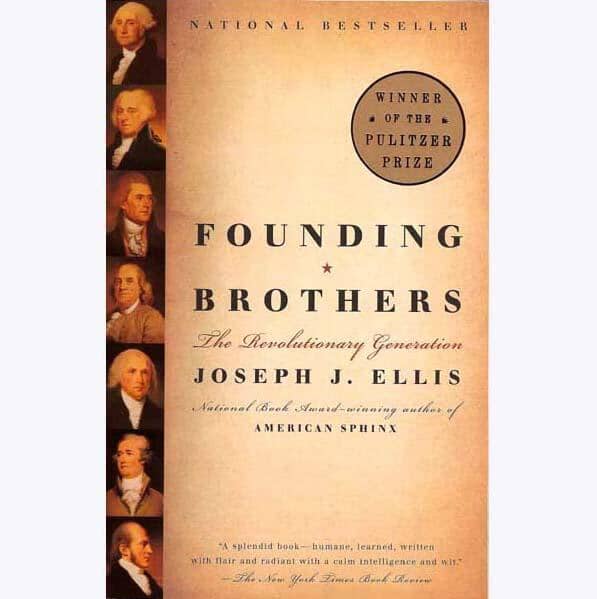
Founding Brothers: The Revolutionary Generation

Founding Gardeners
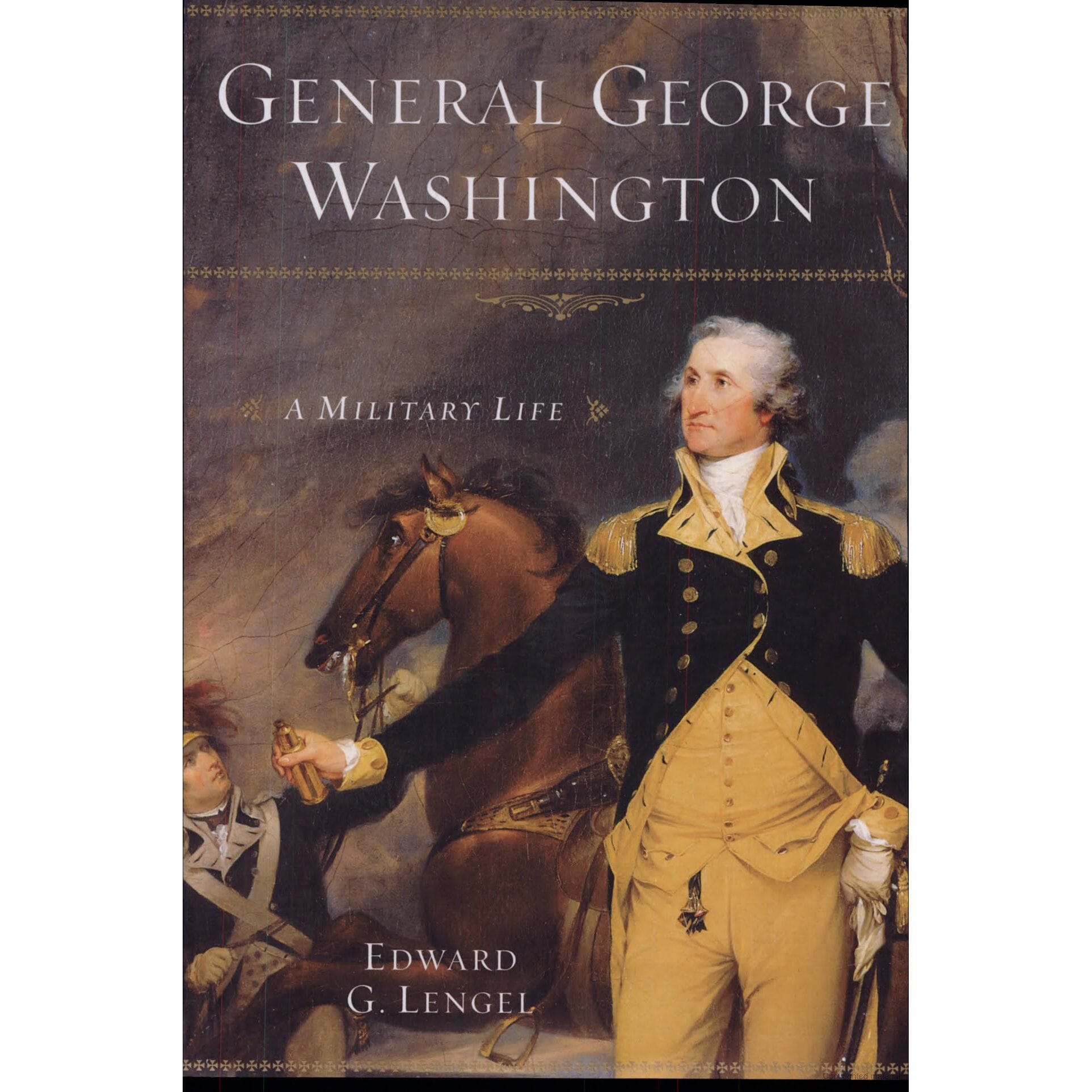
General George Washington: A Military Life
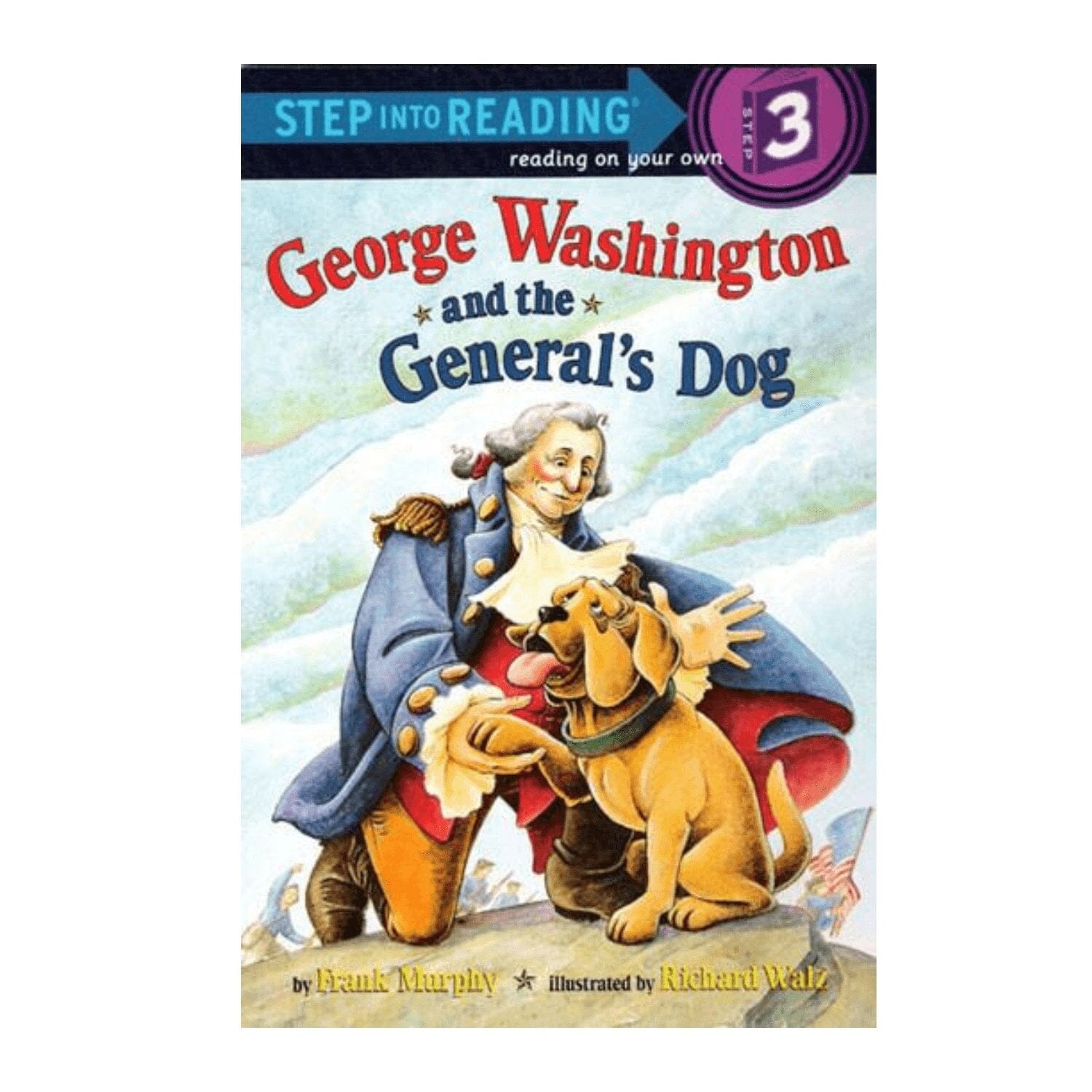
George Washington and the General's Dog
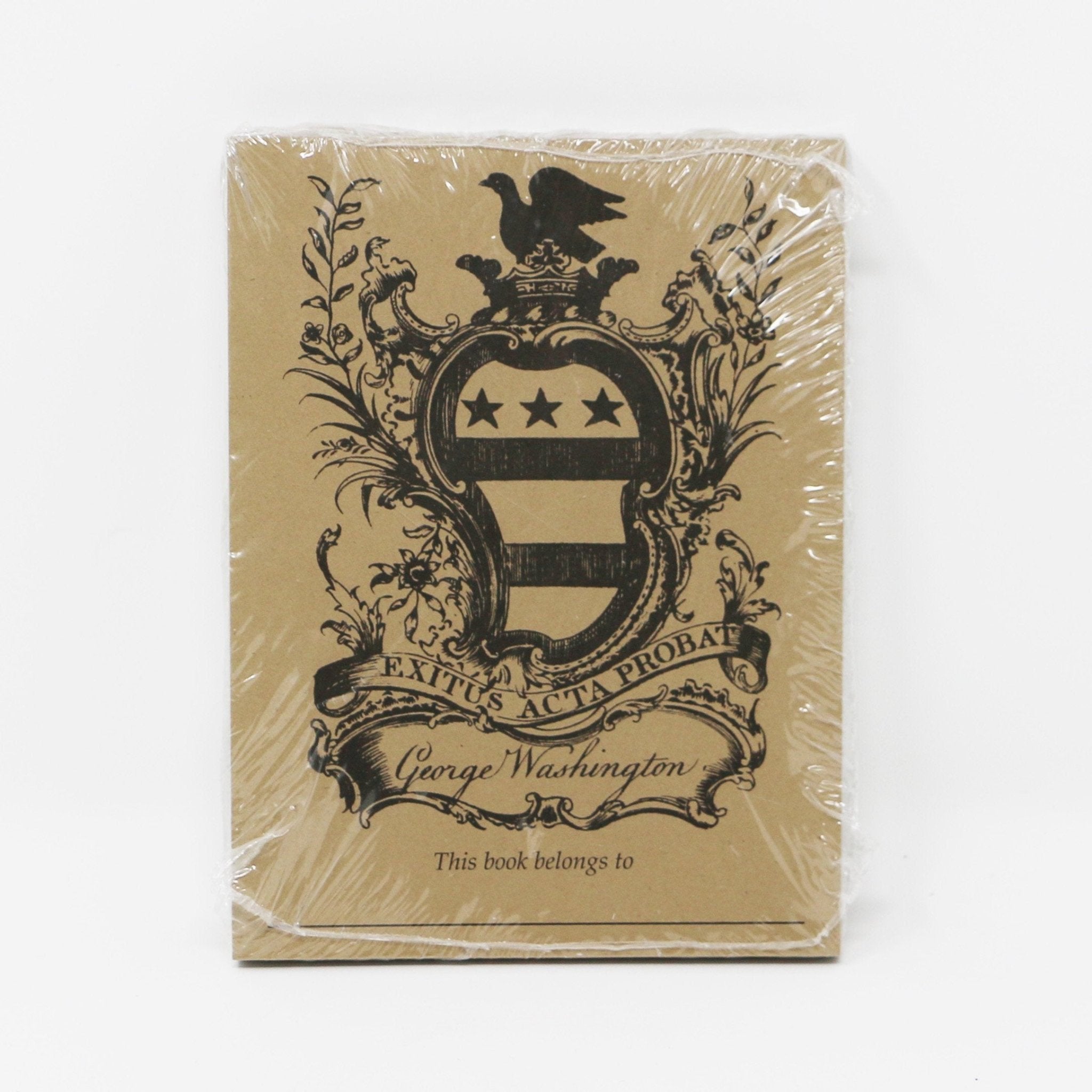
George Washington's Bookplate

George Washington's Farewell Address
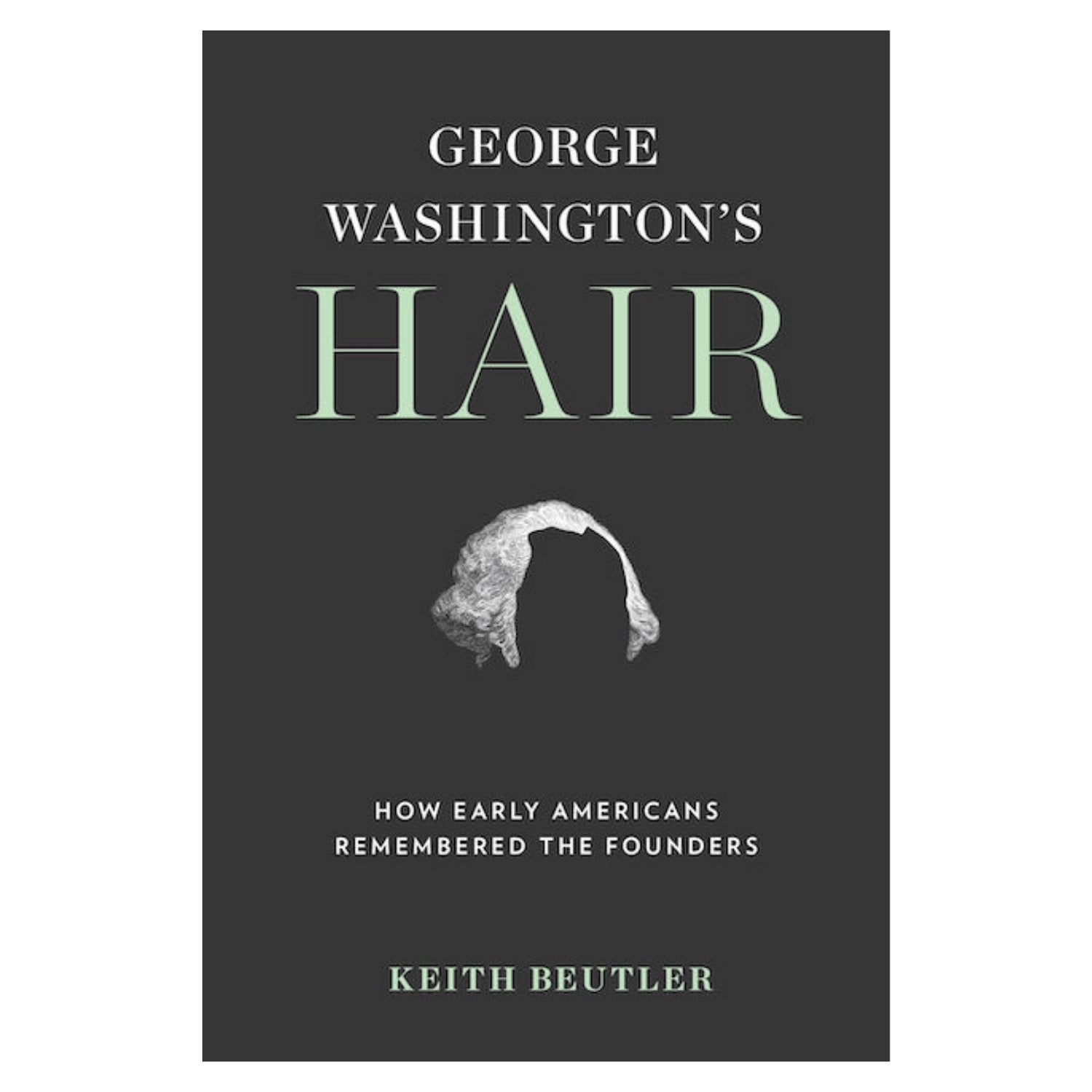
George Washington's Hair: How Early Americans…

George Washington's Leadership Lessons
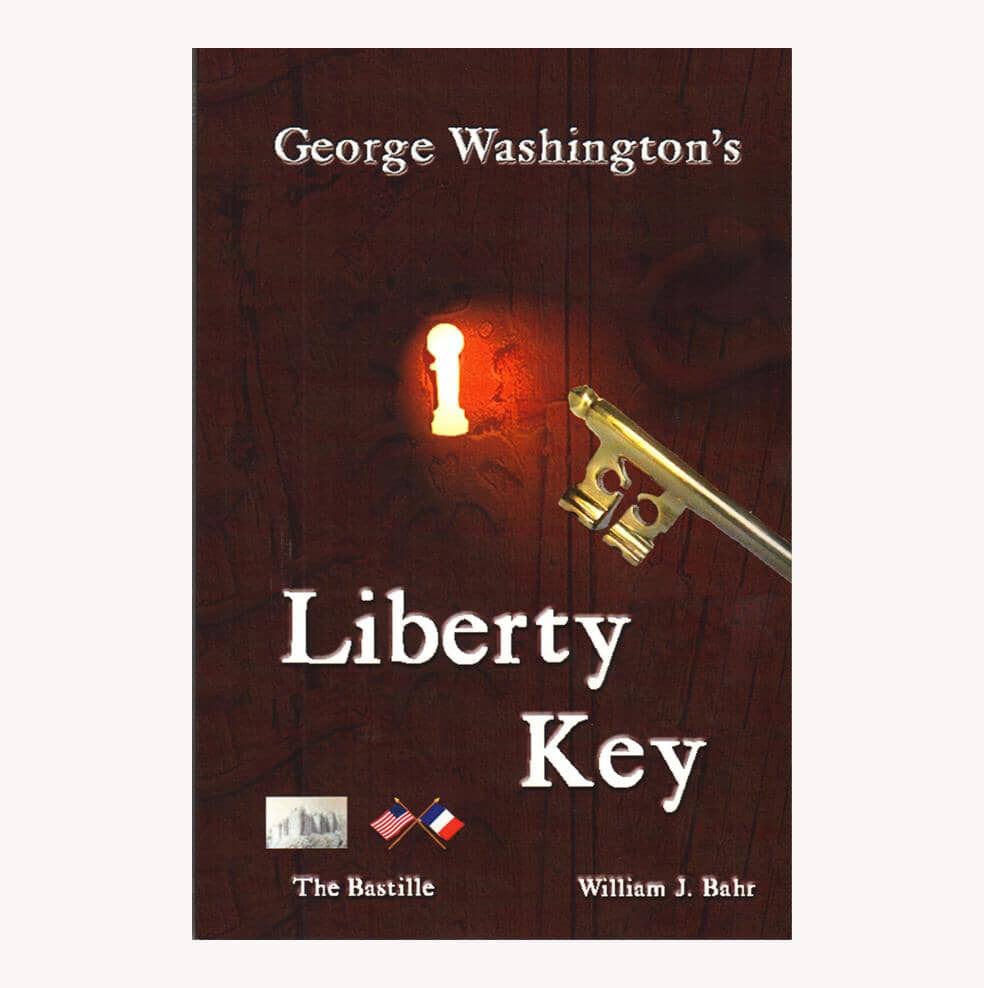
George Washington's Liberty Key
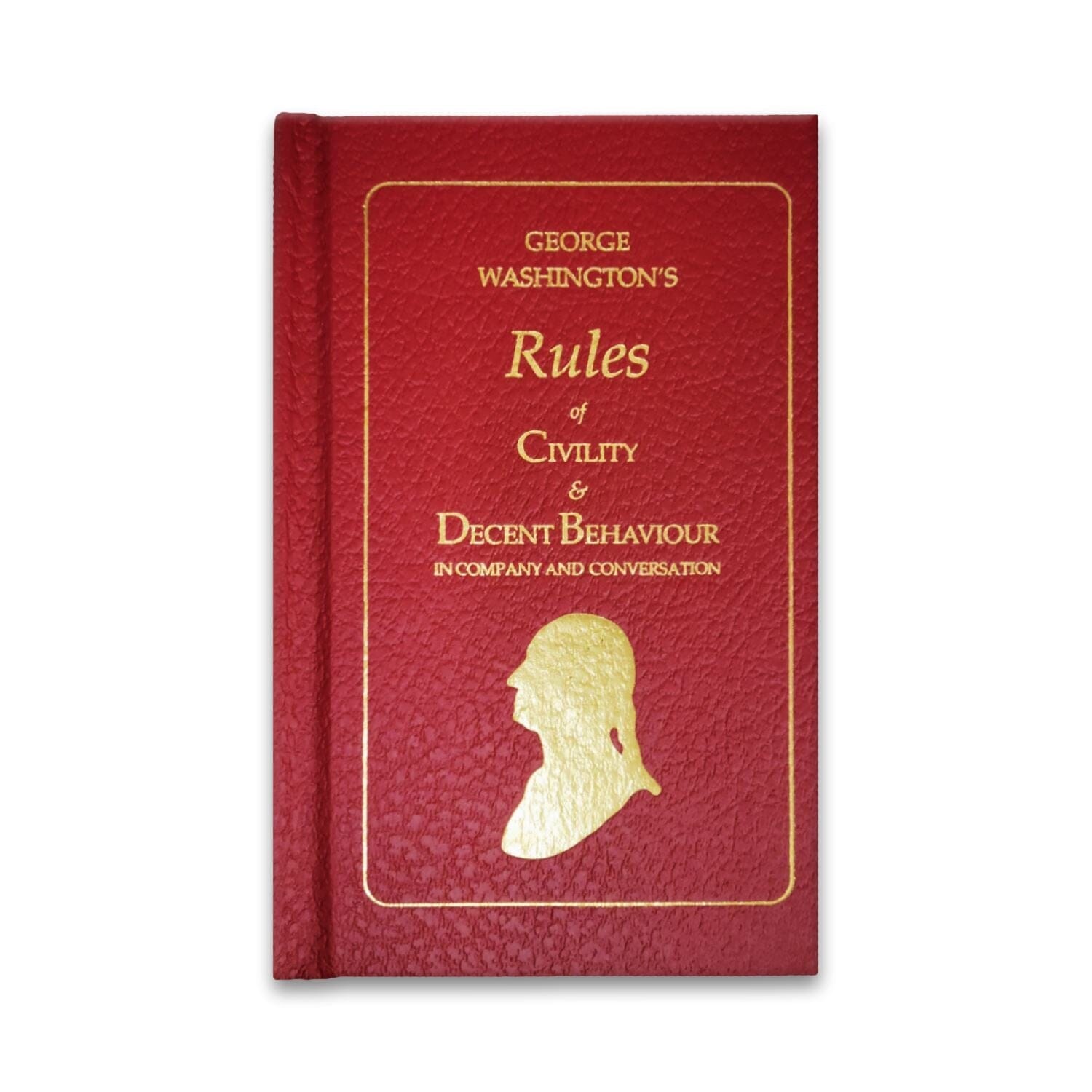
George Washington's Rules of Civility & Decent…

George Washington's Rules to Live By
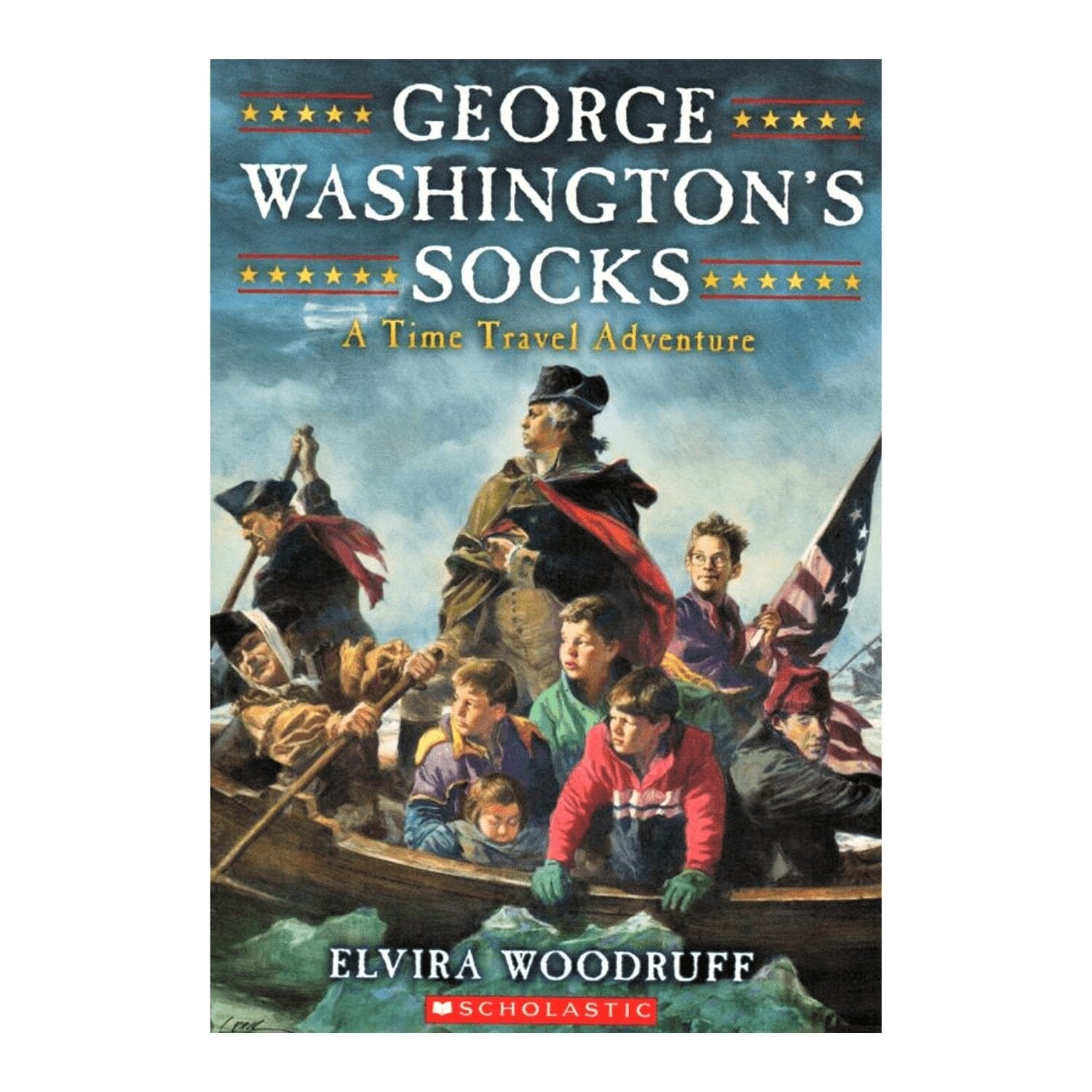
George Washington's Socks
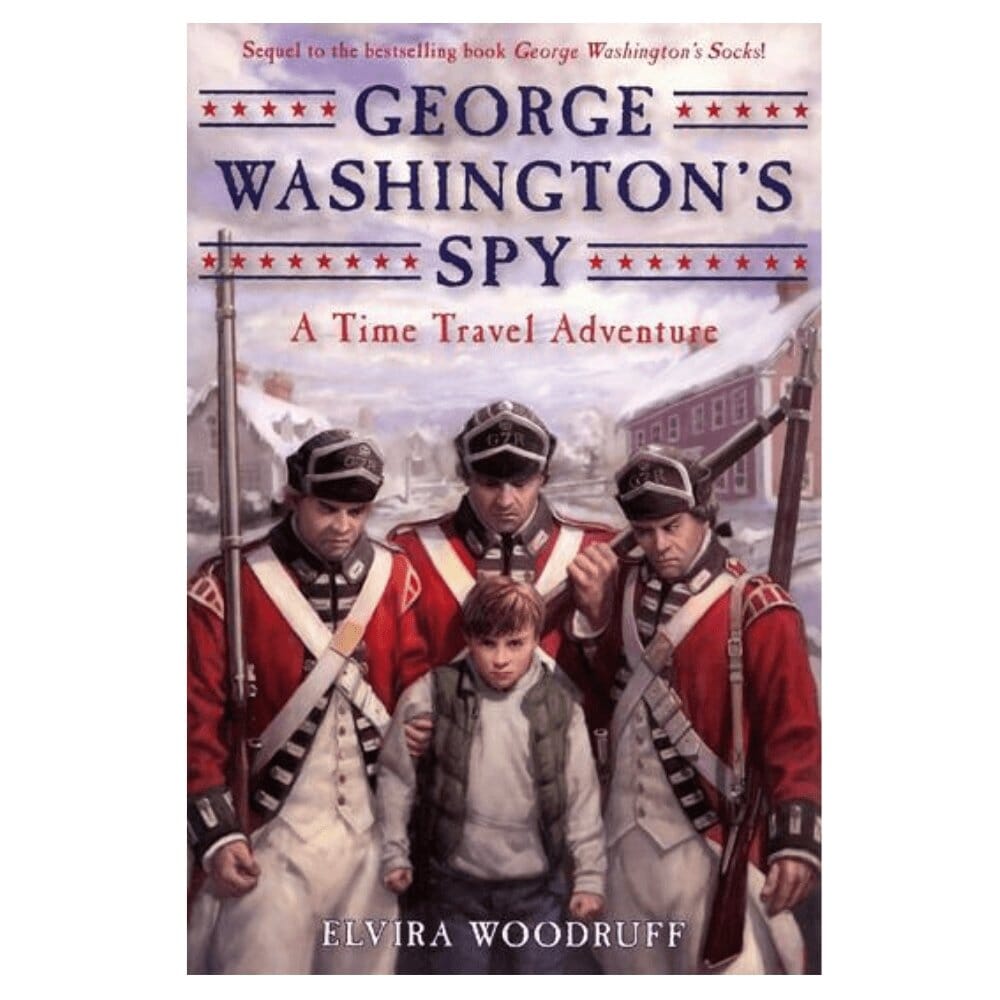
George Washington's Spy: A Time Travel Adventure

George Washington, Nationalist

George Washington, Pioneer Farmer
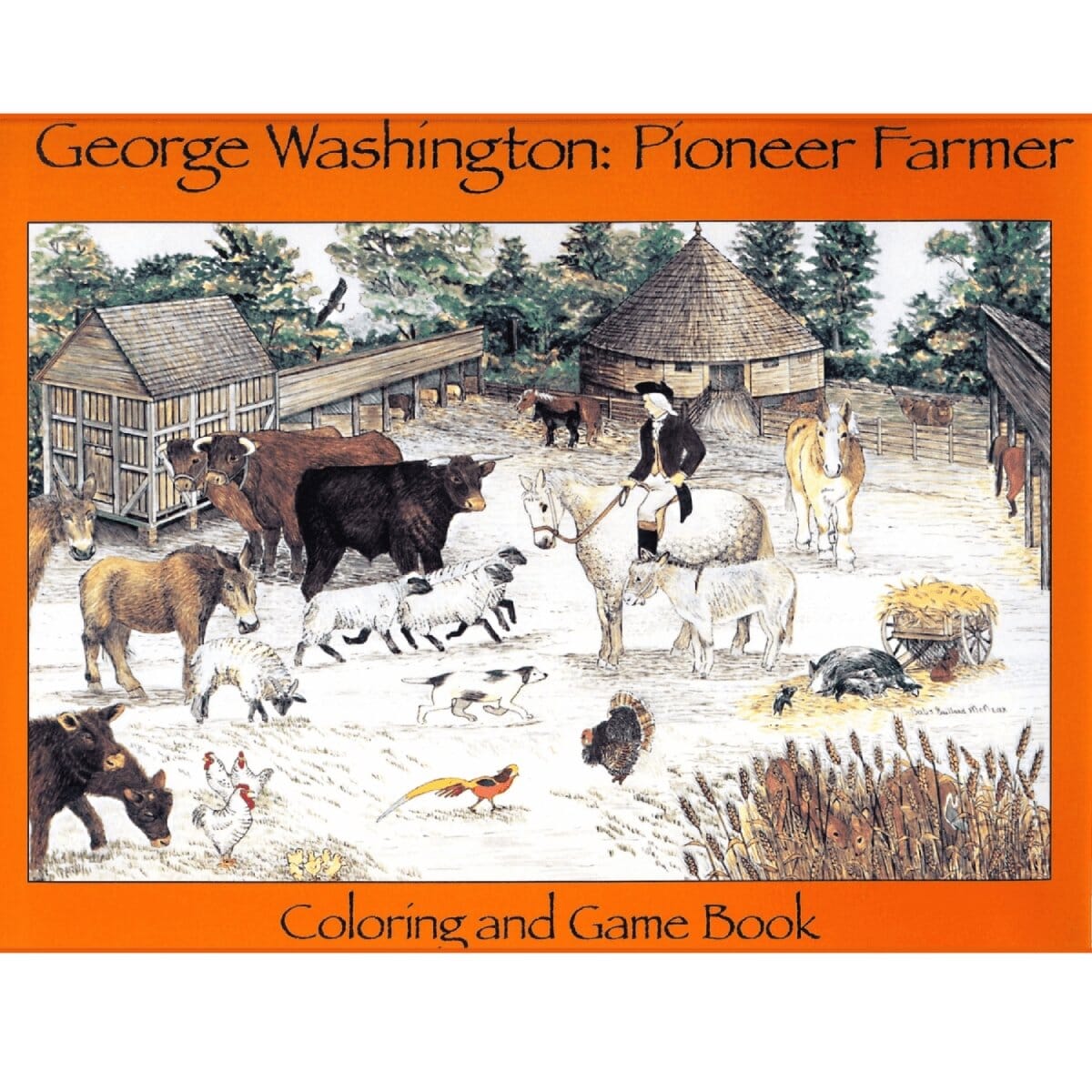
George Washington: Pioneer Farmer Coloring…
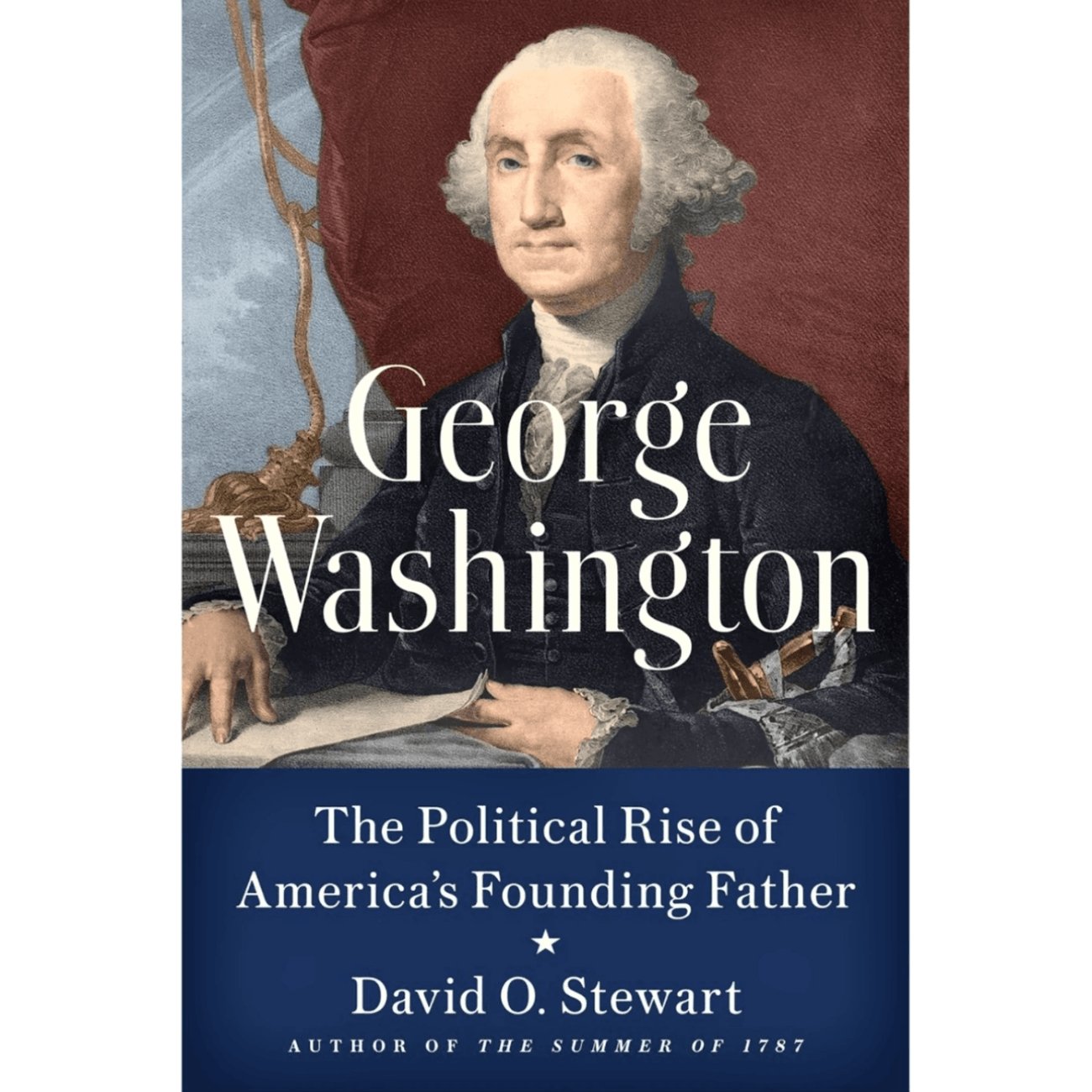
George Washington: The Political Rise of…

Heirs of an Honored Name

His Excellency: George Washington
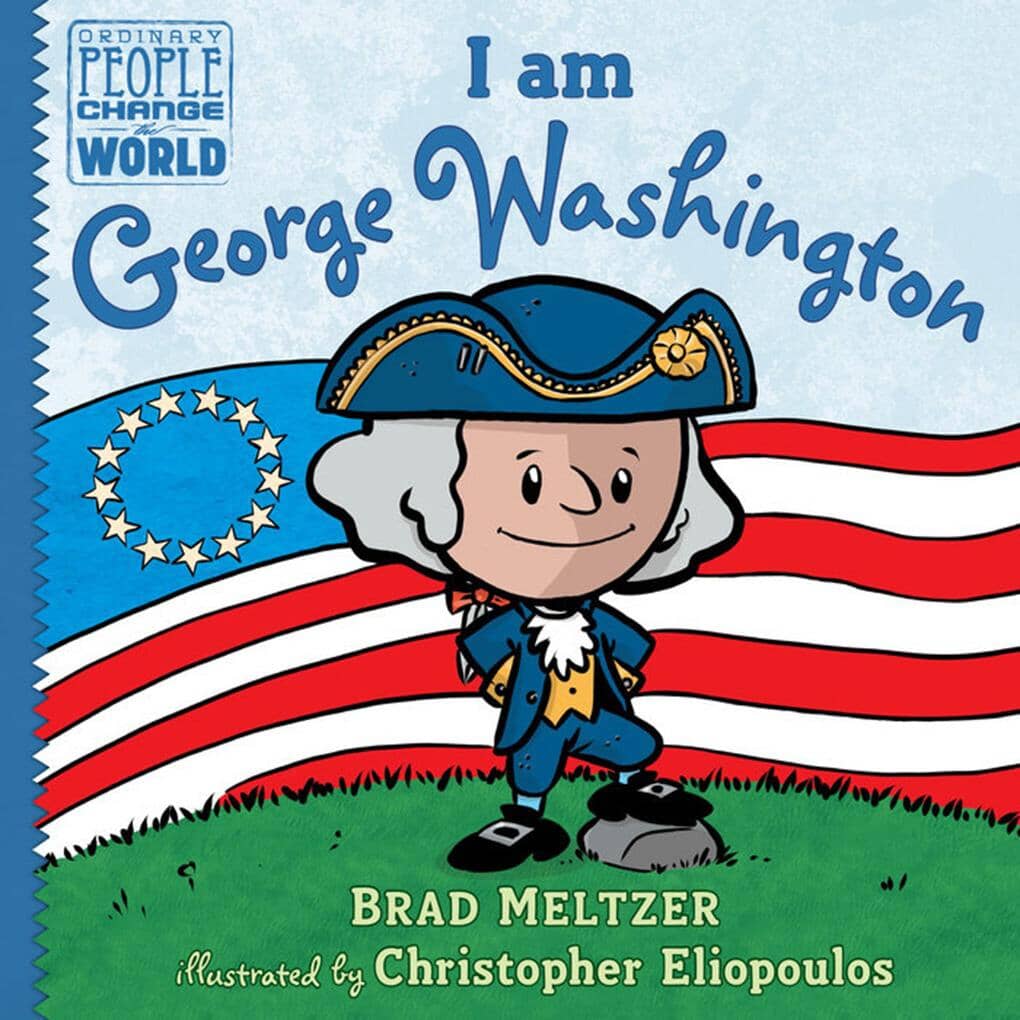
I am George Washington

Mount Vernon Love Story

My Little Golden Book About George Washington
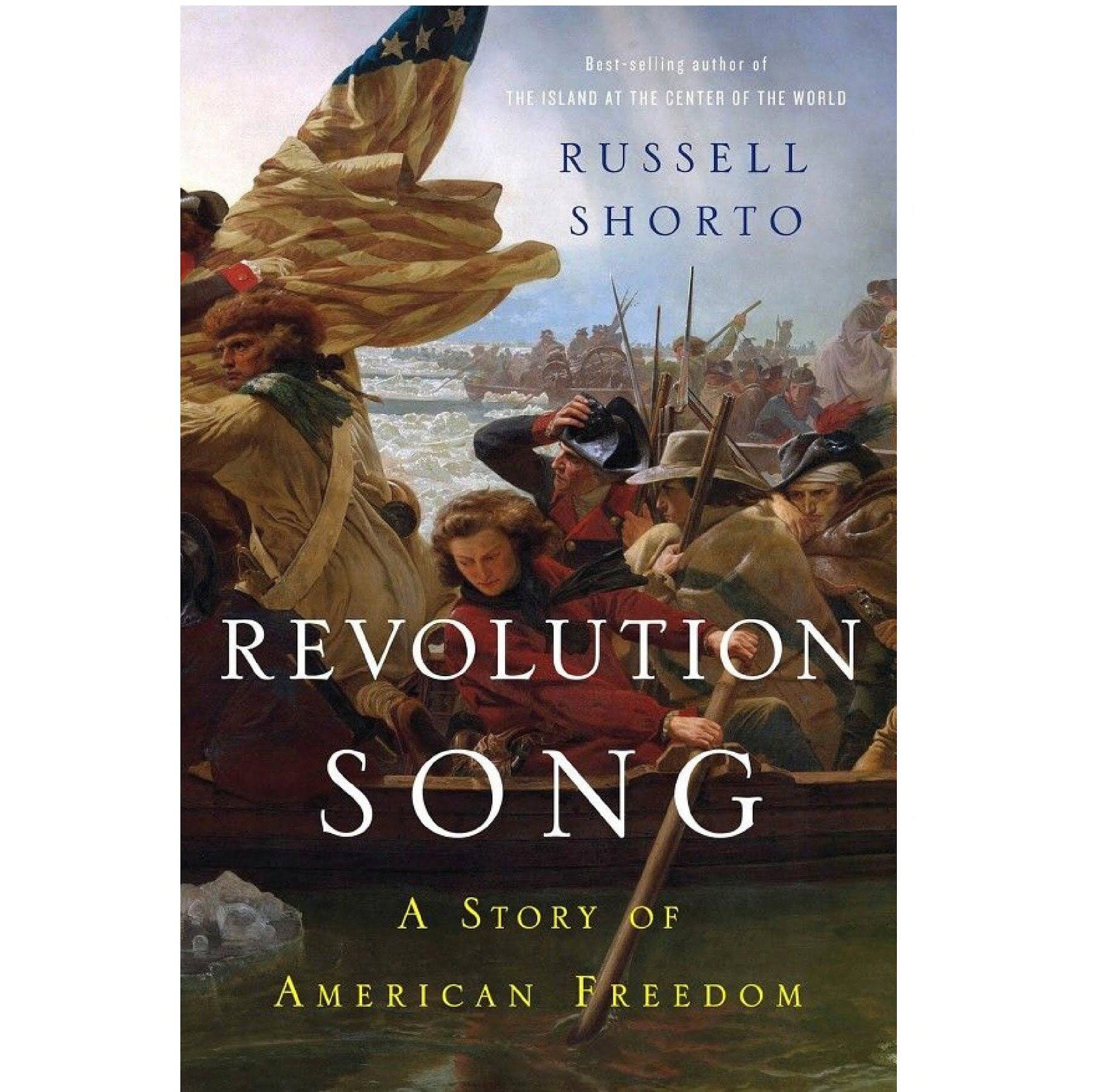
Revolution Song: A Story of American Freedom
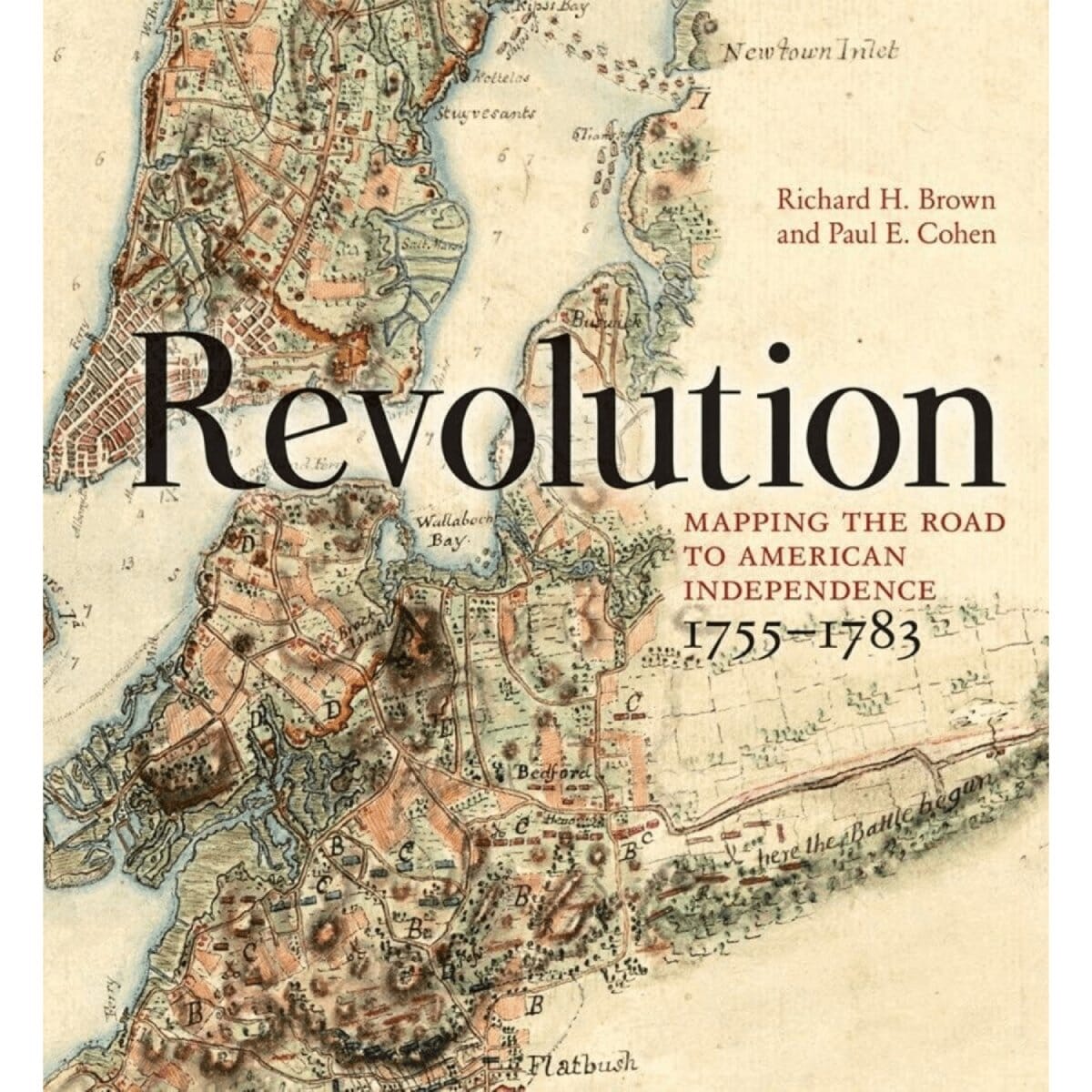
Revolution: Mapping the Road to Independence
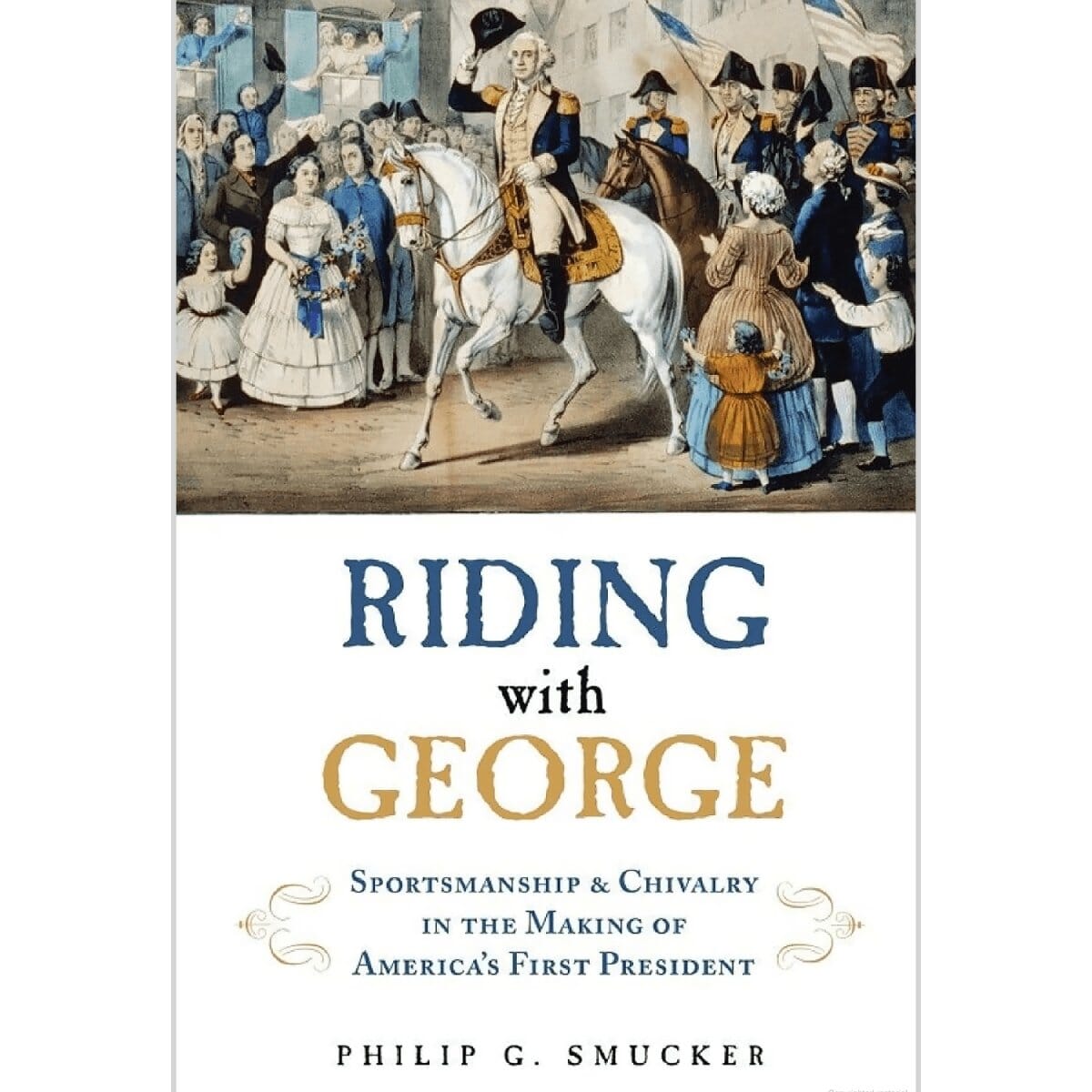
Riding with George
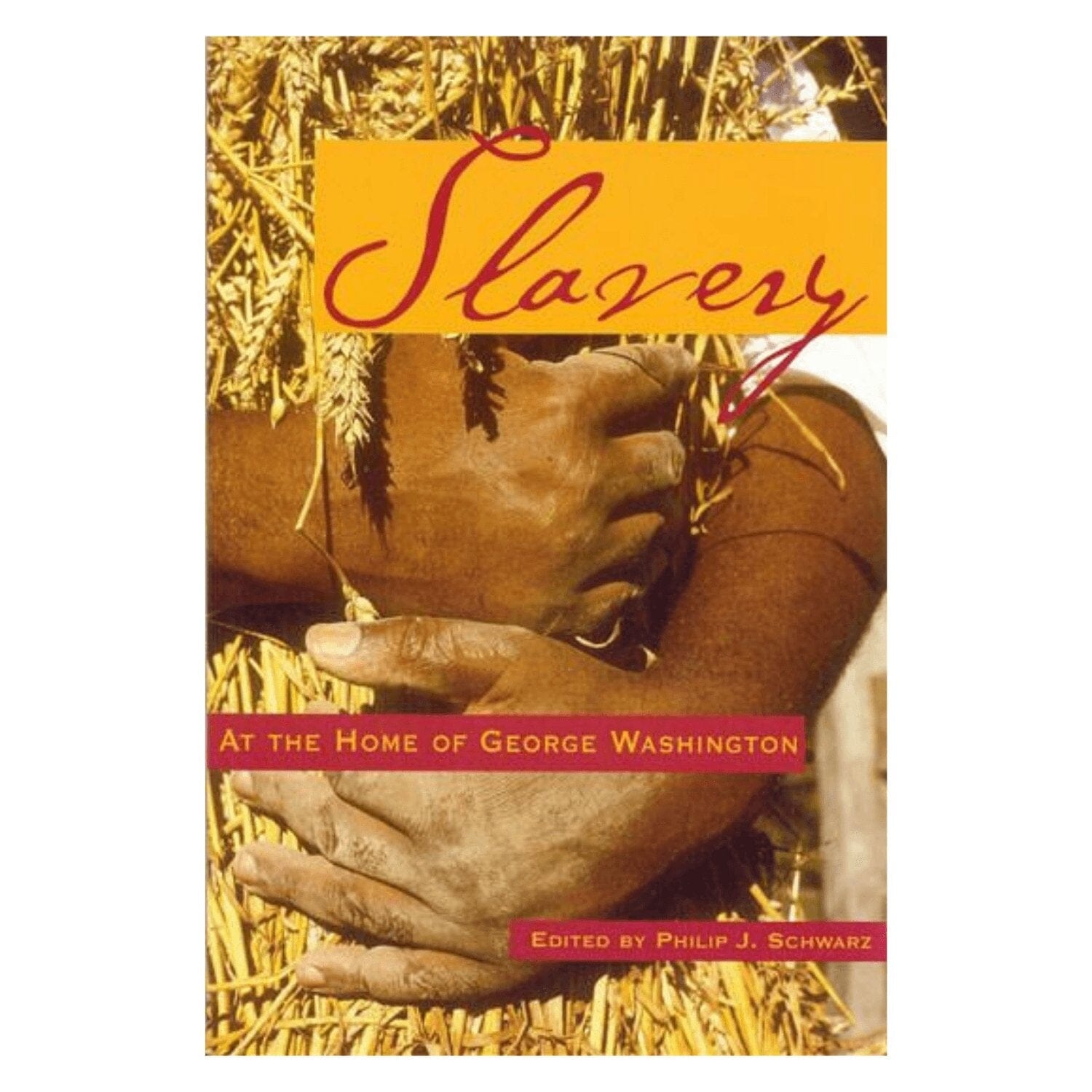
Slavery at the Home of George Washington

Spies At Mount Vernon

The Cause: The American Revolution and its…
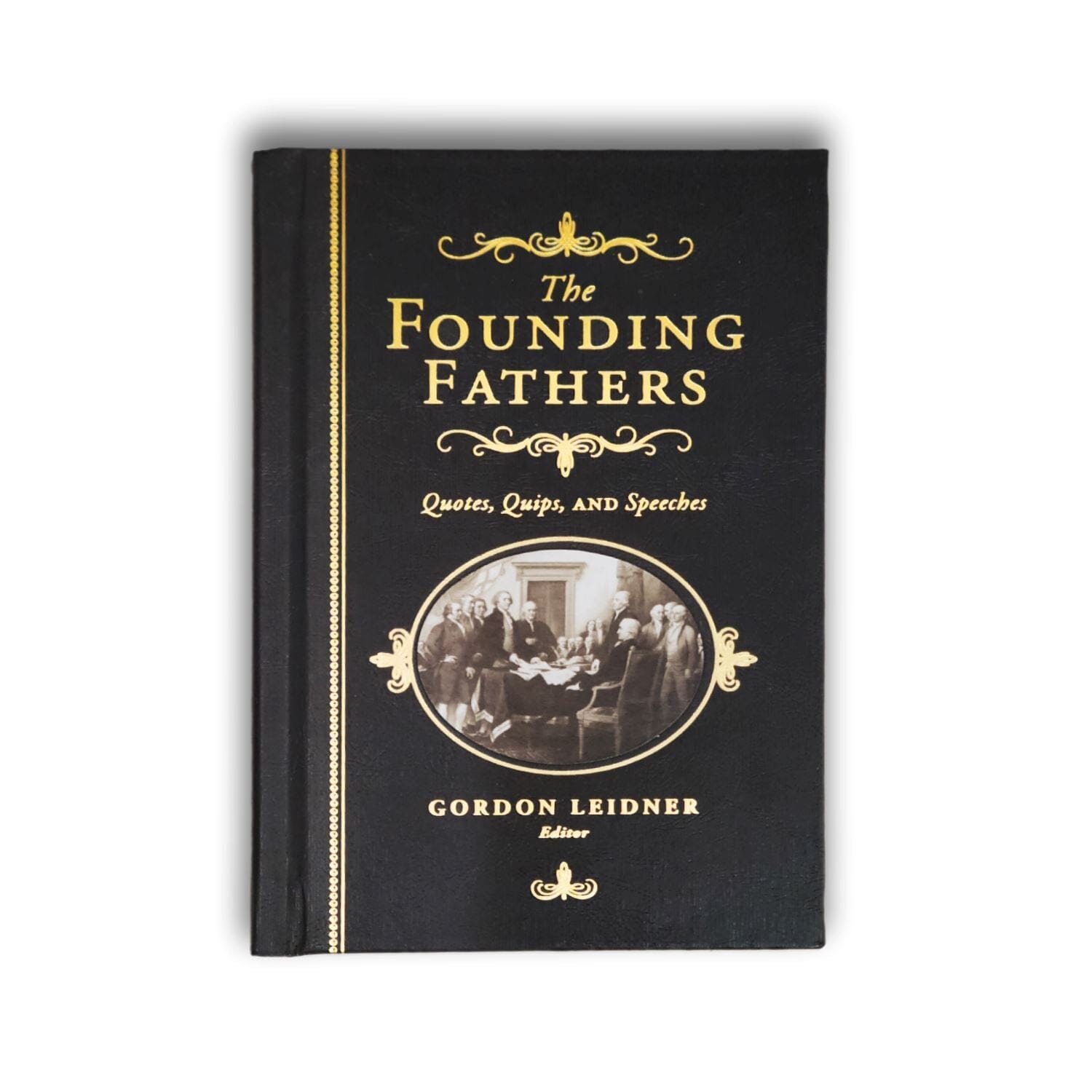
The Founding Fathers Quotes, Quips, and Speeches
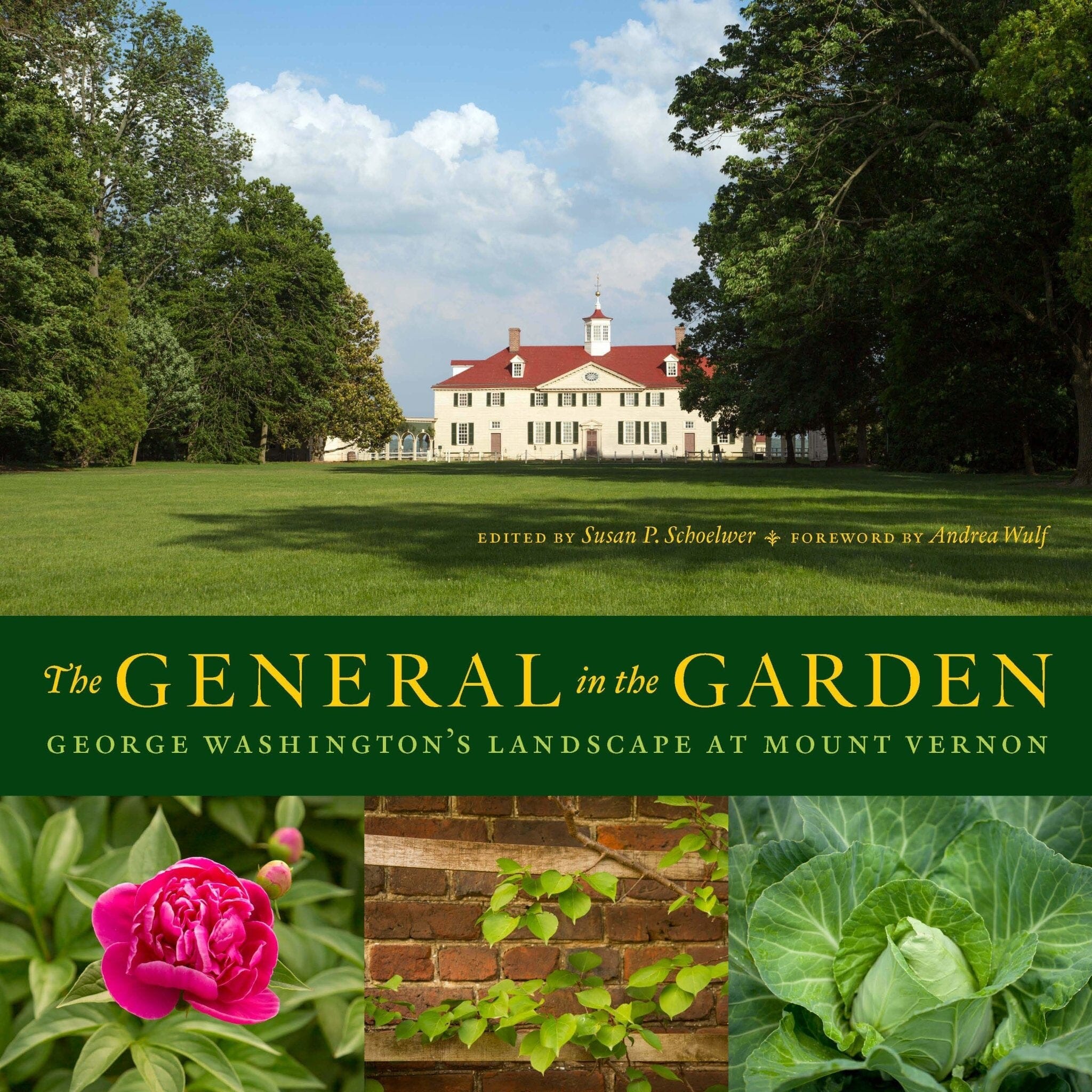
The General in the Garden
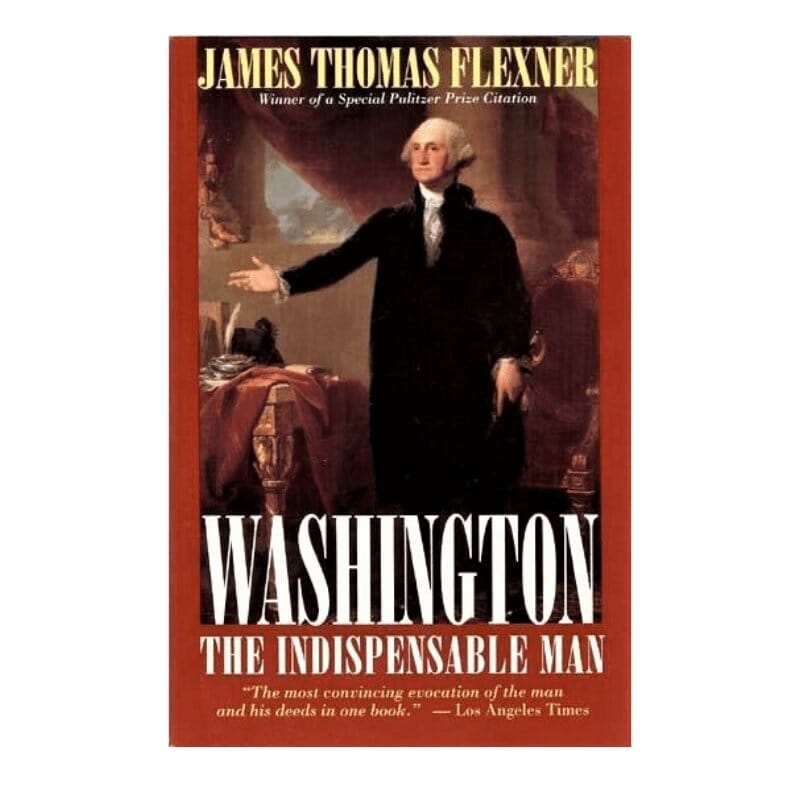
Washington The Indispensable Man
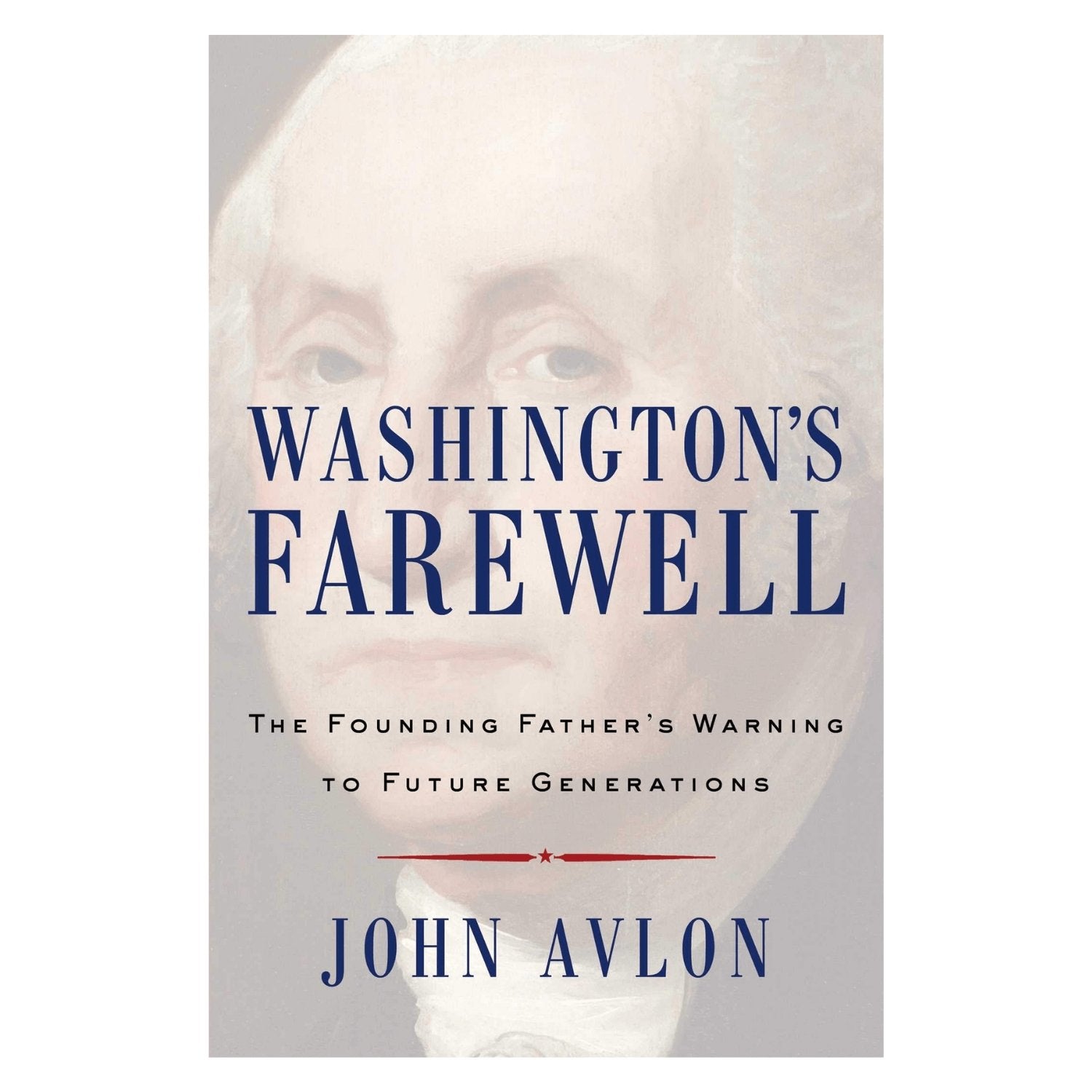
Washington's Farewell Warning : The Founding…

Washington's Spies

Washington: A Life
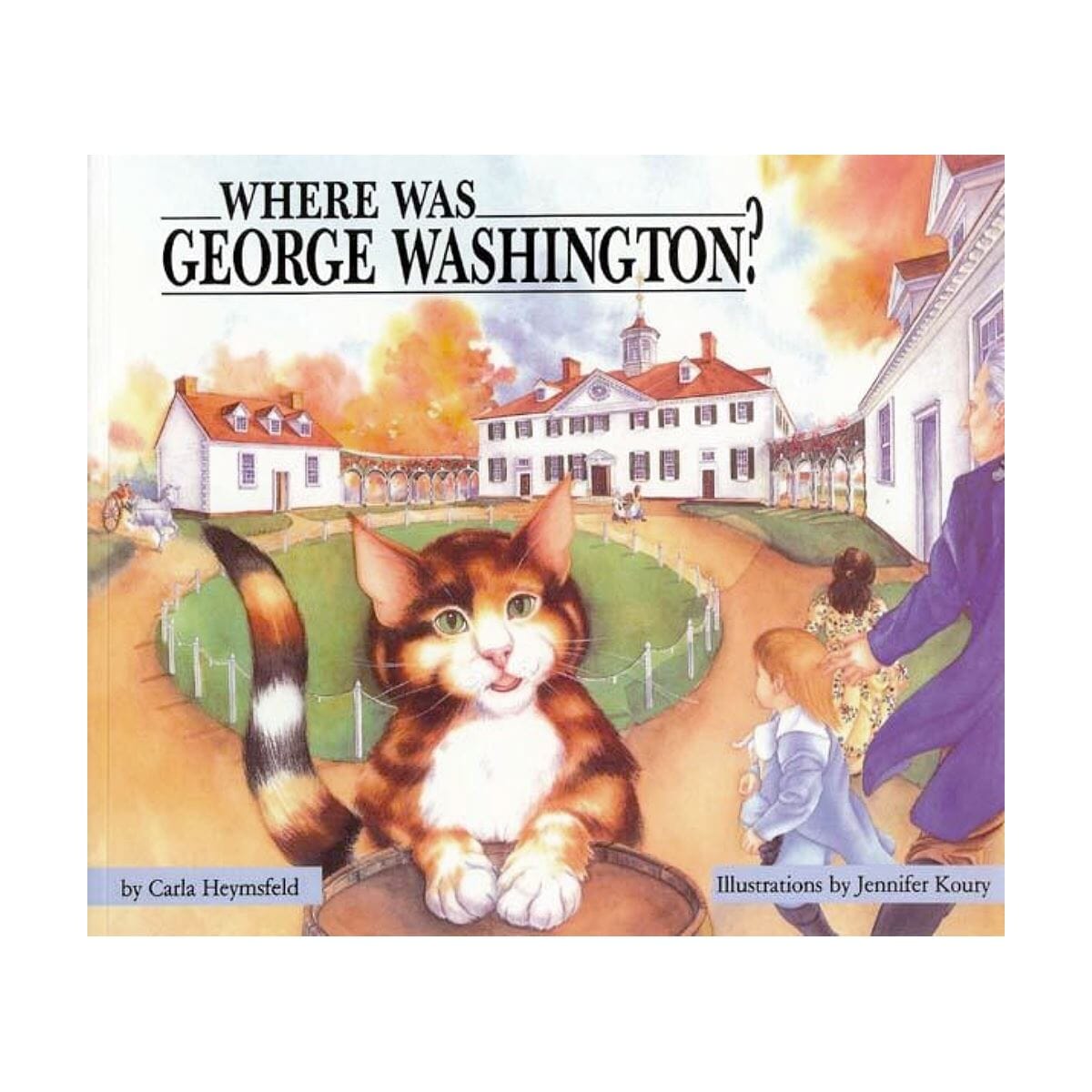
Where Was George Washington?

Who Was George Washington

Women in George Washington's World
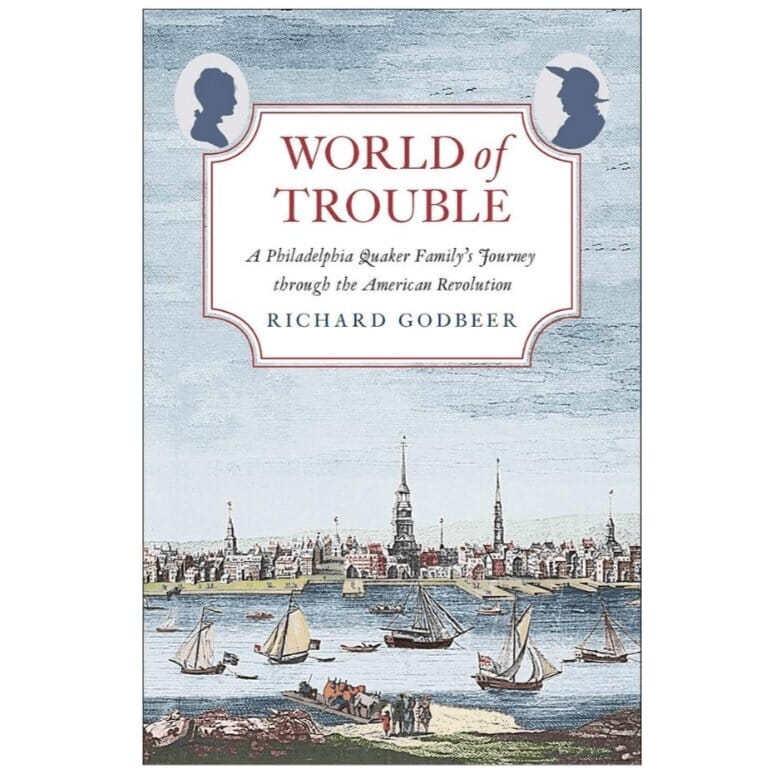
World of Trouble

Young Washington
Quick Links
9 a.m. to 5 p.m.
If the freedom of speech is taken away then dumb and silent we may be led, like sheep to the slaughter.
- George Washington
George Washington - The Founding Father

George Washington, fondly referred to as the "father of his country," was the first President of the United States of America, the Commander in Chief of the Continental Army during the American War for Independence, and one of the U.S. Founding Fathers. His life began in the countryside of Westmoreland County, Virginia on February 22, 1732. Born to Augustine and Mary Ball Washington, middle class farmers and plantation owners, George learned about farming at a young age after the early death of his father. Also, the untimely death of his father prevented young George from advancing past an elementary level education. Looking to advance himself vocationally and develop independence from his mother, George Washington became a surveyor for Culpeper County at the age of seventeen. This well-paying job was awarded to George mainly as a result of his connections with the wealthy and influential Fairfax family, a connection that George possessed because of his older brother Lawrence's involvement in both the Ohio Company (a land company funded largely by the Fairfax family) and the Virginia militia. Following a trip to Barbados with Lawrence, George contracted smallpox. He survived, but Lawrence died soon after the trip as a result of tuberculosis. The death of Lawrence opened up leadership positions in the Virginia milia; one of these open positions was given to George. Washington was now the the district adjutant militia leader for the Virginia militia.
Shortly after Washington received his new military position, conflict arose between France and Great Britain over the claim to western lands in North America, specifically, land in the Ohio Country. The British investing company known as the Ohio Company had laid claim to much land in the Ohio Valley. Because of the personal interests of several Ohio Company investors in Virginia and on orders from the government of Great Britain, the governor of the colony of Virginia, Robert Dinwiddie, sent a militia group to the Ohio lands to request the leave of French forces that had gathered there. George Washington graciously received the invitation to lead this expedition. After delivering the notice of claimed British lands to the French forces, Washington returned to Virginia. However, Governor Dinwiddie soon sent him back to the Ohio territory to oversee the building of a British military fort. While on his second expedition, Washington decided to attack a French militia unit under the command of Joseph de Jumonville. With the help of an Indian ally named Tanacharison, Washington's men secured a hasty victory. Either during the battle or afterwards in the taking of prisoners, Jumonville was killed. A retaliation by the French led to the capture of Washington and much of his militia at Fort Necessity; however, he was set free to return to Virginia soon afterwards. There was conjecture that Washington himself murdered the French commander or that he died at the hands of Tanacharison. Regardless, this incident was crucial in beginning the French and Indian War between France and Great Britain in North America in 1756.
During the French and Indian War, Washington saw action in battle at the Battle of the Monongahela. Serving as the chief American aide to the British General Edward Braddock, Washington rallied the British troops after an ambush by French and Indian forces left many of the British officers dead or wounded and the troops in a state of disarray. His bravery and the fact that he narrowly escaped the battle unharmed himself (he was shot four times through his coat and lost two horses from underneath him) helped to bolster Washington's reputation as a war hero. This resulted in Governor Dinwiddie appointing George Washington to Commander in Chief of the Virginia militia. He spent most of his efforts as commander defending the Virginia frontier from hostile Indian attacks. Although he lost many men as a result of these expeditions, he did succeed in making the Virginia frontier one of the safest among the colonies for settlers. Additionally, Washington served alongside the British army as the French and Indian conflict waged on. He was hardly successful in this, blundering his role in the Forbes Expedition to capture the western French Fort Duquesne. He unwittingly led his troops to open fire on a British unit, leading to casualties from friendly fire. George Washington resigned from the Virginia militia after this mistake, but still learned much from his early experiences in war, particularly the tactics of the British military with their strengths and weaknesses. Additionally, many of Washington's later political views were first birthed during this time in his life: he recognized the need for a strong central government that had the ability to act quickly and definitively. Based on this belief, he would later come to espouse the political views of the Federalist Party.
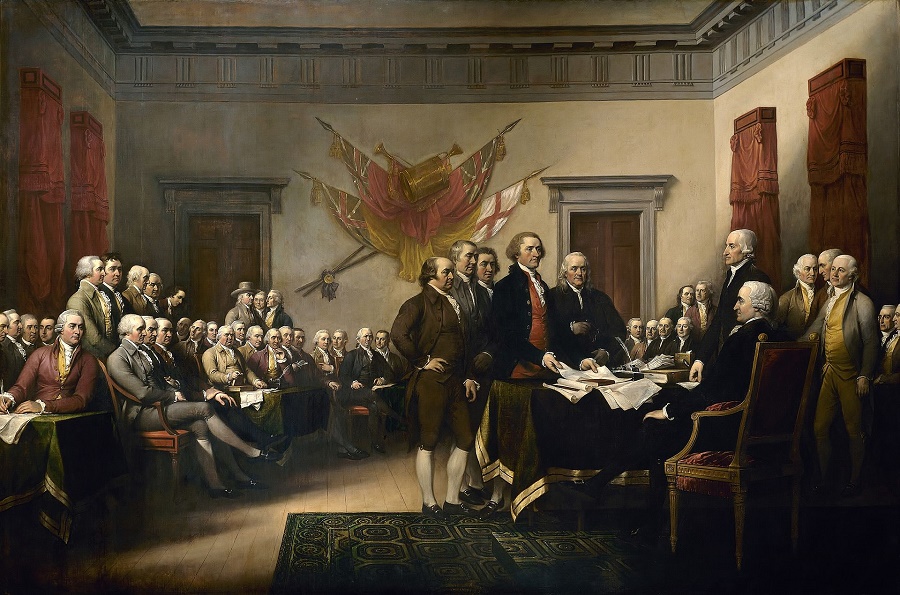
Following his service in the French and Indian War, Washington returned to civilian life with his marriage to Martha Dandridge Custis, a wealthy widow. Not only did George Washington increase his wealth and the size of his estate with this marriage, but also he became a father to Mary's children John Parke Custis and Martha Parke Custis. George and Martha never had any children of their own. Washington acquired even more land because of his service in the French and Indian War; Governor Dinwiddie awarded over 20,000 acres of land in the Ohio territory to George Washington. With this significant increase in land and wealth, Washington rose in Virginian society to the level of an aristocrat and became involved in local politics as a member of the Virginia House of Burgesses in 1758.
Washington's involvement in politics, however, soon landed him back on the battlefield. After actively opposing the Stamp Act of 1765 and the Townshend Acts, Washington drew up a proposal to boycott British goods until the repeal of these unfair taxes on the American colonies. Soon, the fighting with Great Britain became more than political. During the summer of 1775, Washington was appointed the Commander in Chief of the Continental Army by the American colonies' legislative body, the Continental Congress. As Commander in Chief, Washington was responsible for leading the Continental army, training the army, and serving as the public face of the American Revolution.
The American War for Independence began with the two skirmishes at Lexington and Concord. Washington was not directly involved in these preliminary battles, as he became Commander in Chief directly afterwards. Washington's time as the commander of the colonial forces was full of both victories and significant defeats. At the beginning of the war, George Washington drove the British out of the major city of Boston, but then lost the great city of New York shortly after. Following this great defeat, Washington gave life back to the colonial efforts by winning small battles at both Trenton and Princeton, New Jersey in December 1776. The next year, the British, under the command of General Howe, defeated Washington's army at Philadelphia and captured the city that served as the rebel forces political capital. This significant loss prompted several members of the Continental Congress to question Washington's competency as the leader of the Continental Army. Despite the doubts about Washington, enough support remained among the army and the political leaders of the colony for the commander to keep his title. The winter of 1777 saw the colonial army encamped at Valley Forge, where they suffered massive casualties, mainly from disease. Following this bitter winter, Washington followed the British army as they evacuated the recently captured city of Philadelphia to retreat to their stronghold at New York. Washington attempted to attack them at the Battle of Monmouth, but this proved to end in a stalemate. The winter of 1779-1780 was another difficult season for Washington and his men. Supplies ran scarce once again, and the treason committed by Benedict Arnold became public. However, the next summer proved to be more successful. Aided by their ally France with both ground troops and a naval force, George Washington delivered a decisive victory over the British in the Battle of Yorktown. A formal peace treaty was not signed until September 1783, the Treaty of Paris. Shortly thereafter, Washington retired to his estate in Mount Vernon, Virginia to attend to his lands and farms.
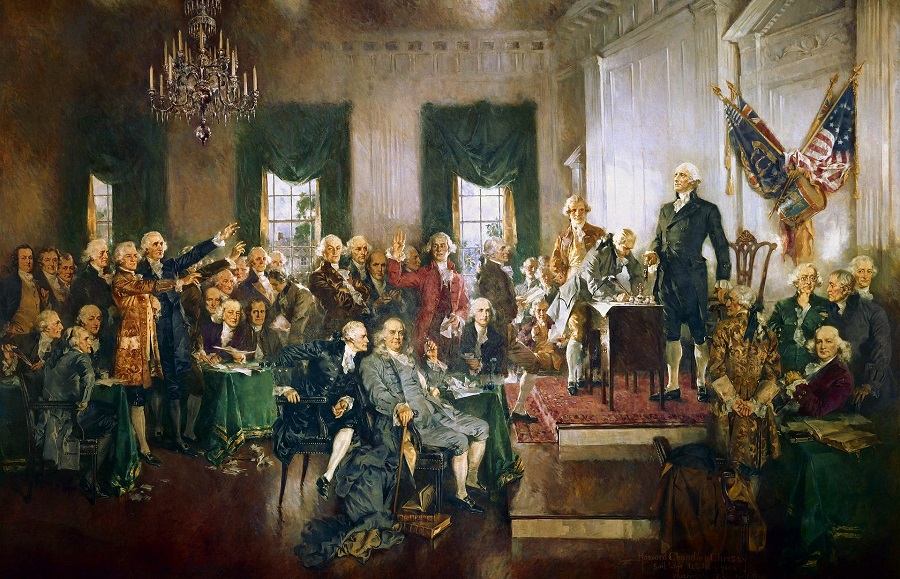
George Washington's retirement was brief, as he was called to the Constitutional Convention to assist in crafting a government for the newly independent colonies. Serving as the president of the Convention, he strongly disapproved of the proposed Articles of Confederation, claiming that they would establish a weak central government for the new nation. Following the ratification of the Constitution (the replacement for the Articles of Confederation), George Washington was unanimously elected as the first President of the United States of America in 1789. He reluctantly was elected to a second term in 1792. As the first U.S. President, George Washington set many precedents: he opted to serve only two terms, he removed all royal "flair" from the office of President, he initiated public addresses to Congress, and he formed a cabinet of personal advisers to assist him in making leadership decisions. Additionally, he tended to favor and promote the actions of a strong central federal government. For example, in 1794, Washington sent state militias to suppress what became known as the Whiskey Rebellion, a protest to an excise tax on distilled spirits that had been implemented by Congress three years earlier. Both his show of force and his support of taxation by the central government proved George Washington's support of the Federalist principles of strong federal government. In foreign affairs, Washington adopted a policy of diplomacy and neutrality throughout his presidency. After the end of his second presidential term, Washington penned his Farewell Address, in which he urged the young nation to practice national unity, abide by the Constitution, uphold morality, and adopt international independence in foreign affairs.
George Washington retired to his Mount Vernon home once again in 1797 upon the completion of his presidency and political career. He devoted most of his time to caring for and expanding his estate. However, he did accept a military leadership position the following year as the senior officer of the United States Army as tensions with France heightened. On December 13, 1799, Washington came down with a severe sore throat and other cold-like symptoms. His symptoms rapidly progressed, and doctors were called to his aide at his home. A believer in the ineffective medical practice of bloodletting, in which a sick patient is bled in order to rid the body of disease, Washington allowed the three physicians attending to him to bleed almost half of his body's blood supply. When he died around 10:00 pm on December 14, it was most likely due to shock. George Washington's death was publicly mourned not only in the United States but also in several European nations. The legacy of George Washington is one that will not be soon removed from both the iconic and factual history of the U.S.A. From his title as the "father of his country" to his portrait on the American dollar to a monument constructed to his honor in America's capital city, George Washington was indeed "first in war-first in peace-and first in the hearts of his countrymen." Today, George Washington is recognized as the most admired U.S. president in history, along with Abraham Lincoln .
U.S. Presidents
George washington.
First president of the United States
The son of a landowner and planter, George Washington was born on February 22, 1732, in the British-ruled colony of Virginia . His father died when he was 11, and his older brother, Lawrence, helped raise him. Washington was educated in basic subjects including reading, writing, and mathematics, but he didn’t attend college. Not much else is known about his childhood. Stories about his virtues—such as his confession of chopping down his father’s cherry tree—were actually invented by an admiring writer soon after Washington’s death.
During his 20s, he fought as a soldier in the French and Indian War, Great Britain’s fight with France over the Ohio River Valley territory. After the war, Washington returned to Virginia to work as a farmer.
Virginians elected Washington to their colonial legislature, or government, when he was 26. Soon after, he married Martha Dandridge Custis, a wealthy widow with two young children. They settled at Mount Vernon, a family home Washington had inherited.
REVOLUTIONARY WAR HERO
As a government official, Washington spoke out against unfair laws, such as high taxes, during Great Britain’s rule. In 1774 and 1775, he was one of Virginia’s representatives at the First and Second Continental Congresses, a group of representatives from the 13 colonies that would eventually become the United States. The Second Congress helped future third president, Thomas Jefferson , write the Declaration of Independence in July 1776, proclaiming that the 13 colonies were now independent states, no longer under British rule. An army was formed to oppose the British, and Washington was selected to lead it.
For five years, Washington served as the head of the army as the Revolutionary War against the British raged. The British finally surrendered in 1781 at Yorktown, Virginia. Washington was now a hero, seen as an important person who helped the colonies finally gain independence from Great Britain . After the war, Washington retired from the army and returned to private life.
PATH TO PRESIDENCY
After the end of the war, the former colonies operated under the Articles of Confederation, a document that placed most power with the states. For example, each state printed its own money. There was no national leader. The individual states were not supporting each other as one country, and the new nation seemed to be in trouble.
In 1787 state representatives gathered in Philadelphia, Pennsylvania , at the Constitutional Convention to fix these problems. There, the delegates wrote the Constitution of the United States. This document created a strong federal government: two chambers of legislators (also called lawmakers), a federal court system, and a president. The Constitution still serves as the foundation for the United States government today.
Based on the Constitution’s directions, states chose representatives to elect a president. Washington won the vote, making him the first-ever president of the United States. John Adams received the second most votes and became vice president.
SETTING TRADITIONS
As the nation’s first president, Washington set the example for other presidents. He worked out how the nation would negotiate treaties with other countries. He decided how the president would select and get advice from cabinet members. He also established the practice of giving a regular State of the Union speech, a yearly update on how the country is doing. He appointed federal judges and established basic government services such as banks. As president, he also worked hard to keep the new country out of wars with Native Americans and European nations.
During Washington’s time as president, New York City was the nation’s temporary capital; then Philadelphia, Pennsylvania. Although Washington helped plan a permanent national capital, his presidency ended before the federal government moved to the city later named in his honor: Washington, D.C.
LASTING LEGACY
After serving two back-to-back terms as president, Washington retired to Mount Vernon in 1797. He died two years later on December 14, 1799. Washington, who kept one of the largest populations of enslaved people in the country, arranged in his will for them to be freed by the time of his wife’s death. After his death, he was praised as being "first in war, first in peace, and first in the hearts of his countrymen."
• Washington is the only president to have a state named for him. • The first president was so worried about being buried alive, he insisted mourners wait at least three days before burying him. Just in case. • The first president is the only president not to live in the White House.
From the Nat Geo Kids books Our Country's Presidents by Ann Bausum and Weird But True Know-It-All: U.S. Presidents by Brianna Dumont, revised for digital by Avery Hurt
more to explore
(ad) "weird but true know-it-all: u.s. presidents", independence day, (ad) "our country's presidents".
- Terms of Use
- Privacy Policy
- Your California Privacy Rights
- Children's Online Privacy Policy
- Interest-Based Ads
- About Nielsen Measurement
- Do Not Sell My Info
- National Geographic
- National Geographic Education
- Shop Nat Geo
- Customer Service
- Manage Your Subscription
Copyright © 1996-2015 National Geographic Society Copyright © 2015-2024 National Geographic Partners, LLC. All rights reserved

Biography of George Washington
By Mark Mastromarino

Surveying the Land: An Early Career for Young Washington
George Washington became the “Father of his country” despite having lost his own father at an early age. In 1743, when George was eleven years old, Augustine Washington died and left the bulk of his estate to George’s half-brothers. Lawrence inherited Little Hunting Creek plantation (which he later renamed Mount Vernon in honor of Admiral Edward Vernon under whom he had served in the War of Jenkins’ Ear), and Augustine, Jr., inherited the Westmoreland County plantation where George was born. George himself inherited the more modest Rappahannock River plantation where he lived with his mother and siblings, but this was not enough to maintain his middling status in the Virginia gentry. His half-brother Lawrence suggested that George enter on a career in the British navy, but George’s mother rejected the proposal. Instead, he was trained as a land surveyor, a profession of considerable importance in Virginia, where colonial settlement was pushing rapidly into the Shenandoah Valley and other parts of western Virginia.

Building a Record in the Military
Although Lawrence at that time possessed two of the great prerequisites of rising Virginia gentlemen-an inherited estate and impressive marriage connections-George enjoyed something more important in the long run: an impressive physique and the blessing of good health. Washington survived a case of smallpox while in the West Indies, thus acquiring immunity to the disease that claimed the lives of many colonial Americans, but his brother died in 1752 after returning from the Caribbean, probably of tuberculosis. Lawrence’s infant daughter, to whom he originally bequeathed Mount Vernon, died before reaching her majority, and in 1754 Washington leased the estate from Lawrence’s widow, Ann Fairfax Washington, who held a life title to it.
Washington’s burning ambition for personal distinction did not permit him to remain long content as a tobacco planter but compelled him to seek out honor on the battlefield. He persuaded the Virginia governor to appoint him to his deceased brother’s adjutancy in 1752, which came with a commission as major and an annual salary of 100 pounds. He later transferred to the adjutancy of Virginia’s Northern Neck and Eastern Shore with the responsibility of training the Northern District’s militiamen.
In October 1753 Washington volunteered to investigate reports of French encroachments on Virginia’s western frontier that threatened the interests of the colony’s great land speculators. Upon the return to Williamsburg of his small party from the shores of Lake Erie in January 1754, Washington received popular recognition through the publication of his detailed journal of the rugged four-month-long expedition. That May the tweenty-one-year-old became commander of the Virginia Regiment, raised to oppose the French in the Ohio Valley, and French retaliation for the attack on a small party across the Alleghenies provided his first defeat-the surrender of the hastily-constructed Fort Necessity in July 1754. Thus commenced the French and Indian War, the colonial phase of the Great War for Empire between the French in Canada and the British along the Atlantic seaboard and their respective colonists and native American allies. Washington learned much from the professionalism of British generals Edward Braddock and John Forbes under whom he served and earned a military reputation not only for courage and coolness under fire but also as an efficient administrator and a fair and able commander of men. He also developed a resentment of the British officials who denied him the regular army commission to which he aspired and proper respect for the contributions made by provincial troops in general and his Virginia Regiment in particular.
Love & Marriage
With his prestige enhanced by his military experiences and the potential of his land holdings vastly increased by bounties granted to officers and men of the Virginia Regiment (he owned 45,000 acres west of the mountains at his death), Washington returned to private life as a very eligible bachelor. On 6 January 1759 the twenty-six-year-old married Martha Dandridge Custis (1731-1802), the widow of Daniel Parke Custis, who had left her and their two children, John Parke and Martha Parke Custis, one of the greatest fortunes in Virginia. Washington was named their legal guardian two years later and devoted much time and energy over the next sixteen years managing the Custis estate. Also in 1761 he became the outright owner of Mount Vernon (which he expanded to about 7,300 acres by 1799) as his brother’s residual heir upon the death of Lawrence’s widow.
The master of Mount Vernon thus became one of the wealthiest planters in Virginia, and the next decade and a half of Washington’s life were probably his happiest years. Although he and Martha had no children of their own, the couple raised Martha’s children, and later two of her grandchildren, Eleanor and George Washington Parke Custis.
Washington’s domestic life was a full one. Virginia plantation lords not only supervised agricultural operations and marketed a staple commodity (Washington began to shift the Mount Vernon farms over from the traditional tobacco crop to wheat, for which he built his own gristmill), managed an enslaved labor force (in Washington’s case, of about 274 blacks), and provided sustenance, health care, and leadership for the entire plantation community. The deference that glued Virginia society together required gentlemen like Washington to manifest their social status by maintaining a lavish lifestyle modeled after that of the British landed gentry and aristocracy. Washington especially enjoyed the displays this entailed, such as renovating his mansion in the latest style and filling it with the finest furnishings, stocking his cellars with vintage Madeira, acquiring the best-blooded horses for his stables, keeping a deer park and riding to the hounds, conducting agricultural experiments, extending expansive hospitality to neighbors and strangers, and sacrificing some of his leisure time to serve in public office.
Politics & War
Washington was first elected to the Virginia House of Burgesses in 1758 as a representative of Frederick County, and he was later elected by Fairfax County landholders, serving a total of sixteen years in the colonial assembly. From 1760 to 1774 he also sat as a justice of the Fairfax County court at Alexandria. In the imperial crisis of the 1760s and 1770s, he became an early advocate of the patriot cause. After Governor Dunmore dissolved the Assembly in 1774, Washington met with other disgruntled Burgesses at the Raleigh Tavern in Williamsburg and adopted a nonimportation agreement. That same year he was elected by the first Virginia Convention as a delegate to the First Continental Congress, which adopted Virginia’s program of economic coercion against the mother country. In May 1775, less than a month after a shooting war commenced at Lexington and Concord, Massachusetts, Washington again traveled to Philadelphia to take his seat in the Second Continental Congress. When it adopted the New England militia army that was besieging the British Army in Boston in June 1775, Congress recognized Washington’s military experience and political trustworthiness by unanimously electing him its commander-in-chief. Washington arrived at Cambridge headquarters on 2 July 1775 and did not see Mount Vernon again for another six years, although Martha traveled to Cambridge that December and shared in her husband’s difficulties throughout much of the war.

Well-aware of military geography, Washington directly marched his army to New York City, correctly guessing it would be the enemy’s next target, and he also sent detachments to Canada in an unsuccessful attempt to secure the other end of the vital Hudson-Champlain corridor by which the British could effectively isolate New England from the other rebellious colonies. He learned from his errors in the New York campaign, in which his only success was to save the army from total annihilation, and brilliantly counter-attacked at Trenton and Princeton, New Jersey, in the winter of 1776-1777. Washington’s greatest achievement, however, was to hold his little army together over the next two years in the face of public apathy, marginal state support, inadequate Congressional assistance, and a series of logistical and military frustrations at Valley Force and during the subsequent Philadelphia campaign. Only successful diplomatic efforts enlisting the assistance of the French army and navy enabled Washington to mount a strategic offensive. At Yorktown in 1781 he completed a successful siege operation in the traditional European style and captured Lord Cornwallis’s entire army; he later celebrated in typical understatement by naming one of his favorite greyhounds after the earl. Like the Roman hero Cincinnatus, Washington bid farewell to his comrades in arms in 1783, resigned his Continental commission, and retired to private life.
First President of a New Country
Washington’s return to Mount Vernon was not permanent, however, for he soon realized that the mission he had set himself in 1775 was only half completed. America had won independence from Great Britain, but did not achieve effective self-governance. According to a 1783 circular letter to the states, Washington felt that a respectable national existence required an indissoluble union of the states under one federal head, a sacred regard for public justice, the establishment of proper national defense, and the suppression of local prejudices. During the Revolution, the government under the Articles of Confederation was barely able to provide for the common defense, and after the war it failed to ensure domestic tranquility, especially in rural New England, where armed insurgents closed the Massachusetts courts. Washington lent the great military and political prestige he had gained as commander-in-chief to the cause of forming a more perfect union that would secure the blessings of liberty for which he had fought and so many had died.
The meeting of joint commissioners for Virginia and Maryland at Mount Vernon to work out a code for use of the Chesapeake Bay and Potomac River (Washington had long been a proponent of canalizing the latter to create a water route to the interior), led to the Annapolis Convention of 1786, called to discuss regulation of interstate commerce. In 1787 Washington was chosen as a Virginia delegate to the Philadelphia Convention that was to revise the Articles of Confederation. Against his wishes Washington was elected presiding officer. The resulting Federal constitution that was adopted in September 1787 did not bear much of his handiwork, but it breathed the spirit of his strong nationalism, and his reputation was tied to its success. Not very surprisingly, Washington was elected president after it was ratified and became the first executive officer to serve under the new government. The same rigorous sense of duty that saw him through the Revolutionary War compelled the fifty-seven-year-old Washington to take the presidential oath of office on 30 April 1789 in the new federal capital of New York City. Dignity, common sense, political acumen gained from twenty years experience, and a keen judgment of men’s characters and abilities were his chief assets in dealing with the new Senate and House of Representatives, establishing general precedent, and making appointments. He had a difficult time in finding qualified individuals to serve in the new federal judiciary, but the heads of the executive departments of war, state, and the Treasury, were men of talent, integrity, and even brilliance. The president supported Treasury secretary Alexander Hamilton’s fiscal program of federal assumption of state war debts and the creation of a national bank, both of which chiefly benefited the monied classes, as the only viable way for the United States to restore its national credit and assume its proper rank among the nations. Even before the end of Washington’s first administration, opposition coalesced around secretary of state Thomas Jefferson and his friend congressman James Madison. These Virginia gentlemen favored a states’ rights view of strict interpretation of the Constitution, domestic policies favoring the landed interests, and a foreign policy aligned more closely to France than Britain.
With growing polarization between Federalists and Democratic-Republicans, Washington’s sense of duty prevented him from retiring after a single term. One final time he postponed retirement and again put his personal prestige on the line for the sake of the nation. Although he was unanimously elected to a second term as president, the nation was anything but united behind him. The small and ill-supplied United States Army suffered two disastrous defeats against Northwestern Indian nations. America found itself caught between warring European powers as the French Revolution reached an international phase. At home, the president called out the militia to put down an uprising in western Pennsylvania against Hamilton’s new excise tax on distilled spirits. Democratic-Republican criticisms that he had become the head of a party instead of the nation boiled over in reaction to the treaty that John Jay had signed with the British and the Senate ratified in 1795. Although Washington himself was not satisfied with its terms, he was realistic enough to understand that it was the best that could then be negotiated and it did remove some major irritants from Anglo-American relations. In the face of growing newspaper attacks against him, which he tended to take personally, the president handed the reins of government over to his successor, John Adams, in the spring of 1797. Washington knew that his leadership was no longer indispensable to the survival of the nation, and he left as his political testament to the American people his Farewell Address, which was widely printed in newspapers and broadsides.
The Final Chapter
Only once more was the General called from his beloved plantation to serve the country. As war with France appeared imminent in 1798, President Adams appointed Washington as commander-in-chief of a new army, but the crisis passed before it was organized and raised. He had only a short time left to enjoy life at Mount Vernon, and Washington died with the eighteenth century. His end came suddenly on 14 December 1799 and the outpouring of grief over his death was widespread and sincere. By providing in his will for the freedom of his own slaves after Martha’s death, the master of Mount Vernon added one final private statement to his long and valuable public career. The nation would have to wrestle with the challenge of slavery, as well as all its other great challenges of the new century, without his guiding hand.

© The Mount Vernon Ladies Association
One thought on “ Biography of George Washington ”
Leave a reply.
Your email address will not be published. Required fields are marked *
Save my name, email, and website in this browser for the next time I comment.
President George Washington
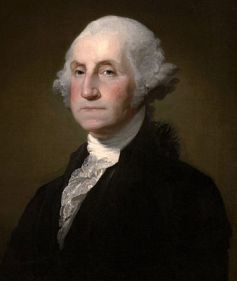
- He was the only president unanimously elected. Meaning all of the state representatives voted for him.
- He never served as president in Washington D.C., the capital that was named for him. In his first year the capital was in New York City, then moved to Philadelphia, Pennsylvania.
- He was six feet tall, which was very tall for the 1700s.
- The story of George Washington chopping down his father's cherry tree is considered fiction and likely never happened.
- George Washington did not have wooden teeth, but did wear dentures made from ivory.
- Washington gave freedom to his slaves in his will.
- Listen to a recorded reading of this page:
share this!
March 28, 2024
This article has been reviewed according to Science X's editorial process and policies . Editors have highlighted the following attributes while ensuring the content's credibility:
fact-checked
peer-reviewed publication
trusted source
DNA study IDs descendants of George Washington from unmarked remains
by Cell Press
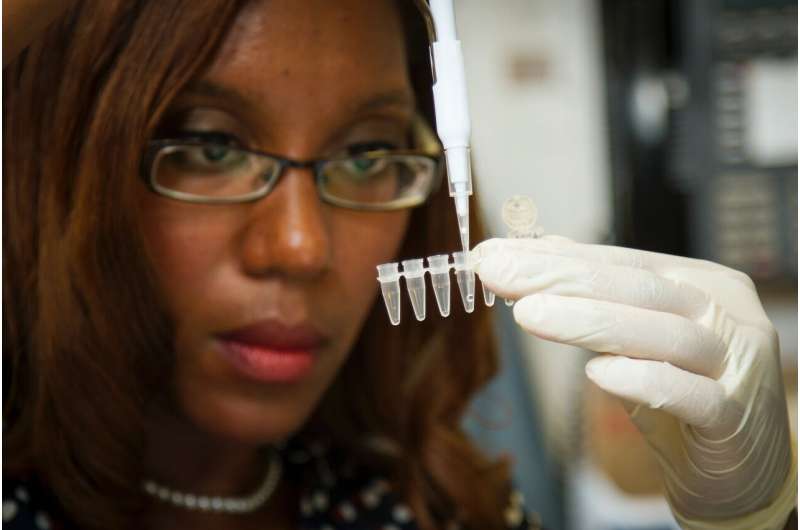
New DNA sequencing technologies have identified the historical remains of George Washington's grandnephews, Samuel Walter Washington and George Steptoe Washington Jr., and their mother, Lucy Payne Washington, from unmarked, fragmentary bones left at the Harewood family cemetery in Charles Town, West Virginia, in the mid-1800s.
In addition to enabling the remains in question to be reunited and reburied if desired, the researchers plan to apply the validated DNA analysis techniques to their ongoing efforts to identify the remains of service members lost around the world in past conflicts going back to World War II. The findings appear in the journal iScience .
"The ability to test historical samples such as the Harewood Cemetery remains allows us to evaluate and improve the methodologies applied to our casework samples that are of similar quality to historical remains, and often times even more degraded," says first author Courtney Cavagnino of the Armed Forces Medical Examiner System's Armed Forces DNA Identification Laboratory (AFMES-AFDIL) at the Dover Air Force Base.
"This particular case gave us an opportunity to test methods for extended kinship prediction that we developed using a set of known, degraded DNA samples needing identity confirmation," says senior author Charla Marshall, Deputy Director of DoD DNA Operations. "Our laboratory is currently validating these novel methods to be used in routine casework."
AFMES-AFDIL is the Department of Defense's only human remains DNA laboratory, supporting current-day operations as well as the Defense POW/MIA Accounting Agency's (DPAA) mission to identify service members from past conflicts extending back to World War II. In the new study, the AFMES-AFDIL team set out to identify remains from unmarked grave sites at Harewood Cemetery.
To confirm the suspected identities of the recovered remains, they performed a range of DNA tests of the remains together with analyses of the DNA from a living descendant, S.W. Washington.
The methods included Y chromosome DNA analysis to assess paternal relationships, mitochondrial DNA sequencing to assess maternal relationships, and a newly developed method to analyze next-generation sequencing (NGS) data including about 95,000 nuclear single-nucleotide polymorphisms (SNPs) to predict more distant ancestry.
Their pairwise kinship comparisons between the living descendant, S.W. Washington, and the three buried individuals predicted relationships one degree closer than anticipated, they note. While that was a surprise, they were able to figure out that was due to cross-cousin marriages in the Washington family tree.
"Our data confirmed the identities of the three sets of remains, and we furthermore resolved which male was the direct ancestor of S.W. Washington, the living descendant," Marshall said.
The most common method used for DNA profiling in forensics is known as short tandem repeat (STR) analysis. But STR typing is often impossible to use with degraded remains, especially those preserved with post-war embalming techniques involving formaldehyde, Marshall says. Their newly developed methods now open the door to new ways of making a positive ID in these more difficult cases, including those involving service members lost in past conflicts whose remains contain only heavily degraded DNA.
"These SNP methods will provide us with a method of positive identification from nuclear DNA," Marshall says.
"Very importantly, these methods will allow us to expand our pool of viable family reference sample donors to 3rd and 4th degree relatives in an effort to increase the number of DNA-assisted identifications, particularly those of past conflicts such as World War II, Korea, Cold War, and Southeast Asia/Vietnam."
Journal information: iScience
Provided by Cell Press
Explore further
Feedback to editors

AI improves monsoon rainfall predictions
4 hours ago

82% of EU farm subsidies bolster high emissions foods: Study

Leaves of three, let it be? Wide variability among poison ivy plants makes identification more challenging

Golfers' risk from pesticides used on turf grass is likely low, studies find

'Frankenstein design' enables 3D printed neutron collimator

New antibiotic class effective against multidrug-resistant bacteria discovered
5 hours ago

Computational tools fuel reconstruction of new and improved bird family tree

New method reveals hidden activity of life below ground

A frozen chunk of genome rewrites our understanding of bird evolution

Engineers 'symphonize' cleaner ammonia production
Relevant physicsforums posts, iceland warming up again - quakes swarming.
Mar 30, 2024
Unlocking the Secrets of Prof. Verschure's Rosetta Stones
Mar 29, 2024
‘Our clouds take their orders from the stars,’ Henrik Svensmark on cosmic rays controlling cloud cover and thus climate
Mar 27, 2024
Higher Chance to get Lightning Strike by Large Power Consumption?
Mar 20, 2024
A very puzzling rock or a pallasite / mesmosiderite or a nothing burger
Mar 16, 2024
Earth's earliest forest discovered in SW England
Mar 8, 2024
More from Earth Sciences
Related Stories

One of sunken warship Vasa's crewmen was a woman
Apr 4, 2023
Remains of Ohio fighter pilot shot down in WWII identified
Jan 12, 2023

Genetic identification of human remains from the Spanish Civil War and the dictatorship
Jan 22, 2020

DNA to X-ray: Military has variety of tools to ID remains
Jul 27, 2018

Scientist: Progress in identifying Tulsa massacre victims
Apr 12, 2023
More fragments from 1952 crash in Alaska found in glacier
Jun 27, 2020
Recommended for you

Stingray sand 'sculpture' in South Africa may be oldest example of humans creating an image of another creature
7 hours ago

Q&A: Archaeologist's fieldwork finds movement of crops, animals played a key role in domestication

Ancient DNA reveals the appearance of a 6th century Chinese emperor
Mar 28, 2024

Study reveals evidence of violence at a time of crisis in ancient Peru

Elephant hunting by early humans may explain proximity between extensive Paleolithic stone quarries and water sources
Mar 26, 2024

Dig site findings suggests ancient artists may have been inspired by preserved dinosaur footprints
Mar 25, 2024
Let us know if there is a problem with our content
Use this form if you have come across a typo, inaccuracy or would like to send an edit request for the content on this page. For general inquiries, please use our contact form . For general feedback, use the public comments section below (please adhere to guidelines ).
Please select the most appropriate category to facilitate processing of your request
Thank you for taking time to provide your feedback to the editors.
Your feedback is important to us. However, we do not guarantee individual replies due to the high volume of messages.
E-mail the story
Your email address is used only to let the recipient know who sent the email. Neither your address nor the recipient's address will be used for any other purpose. The information you enter will appear in your e-mail message and is not retained by Phys.org in any form.
Newsletter sign up
Get weekly and/or daily updates delivered to your inbox. You can unsubscribe at any time and we'll never share your details to third parties.
More information Privacy policy
Donate and enjoy an ad-free experience
We keep our content available to everyone. Consider supporting Science X's mission by getting a premium account.
E-mail newsletter

George Washington family secrets revealed by DNA from unmarked 19th century graves
Sign up for CNN’s Wonder Theory science newsletter. Explore the universe with news on fascinating discoveries, scientific advancements and more .
Genetic analysis has shed light on a long-standing mystery surrounding the fates of President George Washington’s younger brother Samuel and his kin. Two of Samuel’s descendants and their mother were recently identified from skeletal remains found in unmarked burials dating back to the 1880s. The investigation also provided the first patrilineal DNA map for the first US president, who had no children of his own.
Researchers pinpointed key ancestry details through several types of DNA analysis, including a new technique that analyzed tens of thousands of points of genomic data called single nucleotide polymorphisms, or SNPs, which are variations in the genetic sequence affecting just one nucleotide, a building block of DNA.
Another key component was DNA from a living descendant of Samuel Washington. By comparing the descendant’s pristine DNA with degraded, centuries-old DNA in bone fragments, the scientists uncovered clues about long-lost identities and connections in the Washington family, researchers reported Thursday in the journal iScience .
“The multitude of these methods allowed us to reveal relationships between unidentified human remains from the mid-19th century and a living descendant who was several generations removed from his ancestors,” said senior study author Charla Marshall, a molecular anthropologist and deputy director of the US Department of Defense DNA Operations and US Armed Forces Medical Examiner System’s Armed Forces DNA Identification Laboratory, in an email.
These techniques could also help identify unknown remains from people who served in the military, going as far back as World War II, according to the study.
Buried in unmarked graves
Samuel Washington, more than two years younger than George, died in 1781 and was buried in the cemetery at his Harewood estate near Charles Town, West Virginia. Records showed that Harewood cemetery held 20 members of the Washington family, “including Samuel Washington and two of his wives, their children, grandchildren, and great-grandchildren, among others,” said lead study author Courtney L. Cavagnino, a research scientist with the Armed Forces Medical Examiner System’s Armed Forces DNA Identification Laboratory.
But unlike George Washington, who is interred in a magnificent marble tomb in Mount Vernon, Virginia, Samuel’s grave was unmarked, likely to protect it from grave robbers, Cavagnino told CNN in an email. Other graves also lacked headstones, leaving modern historians uncertain about who was buried where.
Researchers excavated five unmarked graves at the cemetery in 1999 in an effort to find Samuel Washington’s resting place. They recovered small bones and teeth from three burials, but DNA testing at the time was inconclusive, with the samples badly degraded and contaminated with bacteria.
Fortunately for the authors of the new study, “DNA analysis has come a long way since the early 2000s,” Cavagnino said. They combined techniques that optimized the shortened strands of damaged DNA from the remains, allowing them to extract the genetic material they needed. Maternal relationships were determined through mitochondrial DNA sequencing, while paternal relationships were found by looking at Y chromosomes. Further details came from 95,000 SNPs, an enormous volume of data targeting autosomal DNA (DNA that isn’t attached to sex chromosomes).
Genetic data first established that the remains were a woman and her two sons; records further clarified that the woman was Lucinda “Lucy” Payne, and the males were Samuel’s grandsons (and George’s grandnephews): George Steptoe Washington Jr. and Dr. Samuel Walter Washington. The living descendant’s DNA was a closer match to that of Dr. Samuel Walter Washington.
Not only did this data establish that the deceased doctor was the living Washington’s great-great-grandfather, it also showed which remains belonged to which brother, which would otherwise have been impossible to establish with certainty, the scientists said.
Recovered identities
In 1882, the remains of several people had been disinterred from Harewood and moved to graves at Zion Episcopal Church in Charles Town. Among them were Lucy Payne and her sons. But some of their bones were left behind; by the time the 1999 excavation recovered them, it was unclear to whom they belonged. Now, nearly 150 years later, the identities of those remains have finally been settled.
“The combination of deceased and living relatives made this study a wonderful puzzle, where you had to work hard to figure it out but you had all the necessary pieces,” said Connie J. Mulligan , a professor in the department of anthropology and coordinator of the Genetics and Genomics Graduate Program at the University of Florida. Mulligan, who studies genetic variations to understand how DNA shapes health and disease, was not involved in the research.
The living descendant, Samuel Walter Washington, who is the current owner of Harewood estate, turned out to have more DNA in common with the two deceased brothers than the researchers expected. They attributed this to pedigree collapse — when marriages between relatives shortens the number of ancestors — caused by multiple cross-cousin marriages in the Washington family tree.
“The cross-cousin marriages impacted only the brothers’ kinship relationships and not their mother’s, who married into the family,” Mulligan told CNN. “I don’t know of any study that’s had a dataset as cool as this one, with the complexity in the pedigree so you could use empirical data to test how the interrelatedness changed the estimates of kinship relatedness.” The study, she added, “was a combination of cutting-edge science and great detective work!”
The researchers’ analysis also produced the first Y-chromosomal DNA profile for George Washington, as male individuals in the study — living and deceased — “were all direct paternal descendants of Augustine Washington, the father of George Washington,” Marshall said. This profile could clarify genealogical relationships among people who inherited the Washington surname but are uncertain of their familial connections “to determine who is paternally related to George Washington himself,” the study authors wrote.
But while the findings offer many new insights, the question that launched the 1999 excavation remains: Where is George’s brother buried? Samuel’s grave has not yet been discovered, nor have any of his remains been identified, according to Marshall. At this point, she added, his whereabouts may be lost for good.
“The search for Samuel Washington’s grave is no longer underway,” Marshall said. “It is possible that his grave was exhumed long ago, and may never be found again.”
Mindy Weisberger is a science writer and media producer whose work has appeared in Live Science, Scientific American and How It Works magazine.
For more CNN news and newsletters create an account at CNN.com
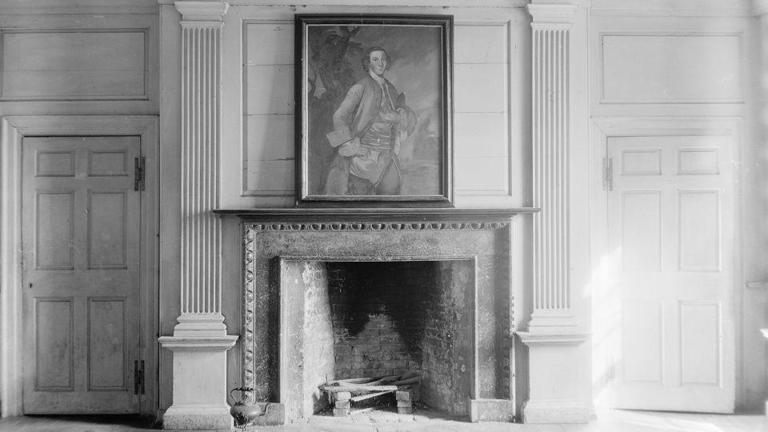
DNA study IDs descendants of George Washington from unmarked remains, findings to aid service member IDs going back to World War II
New DNA sequencing technologies have identified the historical remains of George Washington's grandnephews, Samuel Walter Washington and George Steptoe Washington Jr., and their mother, Lucy Payne Washington, from unmarked, fragmentary bones left at the Harewood family cemetery in Charles Town, West Virginia, in the mid-1800s.
In addition to enabling the remains in question to be reunited and reburied if desired, the researchers plan to apply the validated DNA analysis techniques to their ongoing efforts to identify the remains of service members lost around the world in past conflicts going back to World War II. The findings appear March 28 in the journal iScience .
"The ability to test historical samples such as the Harewood Cemetery remains allows us to evaluate and improve the methodologies applied to our casework samples that are of similar quality to historical remains, and often times even more degraded," says first author Courtney Cavagnino of the Armed Forces Medical Examiner System's Armed Forces DNA Identification Laboratory (AFMES-AFDIL) at the Dover Air Force Base.
"This particular case gave us an opportunity to test methods for extended kinship prediction that we developed using a set of known, degraded DNA samples needing identity confirmation," says senior author Charla Marshall, Deputy Director of DoD DNA Operations. "Our laboratory is currently validating these novel methods to be used in routine casework."
AFMES-AFDIL is the Department of Defense's only human remains DNA laboratory, supporting current-day operations as well as the Defense POW/MIA Accounting Agency's (DPAA) mission to identify service members from past conflicts extending back to World War II. In the new study, the AFMES-AFDIL team set out to identify remains from unmarked grave sites at Harewood Cemetery.
To confirm the suspected identities of the recovered remains, they performed a range of DNA tests of the remains together with analyses of the DNA from a living descendant, S.W. Washington. The methods included Y chromosome DNA analysis to assess paternal relationships, mitochondrial DNA sequencing to assess maternal relationships, and a newly developed method to analyze next generation sequencing (NGS) data including about 95,000 nuclear single-nucleotide polymorphisms (SNPs) (places in the genome where there is a single-letter typo) to predict more distant ancestry.
Their pairwise kinship comparisons between the living descendant, S.W. Washington, and the three buried individuals predicted relationships one degree closer than anticipated, they note. While that was a surprise, they were able to figure out that was due to cross-cousin marriages in the Washington family tree.
"Our data confirmed the identities of the three sets of remains, and we furthermore resolved which male was the direct ancestor of S.W. Washington, the living descendant," Marshall said.
The most common method used for DNA profiling in forensics is known as short tandem repeat (STR) analysis. But STR typing is often impossible to use with degraded remains, especially those preserved with post-war embalming techniques involving formaldehyde, Marshall says. Their newly developed methods now open the door to new ways of making a positive ID in these more difficult cases, including those involving service members lost in past conflicts whose remains contain only heavily degraded DNA.
"These SNP methods will provide us with a method of positive identification from nuclear DNA," Marshall says. "Very importantly, these methods will allow us to expand our pool of viable family reference sample donors to 3 rd and 4 th degree relatives in an effort to increase the number of DNA-assisted identifications, particularly those of past conflicts such as World War II, Korea, Cold War, and Southeast Asia/Vietnam."
- Human Biology
- Epigenetics
- Ancient DNA
- Early Humans
- Anthropology
- Trace fossil
- The Genographic Project
- Maternal bond
- DNA microarray
- Bitemporal hemianopsia
Story Source:
Materials provided by Cell Press . Note: Content may be edited for style and length.
Journal Reference :
- Courtney Cavagnino, Göran Runfeldt, Michael Sager, Roberta Estes, Andreas Tillmar, Ellen M. Greytak, Jacqueline Tyler Thomas, Elise Anderson, Jennifer Daniels-Higginbotham, Katelyn Kjelland, Kimberly Sturk-Andreaggi, Thomas J. Parsons, Timothy P. McMahon, Charla Marshall. Unearthing who and Y at Harewood Cemetery and inference of George Washington’s Y-chromosomal haplotype . iScience , 2024; 109353 DOI: 10.1016/j.isci.2024.109353
Cite This Page :
Explore More
- Simple Brain-Computer Link: Gaming With Thoughts
- Clinical Reasoning: Chatbot Vs Physicians
- Understanding People Who Can't Visualize
- Illuminating Oxygen's Journey in the Brain
- DNA Study IDs Descendants of George Washington
- Heart Disease Risk: More Than One Drink a Day
- Unlocking Supernova Stardust Secrets
- Why Do Some Memories Become Longterm?
- Cell Division Quality Control 'Stopwatch'
- What Controls Sun's Differential Rotation?
Trending Topics
Strange & offbeat.

IMAGES
VIDEO
COMMENTS
Learn about the life and achievements of George Washington, the first president of the United States and a Founding Father. Explore his early years, military career, political legacy and quotes.
George Washington, American general and commander-in-chief of the colonial armies in the American Revolution (1775-83) and subsequently first president of the United States (1789-97). He is known as 'the Father of His Country.' Learn more about Washington's life and career.
George Washington (February 22, 1732 - December 14, 1799) was an American Founding Father, military officer, and politician who served as the first president of the United States from 1789 to 1797. Appointed by the Second Continental Congress as commander of the Continental Army in 1775, Washington led Patriot forces to victory in the American Revolutionary War and then served as president ...
Learn about the life, war, and presidency of George Washington, the first American general, president, and national hero. Explore his early years, his role in the Revolutionary War, his achievements as the first president, and his legacy.
George Washington spent the years between 1759 and 1775 overseeing the farms at Mount Vernon. Washington worked constantly to improve and expand the mansion house and its surrounding plantation. He established himself as an innovative farmer, who switched from tobacco to wheat as his main cash crop in the 1760's.
George Washington (1732-99) was commander in chief of the Continental Army during the American Revolutionary War (1775-83) and served two terms as the first U.S. president, from 1789 to 1797.
George Washington. On February 22, 1732, George was born to Augustine and Mary Ball Washington. He spent most of his childhood at Ferry Farm on the Rappahannock River. All of the homes and plantations where Washington lived were maintained by enslaved labor. When George was eleven, his father died and he became a slave owner.
George Washington was born to Mary Ball and Augustine Washington on February 22, 1732. As the third son of a middling planter, George probably should have been relegated to a footnote in a history book. Instead, he became one of the greatest figures in American history. A series of personal losses changed the course of George's life.
The biography for President Washington and past presidents is courtesy of the White House Historical Association. On April 30, 1789, George Washington, standing on the balcony of Federal Hall on ...
Feb. 22, 1732 George Washington is born in a modest house at Popes Creek, Westmoreland County, Virginia. His father, Augustine, is a plantation owner who dies when George is 11. June 15, 1775 ...
George Washington, American general and commander-in-chief of the colonial armies in the American Revolution (1775-83) and subsequently first president of the United States (1789-97). He is known as 'the Father of His Country.' Learn more about Washington's life and career.
George Washington (February 22, 1732-December 14, 1799) was America's first president. He served as commander-in-chief of the Colonial Army during the American Revolution, leading the Patriot forces to victory over the British.In 1787 he presided at the Constitutional Convention, which determined the structure of the new government of the United States, and in 1789 he was elected its president.
It was decided that in a republic the simple salutation "Mr. President" would do. George Washington - Founding Father, 1st President, Revolutionary War: Viewing the chaotic political condition of the United States after 1783 with frank pessimism and declaring (May 18, 1786) that "something must be done, or the fabric must fall, for it is ...
t. e. The presidency of George Washington began on April 30, 1789, when Washington was inaugurated as the first president of the United States, and ended on March 4, 1797. Washington took office after the 1788-1789 presidential election, the nation's first quadrennial presidential election, in which he was elected unanimously by the Electoral ...
Date of Birth - Death February 22, 1732 - December 14, 1799. On December 14, 1799, George Washington, the first President of the United States, died at his home in Mount Vernon, Virginia. Congress commissioned Henry "Light-Horse Harry" Lee a fellow Virginian, army veteran, and friend to pen an appropriate eulogy.
Biography of George Washington. First American president, Continental Army commander, president of the Constitutional Convention, and more. Learn More. Youth. Little is known of George Washington's childhood, and it remains the most poorly understood part of his life. His early experiences working as a surveyor and in the Virginia company ...
George Washington - The Founding Father. George Washington, fondly referred to as the "father of his country," was the first President of the United States of America, the Commander in Chief of the Continental Army during the American War for Independence, and one of the U.S. Founding Fathers. His life began in the countryside of Westmoreland ...
The son of a landowner and planter, George Washington was born on February 22, 1732, in the British-ruled colony of Virginia. His father died when he was 11, and his older brother, Lawrence, helped raise him. Washington was educated in basic subjects including reading, writing, and mathematics, but he didn't attend college.
George Washington (1732-1799), the most celebrated person in American history, was born on 22 February 1732 on his father's plantation on Pope's Creek in Westmoreland county, Virginia. His father, Augustine, a third-generation English colonist firmly established in the middle ranks of the Virginia gentry, was twice married. He had two sons ...
George Washington was the First President of the United States. Served as President: 1789-1797. Vice President: John Adams. Party: Federalist. Age at inauguration: 57. Born: February 22, 1732 in Westmoreland County, Virginia. Died: December 14, 1799 in Mount Vernon, Virginia. Married: Martha Dandridge Washington. Children: none (2 stepchildren)
George Washington (February 22, 1732 [O.S. February 11, 1731] - December 14, 1799) was the first president of the United States (1789-1797), the commander-in-chief of the Continental Army during the American Revolutionary War, and one of the Founding Fathers of the United States.
Samuel Washington, George Washington's younger brother, was buried in an unmarked grave at the cemetery at his Harewood estate (an interior view is pictured above) near Charles Town, West Virginia.
New DNA sequencing technologies have identified the historical remains of George Washington's grandnephews, Samuel Walter Washington and George Steptoe Washington Jr., and their mother, Lucy Payne ...
Charles Lee (from December 10, 1795) George Washington - Revolutionary War, 1st President, Father of Country: Washington's administration of the government in the next eight years was marked by the caution, the methodical precision, and the sober judgment that had always characterized him. He regarded himself as standing aloof from party ...
Samuel Washington, George Washington's younger brother, was buried in an unmarked grave at the cemetery at his Harewood estate (an interior view is pictured above) near Charles Town, West Virginia.
George Washington Carver (c. 1864 - January 5, 1943) was an American agricultural scientist and inventor who promoted alternative crops to cotton and methods to prevent soil depletion. He was one of the most prominent black scientists of the early 20th century. While a professor at Tuskegee Institute, Carver developed techniques to improve types of soils depleted by repeated plantings of cotton.
George Washington (Popes Creek, Virginia, 1732. február 22. - Mount Vernon, Virginia, 1799. december 14.) amerikai politikus és katona, a függetlenségi háború főparancsnoka és az Egyesült Államok első elnöke 1789-től 1797-ig. Egyike az amerikai "alapító atyáknak", az USA egyik nemzeti hőse.Róla nevezték el az ország fővárosát és egyik tagállamát.
New DNA sequencing technologies have identified the historical remains of George Washington's grandnephews, Samuel Walter Washington and George Steptoe Washington Jr., and their mother, Lucy Payne ...